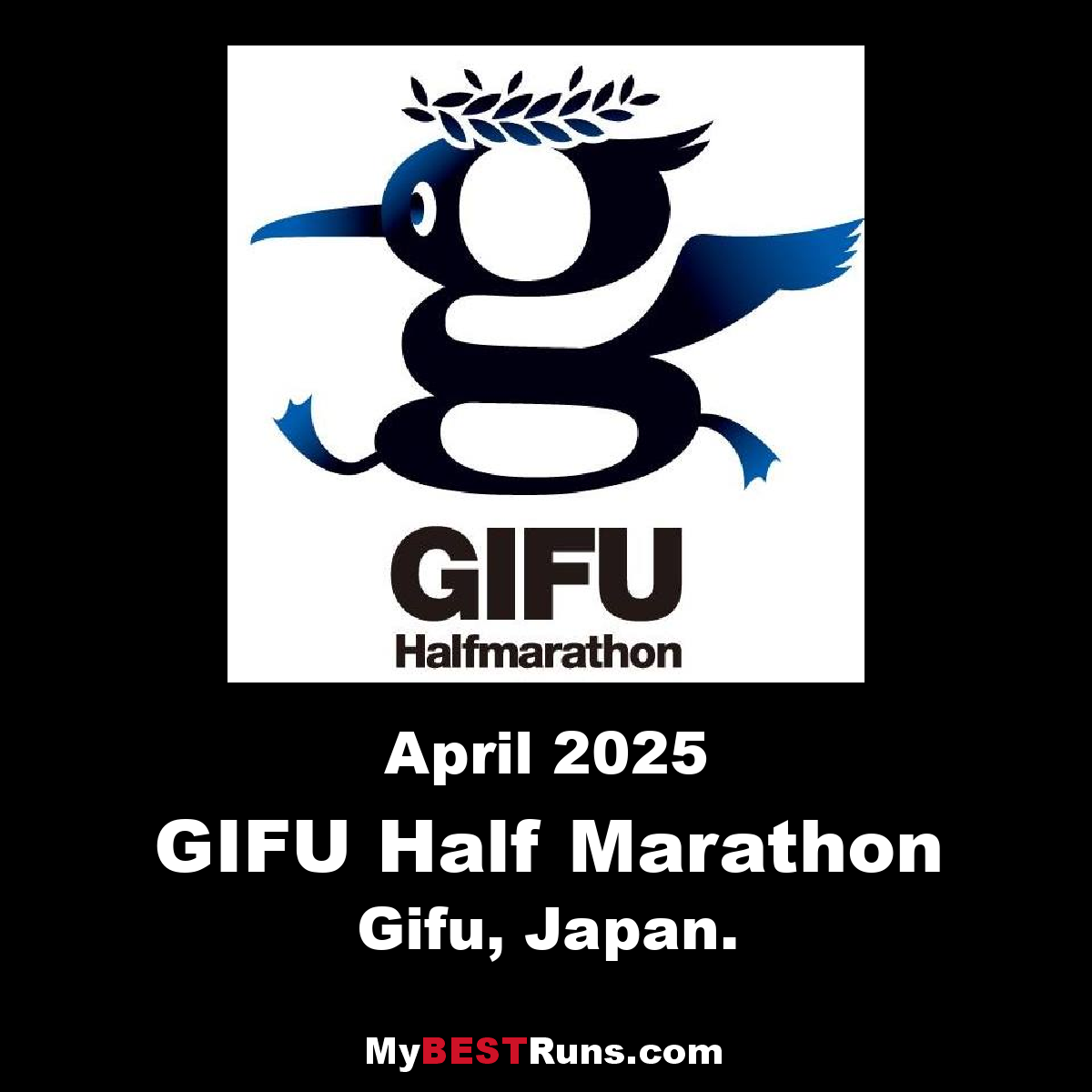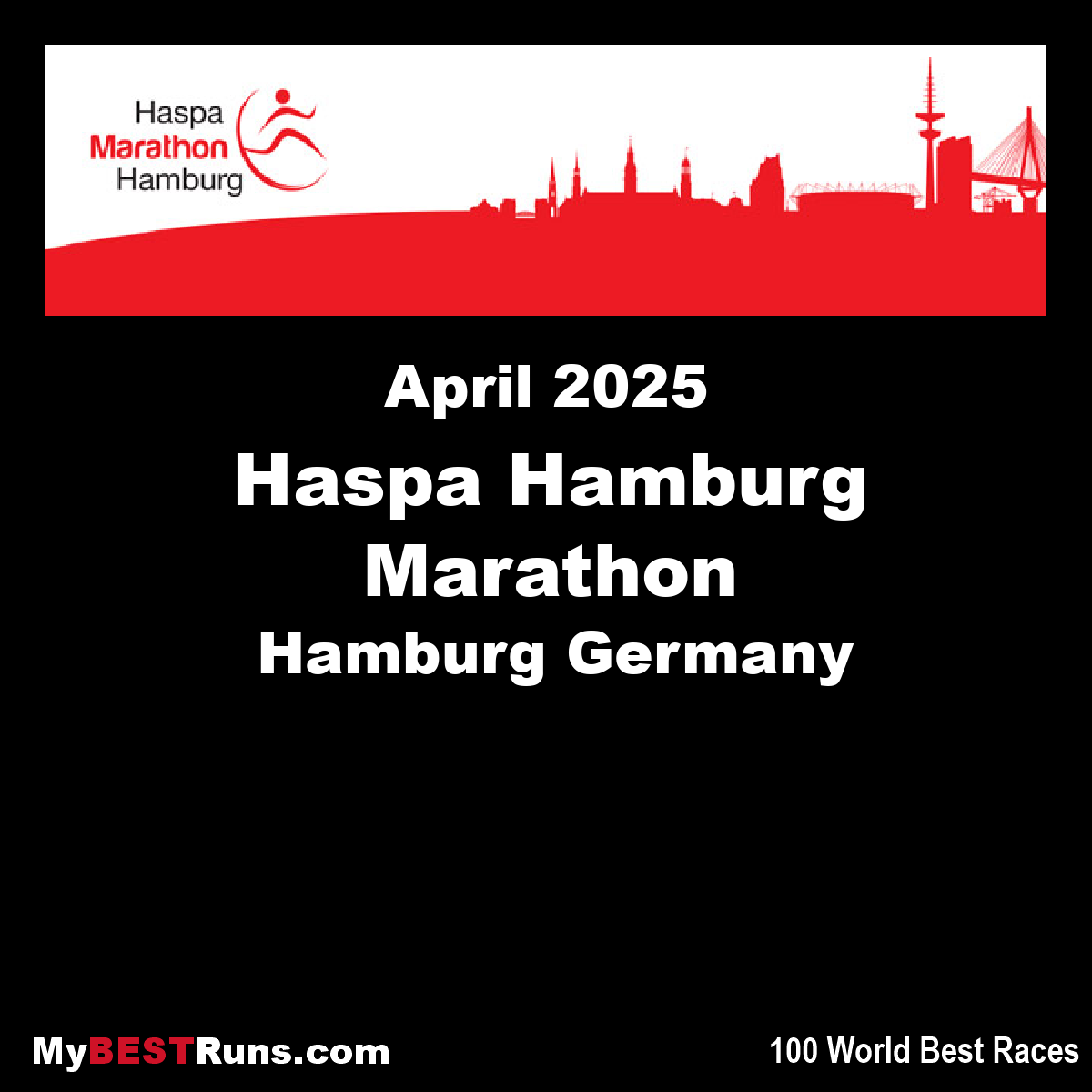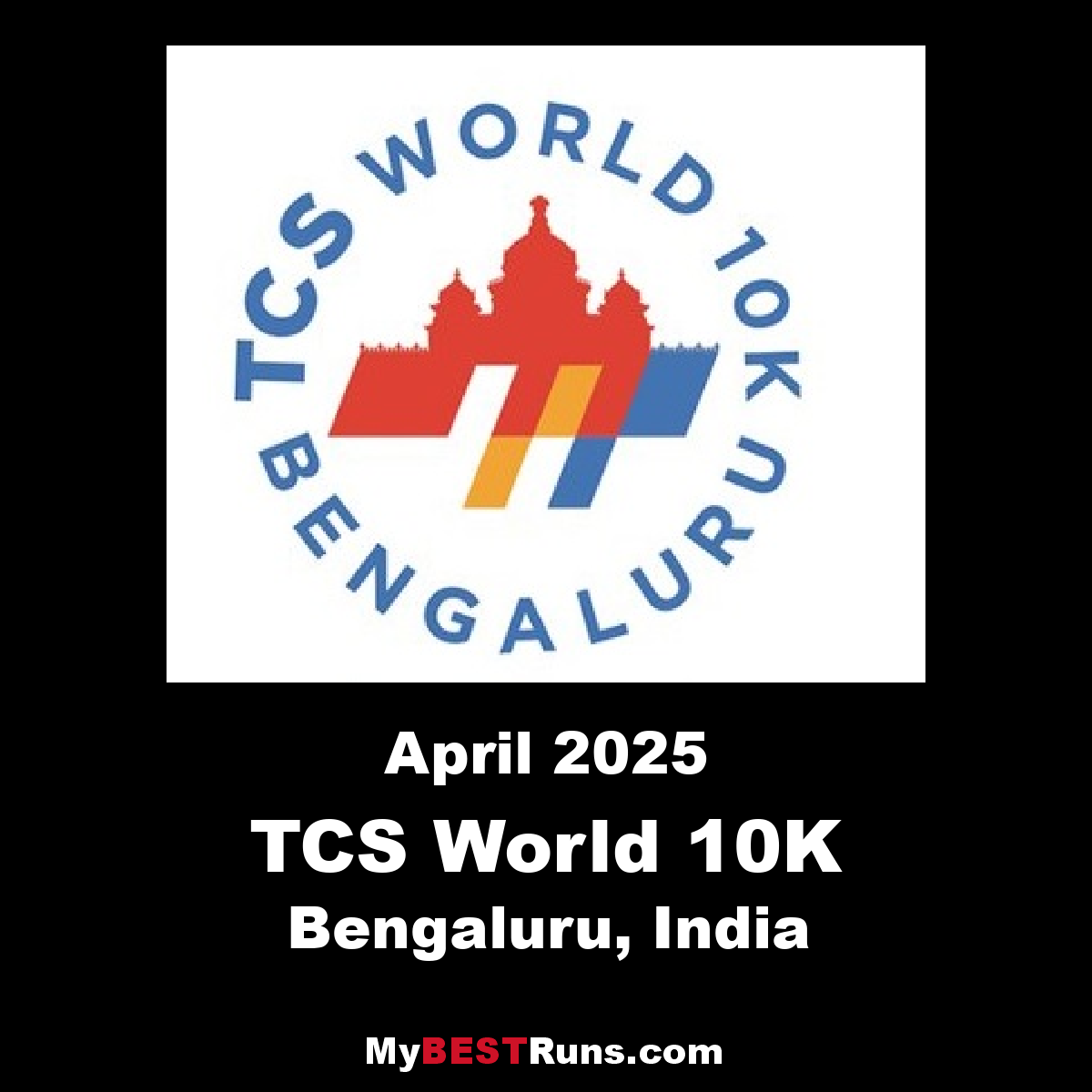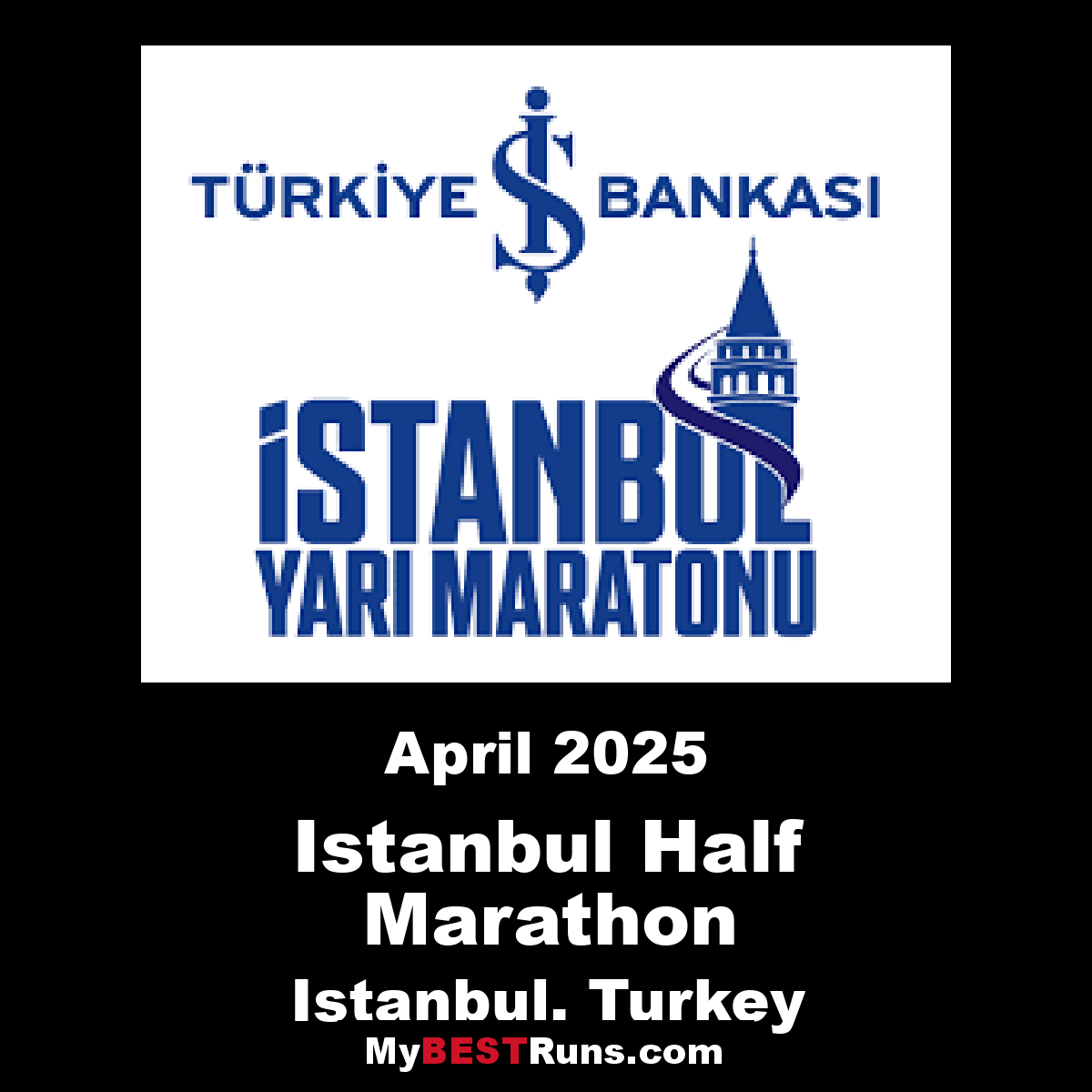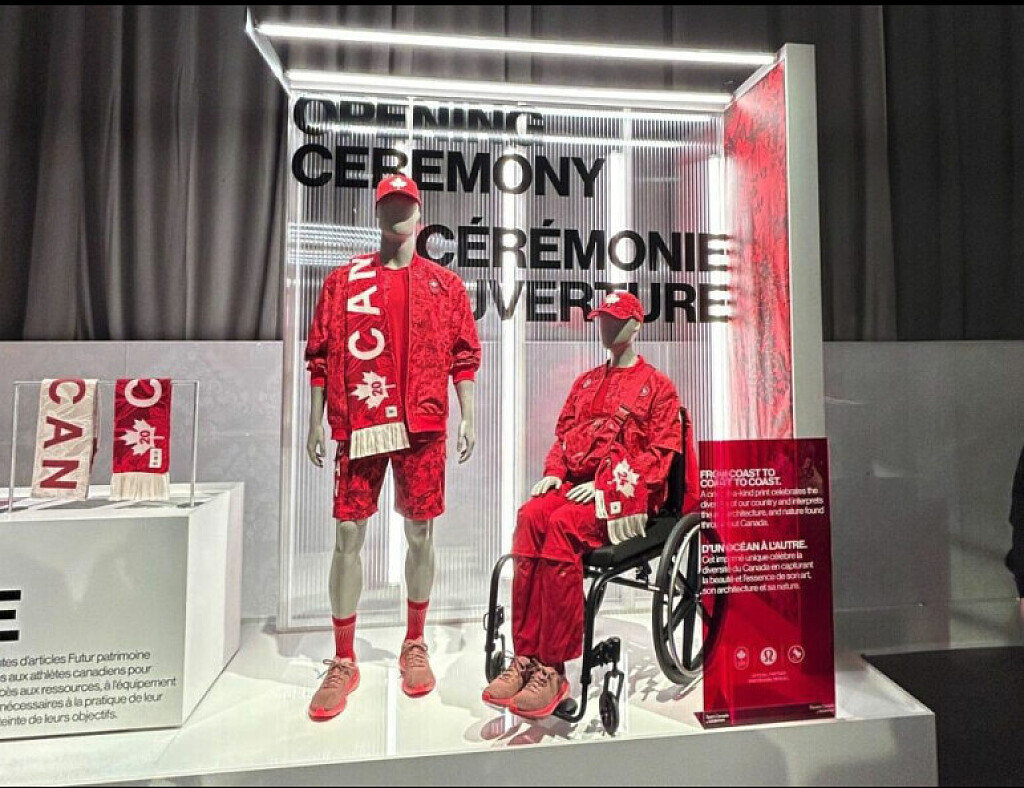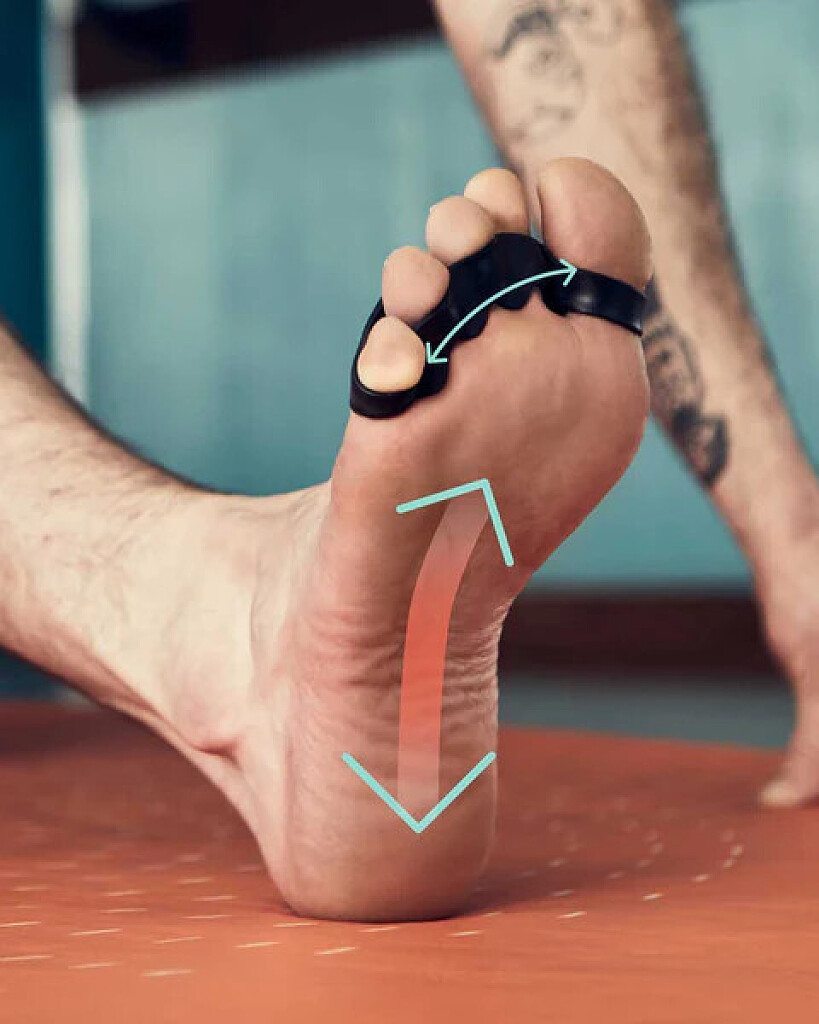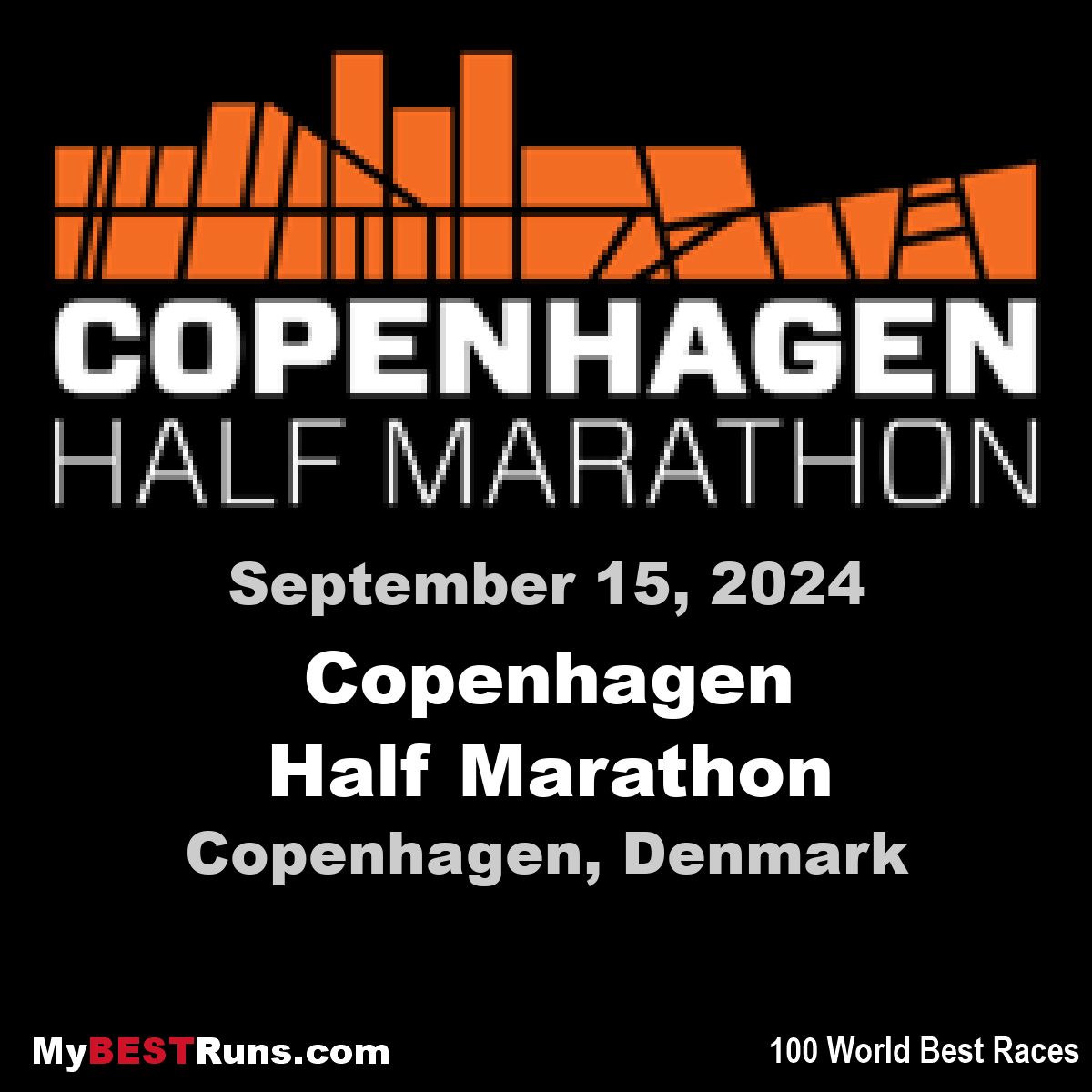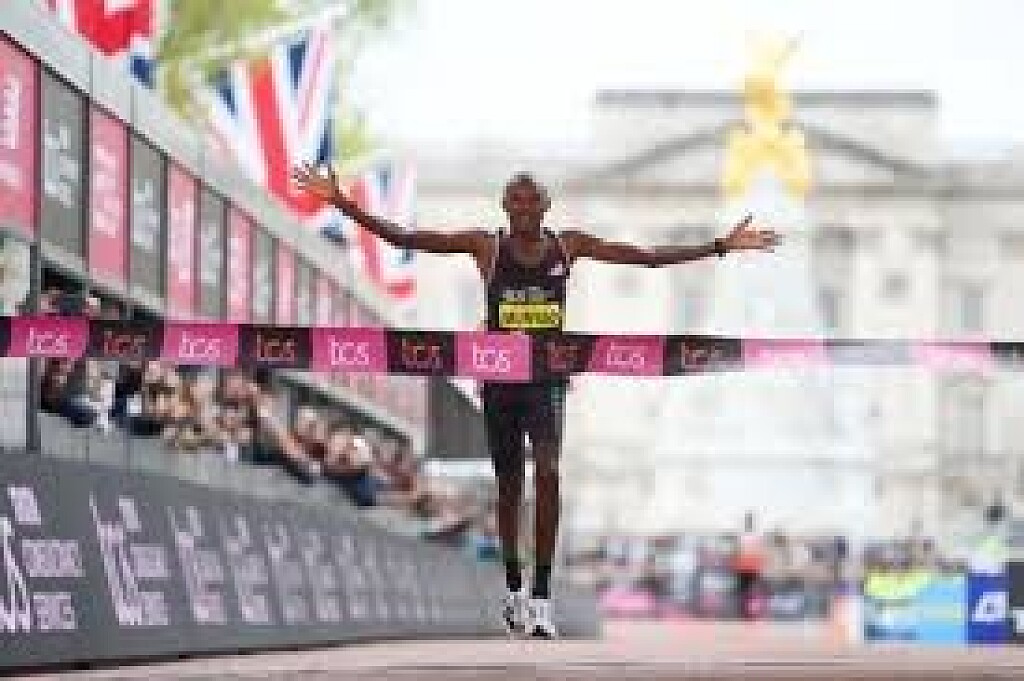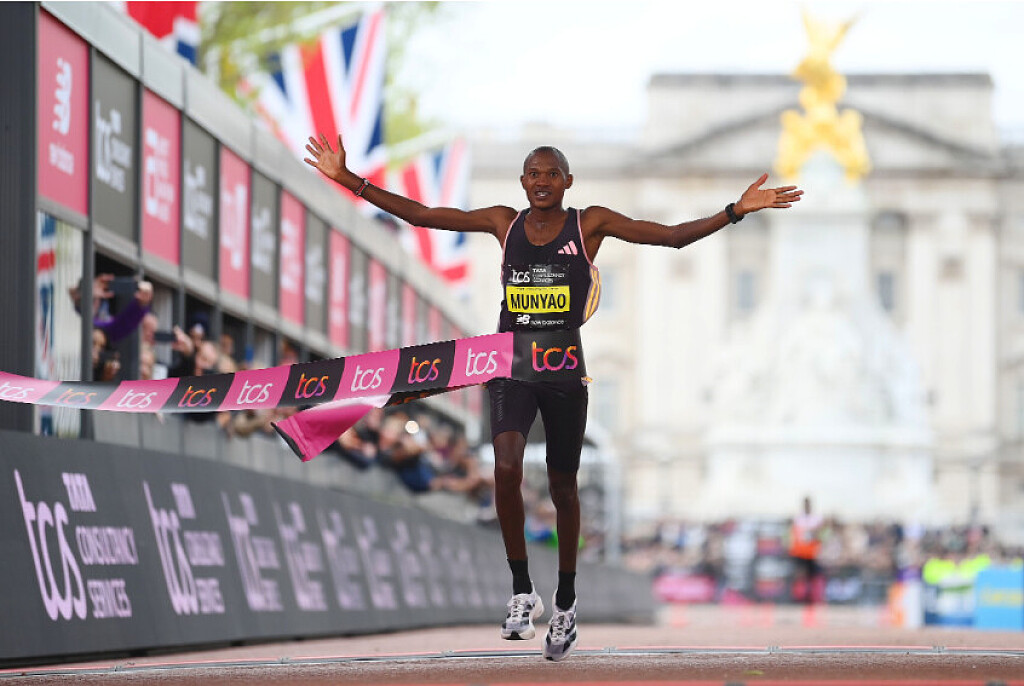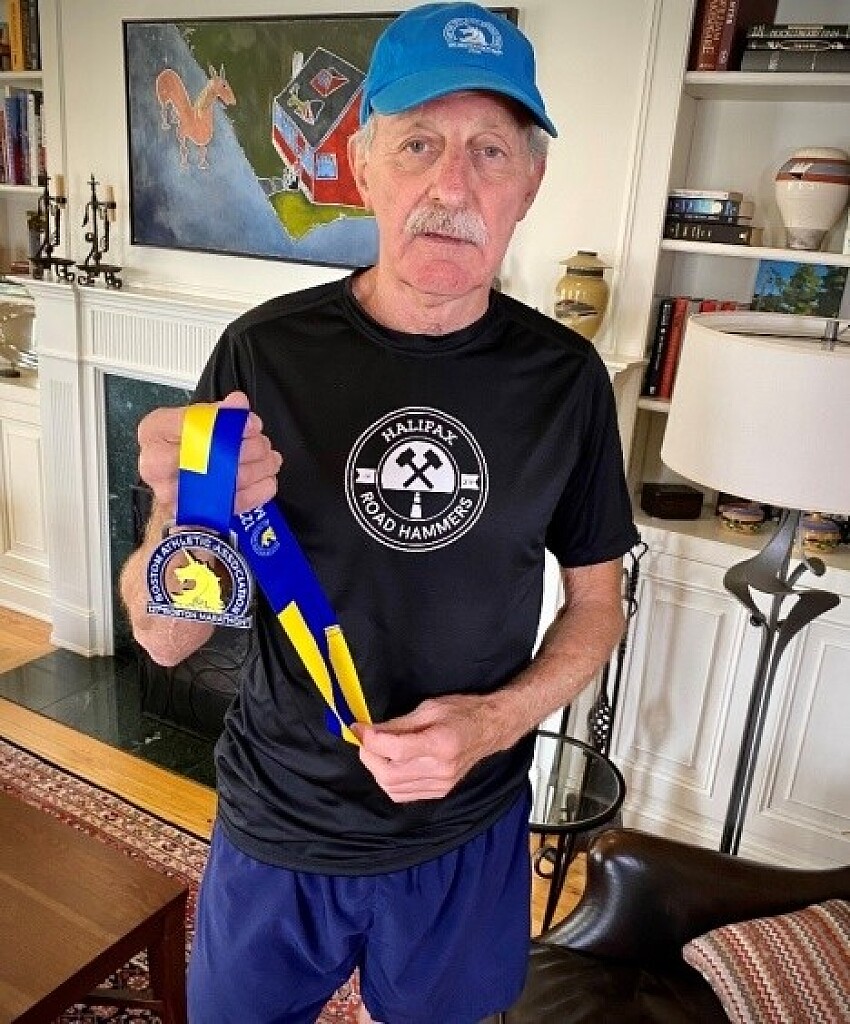Running News Daily
Running News Daily is edited by Bob Anderson. Send your news items to bob@mybestruns.com Advertising opportunities available. Train the Kenyan Way at KATA Kenya and Portugal owned and operated by Bob Anderson. Be sure to catch our movie A Long Run the movie KATA Running Camps and KATA Potato Farms - 31 now open in Kenya! https://kata.ke/
Index to Daily Posts · Sign Up For Updates · Run The World Feed
Jakob Ingebrigtsen’s father could face six years in prison for physical abuse
Gjert Ingebrigtsen has been charged by Norwegian police with one count of physical abuse after allegedly hitting one of his seven kids in the face with a wet towel in 2022.
On Monday, Norwegian police announced that Gjert Ingebrigtsen, father and former coach of 1,500m Olympic champion Jakob Ingebrigtsen, faces charges of domestic violence against a family member. Gjert could face up to six years in prison if found guilty.
In October 2023, Jakob, 23, and his older brothers Henrik, 33, and Filip, 31, who are also Olympic-level athletes, told the Norwegian newspaper VG that their father, who had coached them until 2022, had been physically violent.
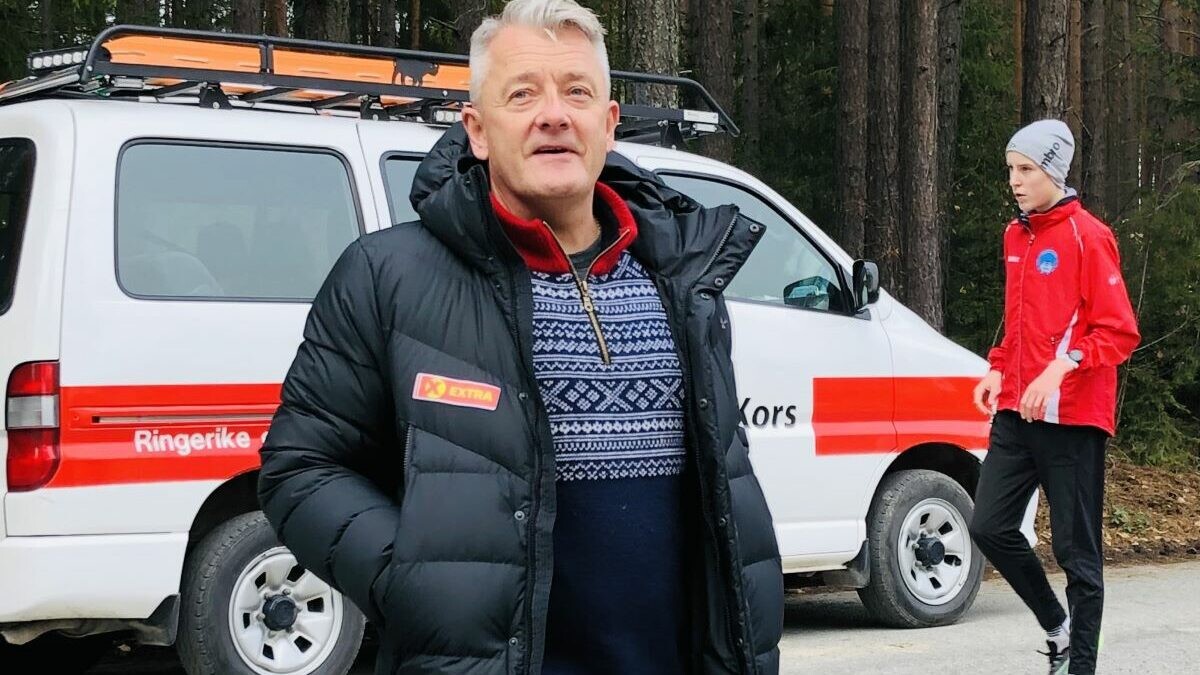
The 58-year-old denied the allegations, but Norwegian police, who had been investigating the case, said on Monday that Gjert had been charged with one count of physical abuse. According to a report in VG, the alleged abuse took place between 2018 and early 2022 and included threats, coercion and hitting one of his seven kids in the face with a wet towel.
Gjert Ingebrigtsen’s lawyer, John Christian Elden, told VG that his client disagrees with the presentation of the events and does not admit any criminal wrongdoing.
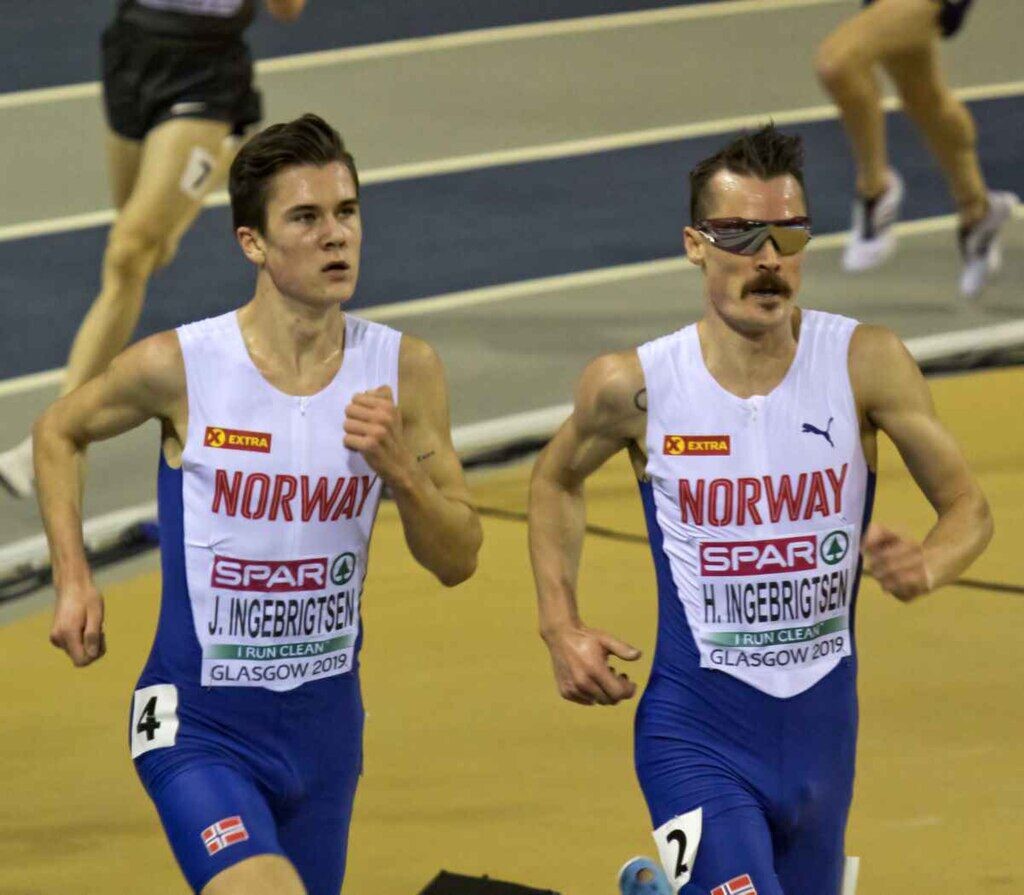
The police did not disclose the name of the child to the public. If found guilty, Ingebrigtsen could be facing up to six years in prison. No date for a trial has been set.
Gjert Ingebrigtsen was named the Norwegian sports coach of the year in 2018 after Jakob, Henrik, and Filip all won medals at the European Championships that year. The family had also been the subject of a TV documentary series, “Team Ingebregtsen,” aired by public broadcaster NRK for the five years leading up to the Tokyo Olympics.
Jakob is one of the biggest international stars in track and field, and was coached by his father since he began running. He broke ties with his father in 2022, and has been coached by his brother Henrik since then.
Gjert Ingebrigtsen recently started coaching another Norwegian runner, Narve Gilje Nordås, who won bronze in the men’s 1,500m behind Ingebrigtsen in Budapest. Gjert Ingebrigtsen was told by the Norwegian sports federation that he would not be allowed to be part of the Norwegian coaching staff at the 2024 Paris Olympics. He was also denied accreditation for the 2023 World Athletics Championships in Budapest, where Jakob won gold in the 5,000m and silver in the men’s 1,500m.
(04/30/2024) ⚡AMPby Marley Dickinson
Hillary Kipkoech and Stella Chesang win the Gifu Half Marathon
Hillary Kipkoech of Kenya and Stella Chesang of Uganda won the Gifu Half Marathon on Sunday in the times of 1:01:26 and 1:07:59 respectively.
The men

In the men’s race, Kipkoech, defending champion Amos Kurgat, and Timothy Kiplagat both of Kenya ran together with others and led from the beginning. In warm conditions, the lead runner in the pack kept changing, but around 14km, Kipkoech and Kurgat pulled away from the rest, and the battle for victory was narrowed down to the two runners.
At an uphill after the water station with 3km left to go, Kipkoech pulled away winning his first title of the Gifu Half Marathon in the time 1:01:26. Kurgat came in second in 1:01:38 and Kiplagat in third in 1:01:55.
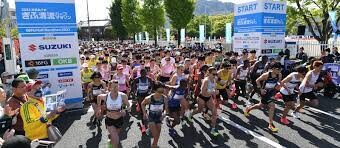
The top Japanese runner was Hideyuki Tanaka clocking a 1:02:31 finish time. The 33-year-old clocked a personal best in February during the Marugame Half Marathon with his 1:01:13 performance.
The women
In the women’s race, three powerful athletes of Chesang, two-time defending champion, Dolphine Nyaboke Omare of Kenya, and the 2023 Asian Games Champion Eunice Chebichii Chumba of Bahrain led the race. As Chumba started to lag behind at around 10km, the race turned into a two-women battle between Chesang and Omare.
The duo ran side by side until Chesang spurred off at around 18km to run solo. Chesang achieved her first victory in Gifu and a new personal best in 1:07:59. Omare finished in second in 1:08:31 and Chumba third in 1:09:10.
The top Japanese woman was Rinka Hida with her 1:12:07 performance. The 23-year-old set her best last year in Osaka at 1:10:10.
The 13th edition race was held under sunny, clear skies in an unprecedented heat of 28 degrees Celsius, making the city the stage for a ‘hot race’ both literally and figuratively.
(04/30/2024) ⚡AMPby Christopher Kelsall
Gifu Half Marathon
The Gifu Seiryu Half Marathon is an annual half marathon road running competition held in Gifu, Japan. First held in 2011, the race is also called the Naoko Takahashi Cup, named after Naoko Takashi, the retired local runner who won the marathon at the 2000 Sidney Olympics and broke the marathon world record in 2001, becoming the first woman to...
more...Tafa and Jebet triumph in the Madrid Marathon
Zurich Rock ‘n’ Roll Series Madrid 2024 was the biggest in the history of the event, with over 40,000 participants and Ethiopian Mitku Tafa (2:08:5) as the marathon winner, with the second place disputated among same country athlete Fikre Bekele (2:09:08) and Kenyan Douglas Chebii (2:09:10).
In the women race, Naom Jebet won (2:26:19) with a great distance from Ethiopian Bontu Bekele (2:27:03) and Kebene Chala (2:27:28).
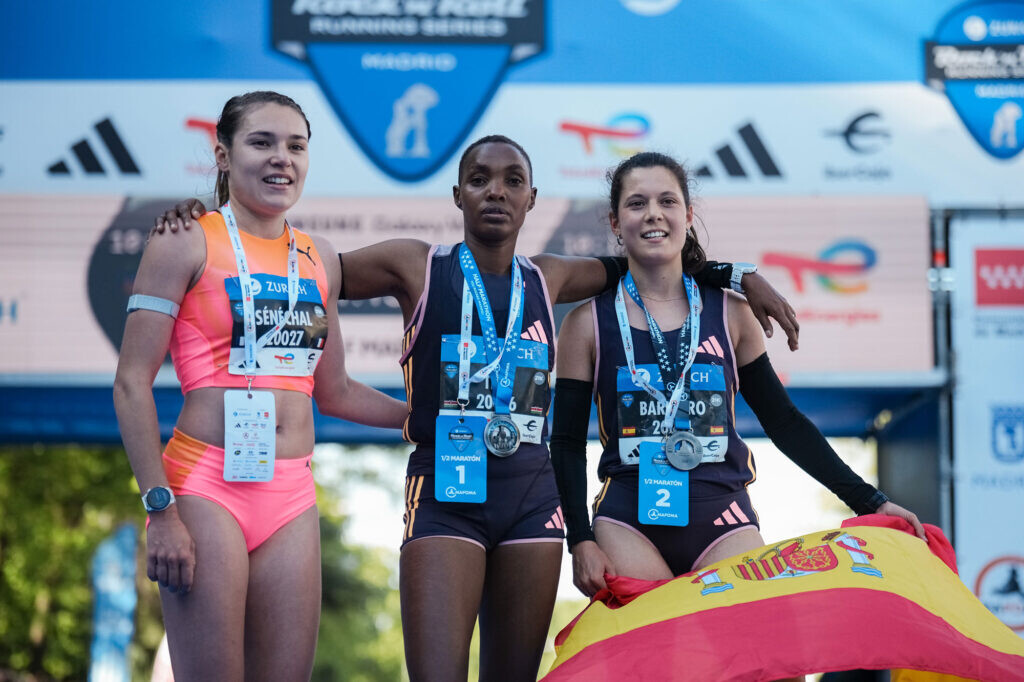
Shortly before half marathon winners were present on the finish line, with 3 slots of Kenyan runners on the male pódium (Amon Kiptoo, 1:02:25; Joseph Koech, 1:02:31 and Shamack Kiprop, 1:02:33) on a race won in the last meters. First Spanish was Tariku Novales (1:05:03). On female category victory was for Kenyan Joyece Chepkemoi (1:09:22), followed by Spanish Isabel Barreiro, superb debut on the distance and in Madrid (1:13:19) and French Mathilde Sénéchal.
Morning races started with 10K, with Carlos Mayo achieving his seventh victory on the 10K Zurich Rock ‘n’ Roll Running Series Madrid (29:10), after his competed race with Adam Maijó (2nd, 29:18) and third was Adrián Ben, 29:43.
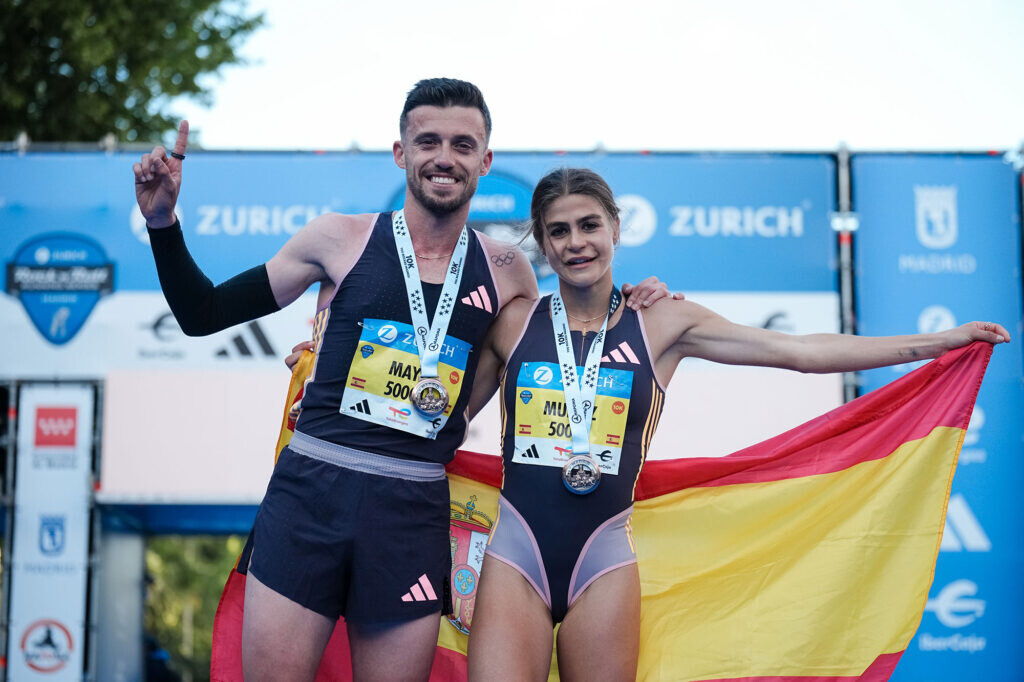
Aragonian Carlos Mayo suffered a car crash two weeks ago with no injuries and he only had some side pains but were not enough to get the victory.
On Women 10K, Águeda Marqués got her third victory in Madrid (33:31), with Marta Pérez following as second (33:49), third one was Paula Herrero, on the process of coming back after injuries (36:12).
Was a day for the History of the event, with over 40,000 runners among the three distances (10K, Half Marathon and Marathon), with over 6,000 participants from previous year and more tan 113 countries represented on the streets. The event also supposes over 48 million Euro of economic impact on the city of Madrid in 2023.
(04/29/2024) ⚡AMPby RNR Madrid
Rock n Roll Madrid Marathon
Tradition and much Rock ‘n’ Roll is what awaits you if you decide to run the 42K: vibrant, special and incredible journey that along which the flagship race of the capital of Spain. One of the top half marathons in Europe, Rock ‘n’ Roll Madrid EDP 1/2 Marathon does not disappoint. You will be cheered on by thousands of locals...
more...Agnes Ngetich reveals what cost her Agnes Tirop's world record by two seconds
Agnes Ngetich has reacted after missing out on the late Agnes Tirop's women's-only world record at the Adizero Road to Records.
Former World Cross Country bronze medalist Agnes Ngetich has expressed disappointment after missing the women’s-only 10km world record at the Adizero Road to Records on Saturday morning.
Ngetich cut the tape in 30:03 to cross the finish line ahead of reigning World Cross Country bronze medalist Margaret Chelimo who crossed the line in 30:39. Jesca Chelangat completed the podium, clocking an astonishing 30:46 to cross the line.
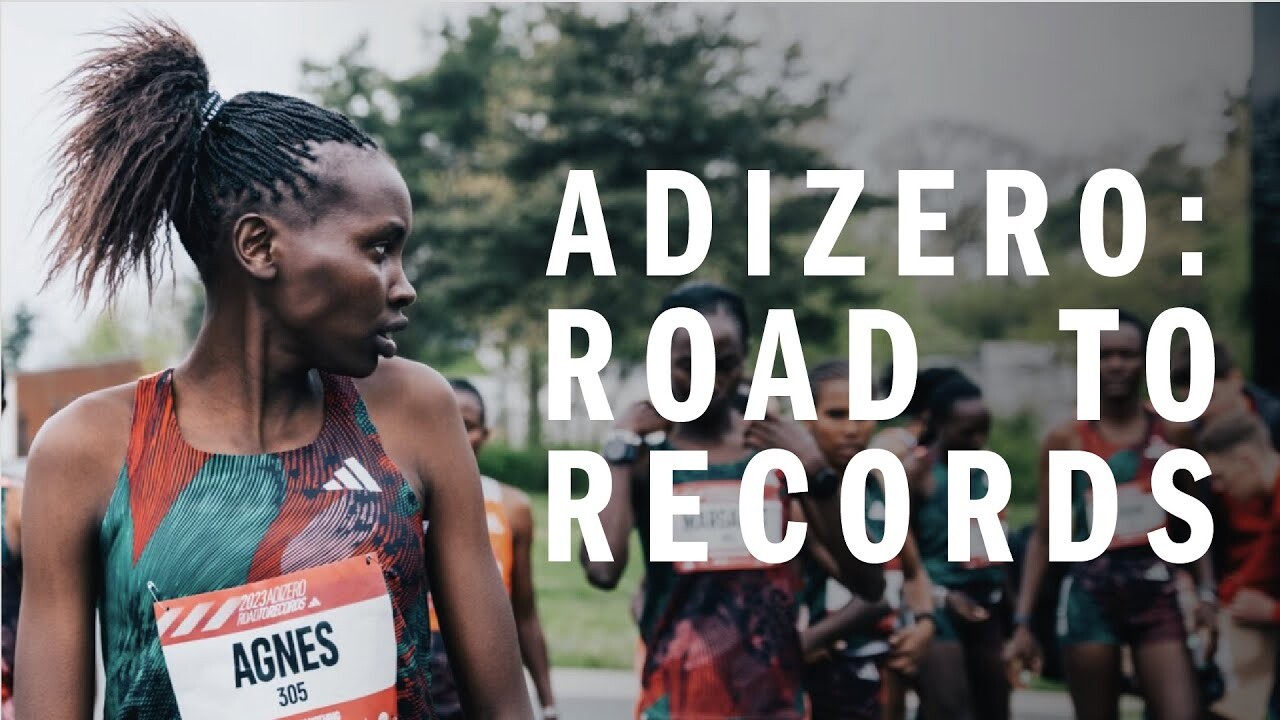
With her time, Ngetich missed the late Agnes Tirop’s world record of 30:01 by two seconds. The late Tirop set the record during the 2021 edition of the Adizero Road to Records that has stood since then before Ngetich threatened it.
Following her win, she complained about having worked alone and pushed herself throughout the race, something that cost her the world record.
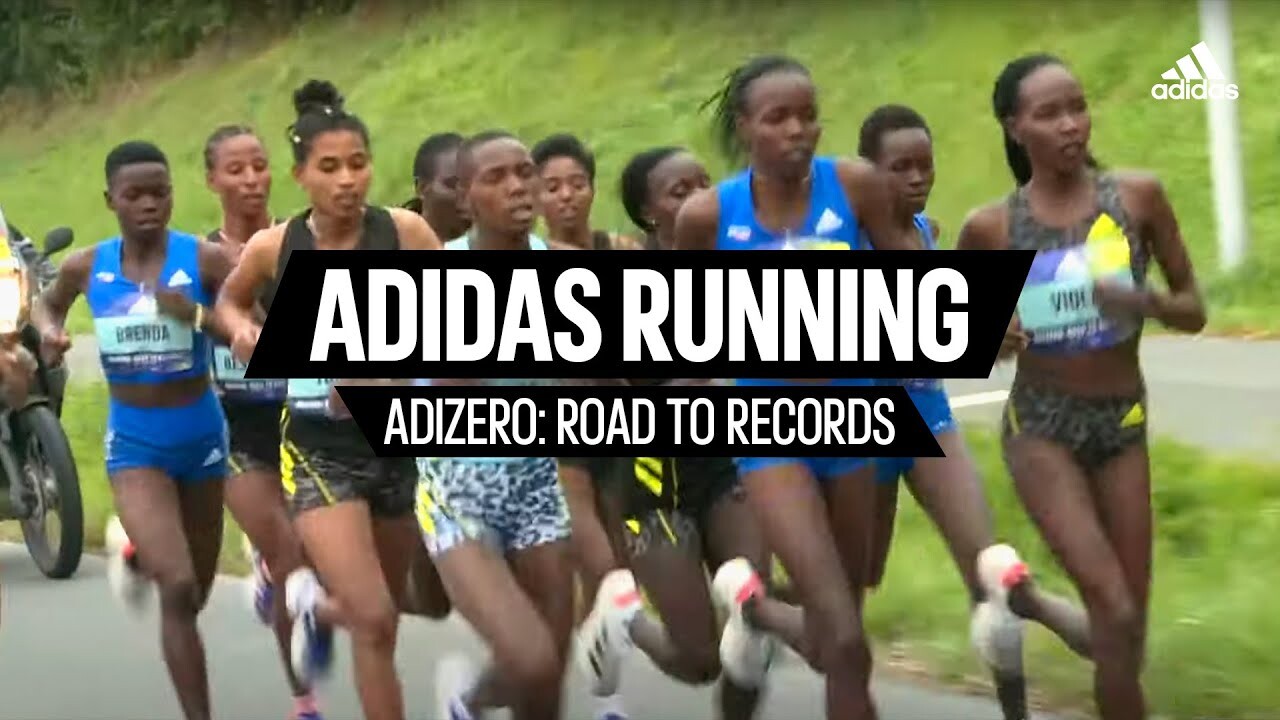
“My race was good, though I struggled alone and pushed alone and that’s why I missed the world record…I’m happy with the result but I really wanted the world record.
“However, now that I have missed it, I’m content with my win because I worked alone. I normally train my mind to always keep going and target to lower my time and I want to go for the Olympics…my target for this year,” Ngetich said.
Meanwhile, Ngetich started the race comfortably and was in charge from the 3km mark, looking very poised as she competed.
The 23-year-old showcased her skills and kept checking her watch throughout the race and after covering 7km, she had opened up a wide gap between herself and her competitors and was looking very strong.
As she passed the ninth-kilometer mark, she was pushing hard as fans cheered her to keep going. With the finish line in sight, Ngetich then sprinted to the finish line, clocking 30:03 to cross the finish line first.
(04/29/2024) ⚡AMPby Abigael Wuafula
ADIZERO: ROAD TO RECORDS
Adidas HQ in Herzogenaurach, Germany played host to elite adidas athletes competing on a specially designed course around the adidas World of Sport campus across 5km, 10km and 21km distances The course followed a loop of approximately 2.5km on a smooth tarmac surface with a slight elevation on each lap. Conditions were perfect as the first event,...
more...Hamburg Marathon: Benard Koech and Irine Cheptai win men's and women's titles
Defending champion Bernard Koech and fellow Kenyan Irine Cheptai won the Haspa Marathon Hamburg with world-class times. Koech crossed the line in a brilliant 2:04:24 and clocked the eighth fastest time in the world this year. Missing his own course record and PB by just 15 seconds Koech became the first man to successfully defend the title in Hamburg since Julio Rey of Spain in 2006. Ethiopia's Haymanot Alew took second with 2:05:30 and Philemon Kiplimo of Kenya was third in 2:05:37. There was a thrilling duel in the women's race. Irine Cheptai won the battle and produced one of the fastest marathon debuts in history with 2:18:22. Fellow Kenyan Winfridah Moseti smashed her PB with 2:18:25 for second place. These are the second and third fastest times in the history of the race. Ethiopia's Gotytom Gebreslase took third with 2:21:19.
Organizers registered a record entry number of 38,210 athletes for the 38th edition of the Haspa Marathon Hamburg. This includes races at shorter distances. 15,000 marathon runners were among the entries. “It was a superb race which produced some of the fastest times ever in Hamburg. However for many athletes conditions became tough when it suddenly warmed up strongly during the race,” said Chief Organizer Frank Thaleiser.
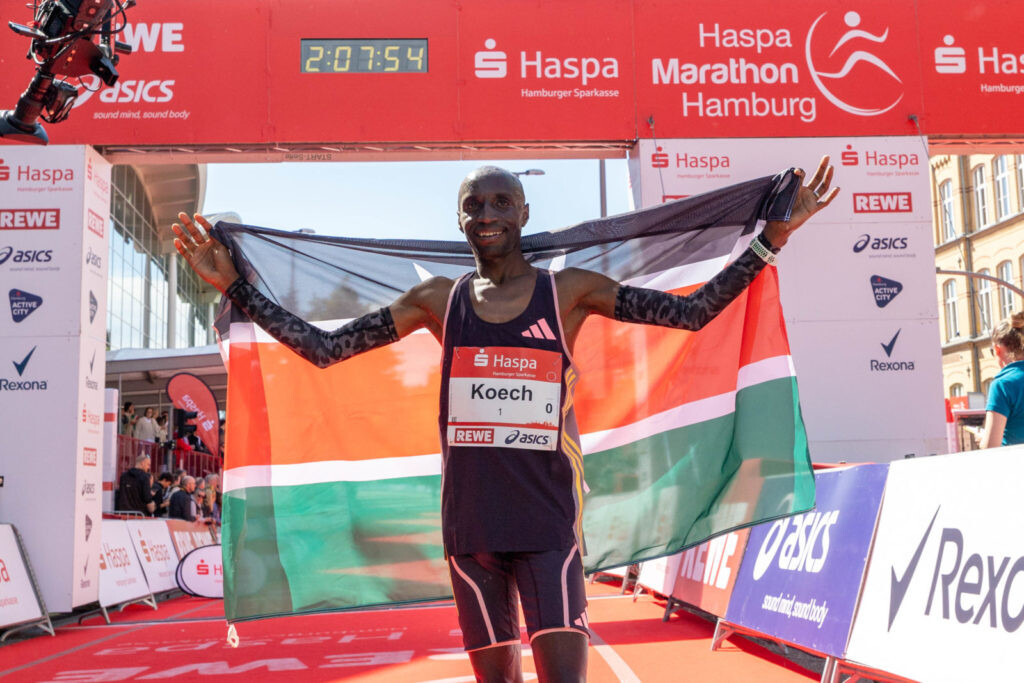
For long periods of the race the leading group was on course to break the course record of 2:04:09 which Bernard Koech established a year ago. After a 1:28:14 split time at 30k the last pacemaker dropped out and then Koech took off, immediately leaving behind Haymanot Alew, Philemon Kiplimo and fellow-Kenyan Ronald Korir. Koech covered the next 5k section in a breathtaking 14:17 and when he went through 35k in 1:42:31 it looked like he might finish in around 2:03:30. “But then I had a difficult section and because of that I missed the course record,” Bernard Koech explained later. “But this is sport, I am not at all disappointed. It was a great race and I might well come back again next year.” For the second time since 2022 four athletes ran sub 2:06:00 in Hamburg.
Germany's Sebastian Hendel finished in a strong tenth place with a huge PB of 2:08:51. The 28 year-old had a personal record of 2:10:14 before and now became the ninth fastest German marathon runner ever.
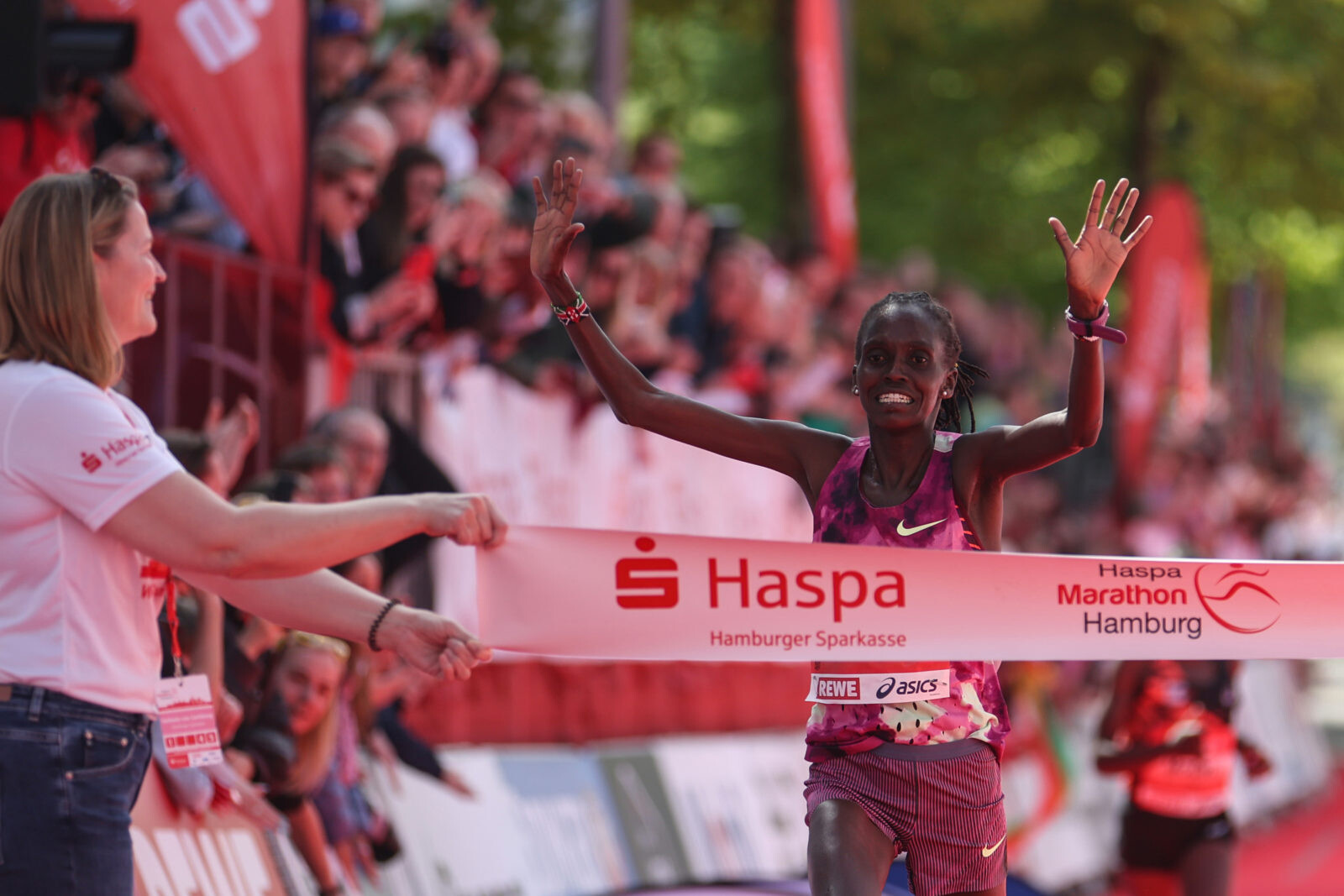
For over 30 kilometers Gotytom Gebreslase, the Marathon World Champion from 2022, ran together with Kenyans Irine Cheptai and Winfridah Moseti in the leading group. However with 10k to go the Ethiopian dropped back. With the leaders out of sight her dream of competing in the Olympics probably vanished. In the end Gotytom Gebreslase finished a distant third in 2:21:19. The battle for victory continued right into the home straight. Then the 2017 World Cross Country Champion Irine Cheptai opened a small gap and crowned her strong marathon debut with a win in 2:18:22. She was three seconds ahead of Winfridah Moseti. The two Kenyans managed to run the second half quicker than the first (69:44) and placed themselves on positions eleven and twelve in the 2024 world list.
“I never expected to win the race. I had hopes to maybe finish second or third,” said Irine Cheptai. “Perhaps I can now run between 2:14 and 2:15 in my next marathon. I would like to run here in Hamburg again next year.” In seventh place Argentinian Daiana Ocampo was the only athlete in Hamburg to achieve Olympic qualification. There was very bad luck for Katharina Steinruck once more. The German, who hoped to break her mother's PB (Katrin Dörre-Heinig, the Olympic bronze medalist from 1988, ran 2:24:35 in Hamburg 25 years ago), had to side step at a refreshment point when a pacemaker stepped into her way. She then collided full speed with a drinks table, fell and had to give up injured shortly after that. This happened shortly before the half way point and she had been running 2:23 pace. Rabea Schöneborn was the best German with 2:35:07 in 13th place.
Results, Men:
Bernard Koech KEN 2:04:24
Haymanot Alew ETH 2:05:30
Philemon Kiplimo KEN 2:05:37
Ronald Korir KOR 2:05:41
Tsedat Ayana ETH 2:06:40
Oqbe Ruesom ERI 2:06:50
Brimin Misoi KEN 2:07:06
Getaneh Molla ETH 2:07:38
Martin Musau UGA 2:08:42
Sebastian Hendel GER 2:08:51
Women:
Irine Cheptai KEN 2:18:22
Winfridah Moseti KEN 2:18:25
Gotytom Gebreslase ETH 2:21:19
Jackline Cherono KEN 2:21:40
Aminet Ahmed ETH 2:23:27
Cynthia Limo KEN 2:25:10
Daiana Ocampo ARG 2:26:24
Kidsan Alema ETH 2:26:50
Ayantu Kumela ETH 2:27:19
Neheng Khatala READ 2:28:37
(04/29/2024) ⚡AMPby Jörg Wenig
Haspa Marathon Hamburg
The HASPA MARATHON HAMBURG is Germany’s biggest spring marathon and since 1986 the first one to paint the blue line on the roads. Hamburcourse record is fast (2:05:30), the metropolitan city (1.8 million residents) lets the euphoric atmosphere spill over and carry you to the finish. Make this experience first hand and follow the Blue Line....
more...TCS World 10K Bengaluru: Kenya’s Peter Mwaniki, Lilian Kasait win international elite titles
Kenyan runners Peter Mwaniki (28:15) and Lilian Kasait (30:56) cruised to the international elite men’s and women’s titles respectively, in the 16th edition of the TCS World 10K Bengaluru here on Sunday.
Mwaniki shifted gears at the 7.5 km mark to leave his countryman Hillary Chepkwony behind.

It was a similar story for Lilian, who pulled away from the nearest rival Emmaculate Achol at the 7.1 km mark.
Mwaniki and Lilian were unable to break the event records (men - 27:38, women - 30:35) on this new route.
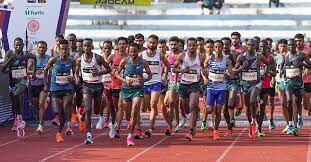
The new route was praised by most runners, but the finish line - stationed along a cordoned-off stretch on Cubbon Road - lacked buzz.
This was in contrast to previous editions, where the grand finish on the Sree Kanteerava Stadium running track witnessed several cheering runners and onlookers.
On Sunday, Mwaniki, Lilian and other medalists had only the photographers and a few event officials to share their joy with when they completed the run.
Lilian had to overcome a setback along the way. Near Ulsoor Lake, she nearly bumped into the timing vehicle, which seemingly made a wrong turn. “The car turned, so I thought it was a turning point and followed the car. But the officials on the motorbike told me to proceed (forward), so I followed my colleague Emmaculate,” Lilian said.
ter winning the international elite men’s title in TCS World 10K Bengaluru. | Photo Credit: GETTY IMAGES
Kenyan runners Peter Mwaniki (28:15) and Lilian Kasait (30:56) cruised to the international elite men’s and women’s titles respectively, in the 16th edition of the TCS World 10K Bengaluru here on Sunday.
Mwaniki shifted gears at the 7.5 km mark to leave his countryman Hillary Chepkwony behind.
It was a similar story for Lilian, who pulled away from the nearest rival Emmaculate Achol at the 7.1 km mark.
Mwaniki and Lilian were unable to break the event records (men - 27:38, women - 30:35) on this new route.
The new route was praised by most runners, but the finish line - stationed along a cordoned-off stretch on Cubbon Road - lacked buzz.
This was in contrast to previous editions, where the grand finish on the Sree Kanteerava Stadium running track witnessed several cheering runners and onlookers.
READ | Tajinderpal Singh Toor: Indian athletes don’t think of themselves any lesser than top athletes
On Sunday, Mwaniki, Lilian and other medalists had only the photographers and a few event officials to share their joy with when they completed the run.
Lilian had to overcome a setback along the way. Near Ulsoor Lake, she nearly bumped into the timing vehicle, which seemingly made a wrong turn. “The car turned, so I thought it was a turning point and followed the car. But the officials on the motorbike told me to proceed (forward), so I followed my colleague Emmaculate,” Lilian said.
Emmaculate had to be taken to the hospital after finishing the run. She was discharged a few hours later, organisers said.
Mwaniki explained that the course record could have been broken if the pacemaker had stayed on longer. “Our expectation was that the pacemaker would run five kilometres. But he dropped out at two kilometres. If the pacemaker had stayed for five kilometres, it may have been possible to break the course record,” Mwaniki said.
It was a memorable day for Kiran Matre, who broke the event record for Indian men’s elite athletes. Matre’s 29:32 bettered the previous milestone of 29:49 set by Suresh Kumar in 2015.
Sanjivani (34:03) continued her impressive run in this event. This is the third consecutive time that Sanjivani (34:03) has finished on top of the Indian women’s elite field.
Mwaniki and Kasait took home $26,000 each. Matre and Sanjivani earned ₹2,75,000 each. Matre also secured a bonus of ₹1,00,000 for breaking the event record.
(04/29/2024) ⚡AMPby Ashwin Achal
TCS WORLD 10K BENGALURU
The TCS World 10k Bengaluru has always excelled in ways beyond running. It has opened new doors for people to reach out to the less privileged of the society and encourages them to do their bit. The TCS World 10K event is the world’s richest 10 Km run and has seen participation from top elite athletes in the world. ...
more...London Marathon receives world record 840,000 applications for 2025 race
London Marathon organisers said they have received 840,318 applications for the 2025 race, breaking the world record of 578,374 set in last year's public ballot.
More than 53,000 runners completed the 44th edition of the marathon last week, a record for the event.
"This is an absolutely phenomenal total," event director Hugh Brasher said on Monday.
"Furthermore, the increase in applications from women, up from around 43% last year to 49% this year, is exceptional and takes us close to parity for applications for the first time.
"We want to inspire people of all ages and abilities to get active and these amazing record-breaking figures show how the TCS London Marathon is doing that and how many people want to be part of it," Brasher added.
The 2025 London Marathon is scheduled for April 27.
(04/28/2024) ⚡AMPSheila Chelangat surprises and Hicham Amghar wins in Istanbul
Sheila Chelangat was the surprise winner of the Türkiye Is Bankasi Istanbul Half Marathon. The Kenyan smashed her personal best and clocked a fine 66:47 despite rainy weather conditions and slippery roads. Fellow-Kenyan and debutant Miriam Chebet took second with 67:14 while Ethiopia’s Zewditu Aderaw was third in 68:17. The women’s race had a very good depth with eight runners finishing inside 69:00. Hicham Amghar of Marocco, who was runner-up a year ago, won the men’s race with a personal best of 59:47. Dinkalem Ayele was second in 59:55 while fellow-Ethiopian Gemechu Bute took third with 60:03.
A record number of 14,200 runners entered the 19th edition of the Türkiye Is Bankasi Istanbul Half Marathon, a World Athletics Gold Label Road Race. This includes athletes who competed in a 10k race staged parallel.
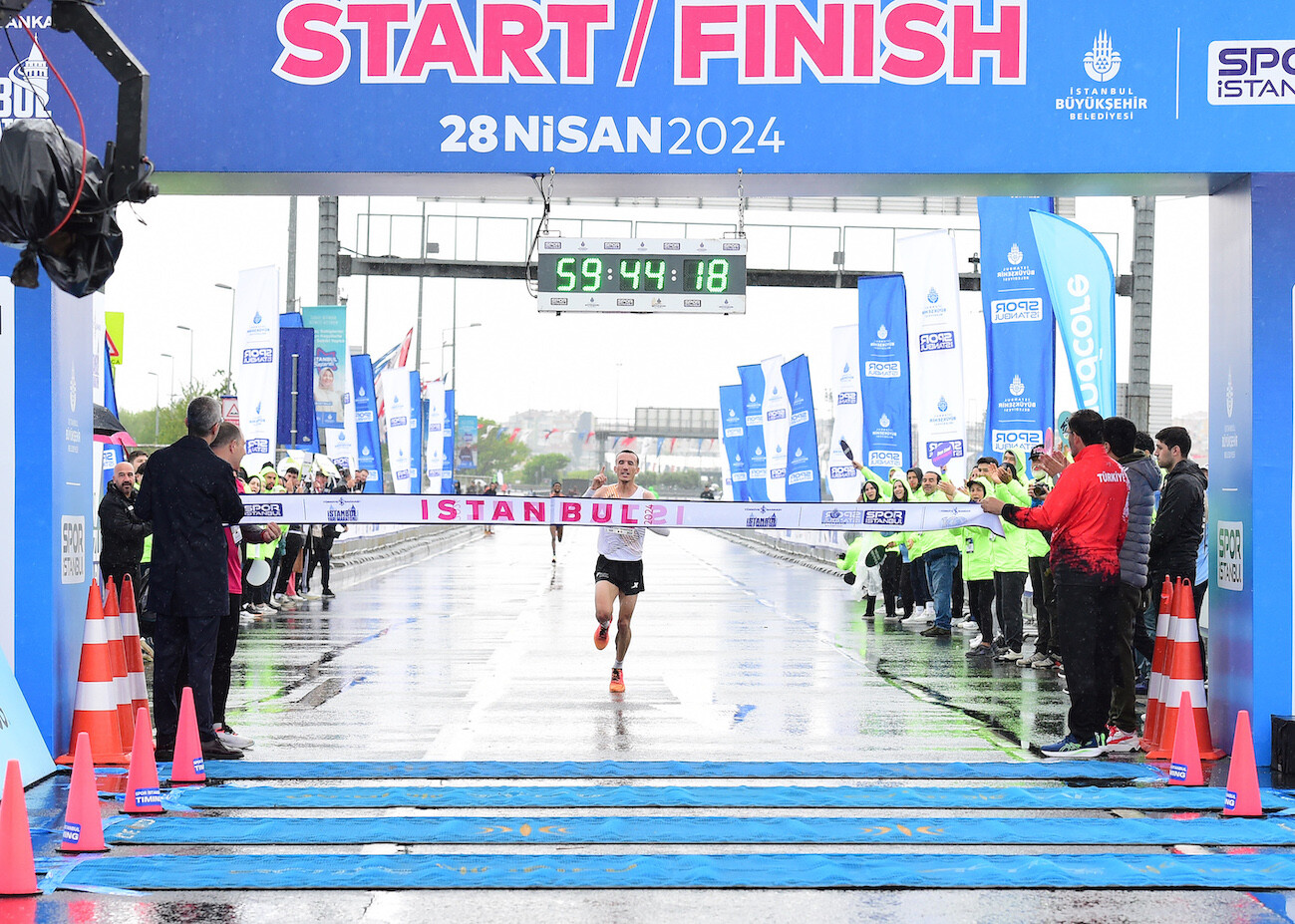
Sheila Chelangat, who was the tenth fastest woman on the start list with a personal best of 69:38, took the lead relatively early in the race. The 26 year-old Kenyan ran behind a pacemaker when she moved clear between 7 and 10 k. Despite the poor weather conditions she was able to keep the pace high and was so strong that she was never challenged. “I am really happy with my performance and the victory. However the weather was poor and the roads were slippery,“ said Sheila Chelangat, who achieved her biggest career victory so far in Istanbul. “I am not yet planning a marathon debut,“ said the Kenyan, who only ran her half marathon debut last month in Lille, where she was second.
Competing for second place Miriam Chebet and Zewditu Aderaw were battling between 10 and 13k. Then Kenya’s debutant Chebet was able to move away from the Ethiopian. Running her debut half marathon in Istanbul the former European 5,000 m Meraf Bahta finished in 16th position with 72:51. The Swede was the best European in the race, but missed the qualifying standard for the continental championships in Rome in June by over a minute.
In the men’s race a bigger leading group passed the 10k mark in 28:39. In-form Dinkalem Ayele was among the leaders, along with Hicham Amghar and Gemechu Bute. Ayele was the winner of the Lisbon Half Marathon this spring, but in the final stages the Ethiopian could not get passed Amghar. The runner from Marocco was in the lead after 17k with Ayele and Bute close behind. Finishing runner-up and beaten by just six seconds a year ago this time Amghar made sure he is the number one. With 59:47 he was eight seconds ahead and improved his PB from 2023 by six seconds.
“Despite the weather I was able to run a personal best, so I am very happy. It was better to have rain instead of wind,“ said the 29 year-old winner, who celebrated one of his best career performances. “I may well return to Istanbul in November for my marathon debut. I really like the way the organisers take care of the elite runners here,“ said Hicham Amghar.
While Ethiopia’s pre-race favorite Solomon Berihu did not finish, Canada’s Cameron Levins was the fastest non-African runner in eighth place. He clocked a fine 60:38, missing his national record by just 20 seconds. Further down the results list there was a national record for the Virgin Islands: Eduardo Garcia ran 63:53 for 29th place.
The reigning European half marathon champion Tadesse Abraham of Switzerland finished in 24th position with 63:18. “It was a good race, but mentally I am not well,“ said Tadesse Abraham, who still has to come to terms with with loss of his fellow-Swiss marathon runner Adrian Lehmann, who died after a heart attack just eight days ago. “I came to Istanbul to run and get this a bit out of my head. Taking this into account I am satisfied with my performance today.“
RESULTS, MEN:
1. Hicham Amghar MAR 59:47
2. Dinkalem Ayele ETH 59:55
3. Gemechu Bute ETH 60:03
4. Antony Kimtai KEN 60:16
5. Benard Bitwott KEN 60:18
6. Solomon Kipchoge KEN 60:19
7. Mathew Samperu KEN 60:27
8. Cameron Levins CAN 60:38
9. James Kipkoech KEN 60:43
10. Edward Pingua KEN 61:08
WOMEN:
1. Sheila Chelangat KEN 66:47
2. Miriam Chebet KEN 67:14
3. Zewditu Aderaw ETH 68:17
4. Betelihem Afenigus ETH 68:33
5. Ftaw Zeray ETH 68:39
6. Betty Kibet KEN 68:39
7. Gladys Chepkurui KEN 68:50
8. Aberash Shilima ETH 68:52
9. Ruth Jebet BRN 69:10
10. Meseret Dinke ETH 69:53
(04/28/2024) ⚡AMPIstanbul Half Marathon
The Türkiye İş Bankası Istanbul Half Marathon is one of the fastest and most scenic races in the world, taking runners along the historic Golden Horn in Istanbul—once the heart of three great empires. Held annually in April, it attracts a world-class field and thousands of amateur runners. The flat, fast course makes it ideal for personal bests. The current...
more...5 Tips for Leveling Up Your Trail Running
Five ways to measure your progress trail running across surfaces, distances, and routes
Many of us get into trail running because of its non-linear, anti-cookie cutter method of training. Sometimes it’s less about miles and times and more about focusing on where your feet—or hands if you’re scrabbling—are going.. However, that can also be the most frustrating aspect to accept, especially as we strive to improve. Unlike road running, where distances and times are easily measurable, trail running often lacks the same level of precision. But don’t worry, you can still assess and benchmark your progress. Here, we’ll explore various methods of how to track trail running progress that don’t require pinning on a race bib.


One of the simplest ways to measure progress, both in trail and road running, is by repeating looped routes regularly. Choose a trail that offers a mix of terrains, elevations, and technical challenges. By running the same loop consistently, you can monitor improvements in your pacing, endurance, and overall comfort level with the terrain. Take note of how you navigate tricky sections more confidently and efficiently over time.
Dana Katz, coach at UltraU Fitness, often prescribes what she calls a “money loop.”
“My athletes get to choose this for themselves,” Katz says. “This could be a Strava segment or local favorite and typically takes them one hour roughly, or five to eight miles. We revisit this every few weeks. It’s a great way for us to assess progress over time.”
Crafting a loop or two that you can use to benchmark your progress on a moderate-to-hard effort day can be a handy way to see how you’ve progressed over time. While Katz says you don’t need to be all-out to track results, her athletes get excited to see their heart rate and perceived effort level decline with training..
Similarly, one of my local favorite challenges is called “Golden Hell Week,” organized by local running group, Golden Mountain Runners, where runners test themselves on five routes over the course of a single week. While I don’t suggest doing back-to-back attempts at a fastest time, approaching these routes at different times throughout the year has been a great way to challenge myself in lieu of a tempo effort, and a sound method to see how I’m faring (if you ever find yourself in Golden, Colorado, I challenge you to the main loop around North Table Mountain).
Hills are a significant aspect of trail running, demanding strength and stamina. Designate specific hills or ascents on your favorite trail and incorporate them into your training routine. By regularly tackling these inclines, you can measure progress through increased speed, improved form, and enhanced cardiovascular endurance. Improving on hills is a clear indicator that your trail running skills are advancing. You can find a host of hill repeat training sessions from Coach David Roche’s 8 Favorite Hill Workouts.
Hills can be just as uncomplicated as running 400-meter intervals on the track. Simply put, select a hill near your house or on a favorite trail and run it several times fast. Rest, jog, and repeat. Note your time for each one, or run hard for a designated amount of time and note how far you made it up the hill. Hill repeats, money loops, and Strava segments (if you use that platform), can be useful strategies to assess progress within a shorter duration effort.
When switching from roads to trails, one of the hardest aspects to wrap our brains around is the concept of effort versus pace. To help gauge ourselves for the shift, Dee Stasullli, coach at Zeal Endurance Coaching, recommends incorporating practicing effort-based workouts and runs in your training. Craft “purposeful race plan, which involves switching from pace-based exercise prescription to effort-based,” Stasullli says. “I use a lot of the same prescriptors,like 10K effort or percentage of Lactate Threshold. It should feel hard but controlled and can translate to other variable conditions.”
You might start with a Lactate Threshold (LT) assessment, or a 5K to 10K race (or self-marked course) to find that sweet spot. From there, you’ll have a better gauge on what effort level corresponds to each pace and distance.“The more you can tune into how it feels at each effort level in your training, that can help you tune into the effort level needed for your race,” Stasullli says. While there are many factors that can influence our pace on the trails, effort is a gauge we can tap into regardless of the terrain, vertical gain, or other factors involved in the adventure.
Trail running is not just about speed; endurance plays a crucial role. As you progress, focus on increasing your “time on feet.” Gradually extend the duration of your trail runs, emphasizing steady pacing and consistent energy levels. This approach helps build endurance, allowing you to cover longer distances comfortably. Similarly, if you’re transitioning from running a certain number of miles a week on the roads to training on trails, consider how long you’re training per week by time, not just mileage. Road miles and trail miles are not created equally. Although you may not cover as much ground on the trails within the same timeframe, consider the amount of vertical feet you’re gaining and your overall effort level. Your body doesn’t know how far you run, it just knows how much stress it’s been under.
Heather Hart, coach at Hart Strength & Endurance Coaching, advises that athletes focus on training by time versus mileage “When I meet an athlete going from road to trail, we’re going to throw out pace suggestions and heart rate training,” she says. “Ask yourself: Are you getting a little further in an hour run this month versus last month? Overall, gauging how comfortable you feel on the trail and perceived exertion is a great start.”
While this training mindset isn’t easy to reframe, it can be empowering to ditch the watch or pace gauge to which you’re accustomed. If you’re unsure how long a loop on the trails might take you, start with out-and-backs or going up and down a hill, enjoying the negative split as you run down.
If you’ve been on trails throughout different regions,or even areas of town, you might realize how different paths can be depending on their location. Benchmark your progress by exploring trails over diverse surfaces. Transition between soft dirt, rocky paths, and hillier routes to challenge different muscle groups and improve overall adaptability. As you become more adept at handling various surfaces, you’ll notice enhanced stability and control during your runs.
For instance, if you want to improve your technical downhill running over loose scree, but you’re completely new to running over rocks, start with a handful of pebbles or crushed gravel. Focus on one segment of a pebble-filled trail you run often, practicing your technique and getting comfortable with the setup before introducing a new trail with obstacles you haven’t yet encountered, such as those big, burly rocks or loose scree found on big mountains. You might consider starting with a lesser-grade before moving onto steeper inclines and descents, especially when considering extra elements.
With unpredictable terrain and scenic routes, trails don’t always offer the straightforward metrics of road running, especially without races to gauge our improvement. However, by strategically incorporating looped routes, hill repeats, Strava segments, technical trail proficiency, time on feet, and variety in trail surfaces into your training regimen, you can effectively benchmark your progress.
These non-racing methods not only offer tangible ways to assess improvement but also contribute to the holistic and fulfilling experience of trail running. Because, afterall, metaphorically losing yourself on the trail is probably a big reason why you got into the sport in the first place. So, lace up your trail shoes, embrace the adventure, and, if you’re so inclined, check in with your progress every once in a while.
(04/28/2024) ⚡AMPby Outside Online
Lululemon unveils Team Canada athlete kits for Paris 2024
It was an exciting morning in Toronto as sports media members from across Canada gathered for the unveiling of the athlete uniforms for the Paris 2024 Olympic and Paralympic Games. This marks the first summer kit design and the second Team Canada kit by Lululemon since becoming the official outfitter of the Canadian Olympic and Paralympic Teams in 2021.
Lululemon faced high expectations following the popularity of their kits for the Beijing 2022 (winter) Olympics, both online and among Canadian athletes. To design the summer kit, Lululemon collaborated with 19 Olympic and Paralympic athletes across 14 different sports to understand their needs during the Games. Unsurprisingly, the athletes prioritized comfort, adaptability and national pride.

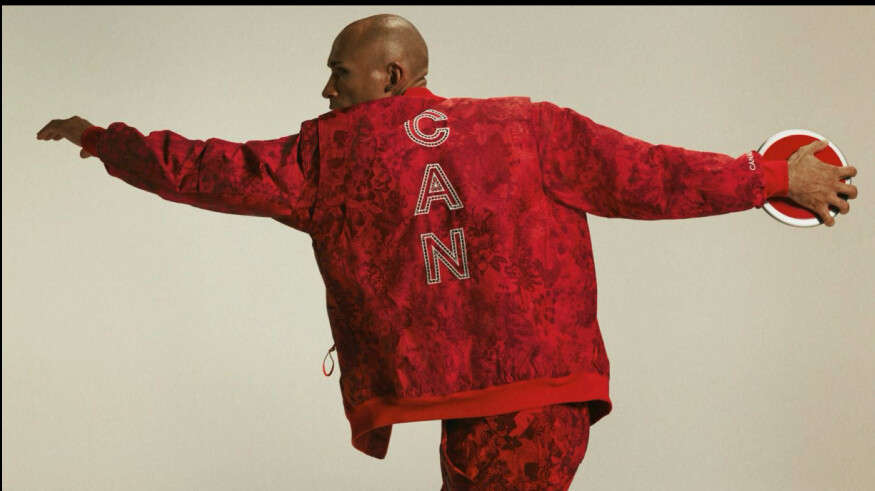
For Paris 2024, Canadian Olympians will be outfitted with five different pieces for five different purposes: Travel, Opening Ceremony, Podium, Media, and Closing Ceremony. Each piece incorporates proprietary technology and sweat-wicking yarns to ensure moisture is effectively moved away from the body, guaranteeing comfort. Products like the convertible jacket and pant allow athletes to personalize their look while remaining prepared for all conditions. Lululemon emphasized that each kit was designed with both form and function in mind, maximizing versatility.
“We heard from all the athletes that comfort is key and being in the right headspace to compete,” says Lululemon chief product designer Sun Choe. “Our athlete kit is intentionally designed to allow athletes to combine pieces to fit their own personal style and uniquely express national pride.”
Here’s an overview of the five kits Canadian athletes will be donning in Paris.
Reaction to the kit
Numerous current and former Canadian athletes attended the unveiling of the uniforms on Tuesday, among them 1996 Olympic gold medallist and Canadian 100m record holder, Bruny Surin, who will serve as the official Chef de Mission for Team Canada at the Paris 2024 Olympic Games.
Sporting the Closing Ceremony kit, adorned with a pattern of the northern lights, Surin voiced his enthusiasm for the athletes’ anticipation of the upcoming event. “This is one of those pre-Games days you eagerly anticipate,” remarked Surin. “You can sense the excitement building among the athletes.”
Reflecting on the evolution of Olympic attire over the past two decades since his last appearance for Canada in Sydney 2000, Surin praised the design’s focus on athlete fit and comfort. “I particularly appreciate that they were crafted with athletes’ comfort and fit in mind,” he noted. “They incorporated feedback from 19 athletes to create this final product.”
Canadian para long jumper Jesse Zesseu echoed Surin’s sentiments, lauding the comfort and versatility of the Team Canada x Lululemon kit. “It’s fantastic,” exclaimed Zesseu. “I’m amazed by how breathable and comfortable it feels.”
Zesseu, the Canadian T37 long jump and discus throw record holder and a top contender for a medal in his event in Paris, eagerly anticipates the opportunity to don the Team Canada kit. “I’m counting down the days until I can wear this Team Canada kit—only 135 to go,” he said with a smile.
Future legacy program
For the first time at Paris 2024, Lululemon has introduced a Future Legacy program with all new styles, including the Team Canada Future Legacy Mini Belt Bag, Team Canada Future Legacy Ball Cap, and Team Canada Future Legacy Scarf. Ten per cent of sales from Future Legacy products will help the next generation of Canadian athletes access the resources, equipment, and funding they need to experience the power of sport—from dreams to podium, and beyond.
(04/28/2024) ⚡AMPby Running Magazine
How climate change might be slowing Canadian runners down
We know running is good for our physical health, but as climate change progresses, new studies reveal how runners’ finishing times might be suffering the consequences. Today, Canada is ranked the most polluted country in North America, with temperatures steadily increasing since the 1950s. In light of Earth Day, a recent study looked at runners’ cardiovascular health and found that exposure to short- and long-term air pollutants and warmer temperatures can actually slow runners down due to their impacts on cardiovascular endurance. What is cardiovascular endurance?
Cardiovascular endurance is how well the heart and lungs can supply the oxygen you need while exercising at medium to high intensity. In other words, your endurance and pace will likely dive if you have poor cardiovascular health. If you have good cardiovascular endurance, you can exercise at medium intensity for a long time before becoming fatigued. For runners, cardiovascular endurance is crucial for success.The findings
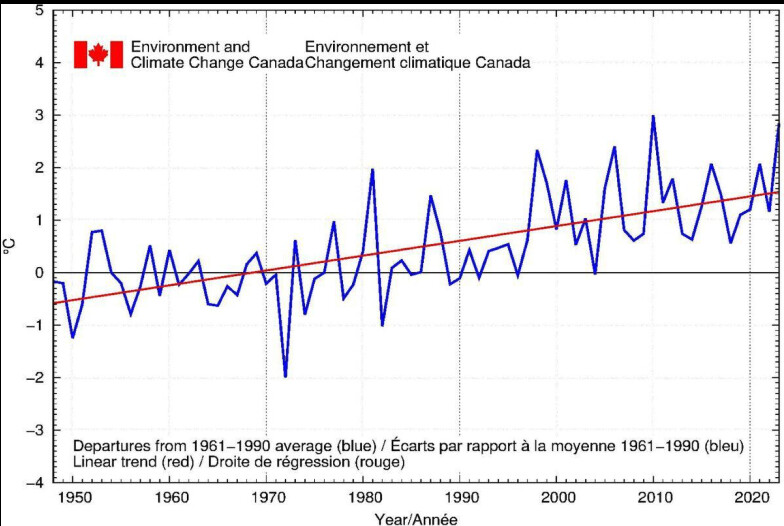
The researchers examined results from a retrospective review of elite runners. They found that, three weeks after exposure to polluted air, typical 5-km race times slowed by 12.8 seconds.
Extreme heat was also found to be a particular threat to runner speeds (and athletes in general). When a runner is exposed to heat, blood flow to the skin increases to cool the body. With extreme heat exposure, the body suffers from increased heart rate, swelling and redness and receives mismatched signals about its oxygen supply and demand.
At the end of the study, the researchers determined that more testing needs to be done to evaluate the impacts on athletes with pre-existing cardiovascular disease and high environmental exposure levels. In the meantime, they suggest runners stick to exercising in the morning when temperatures are cooler and ozone is at ground level. (This might still be dangerous because when the ozone is lower in the atmosphere, it produces harmful pollutants, including smog.)
What does this mean for Canadian runners?
With weather trends predicting record-breaking temperatures from May through July 2024 across western Canada, many wonder what the long-term impacts will be on runners.
While more research is needed to fully understand the effects of Canada’s changing climate on runner speeds, this study serves as a wake-up call. It’s clear that as runners, we need to start prioritizing our cardiovascular health. In today’s climate, where inhaling wildfire smoke and greenhouse gas emissions is becoming a reality of our sport, we must take steps to protect our health and performance.
(04/28/2024) ⚡AMPby Running Magazine
Emmanuel Wanyonyi breaks road mile world record on competitive debut
Teenager Emmanuel Wanyonyi broke the road mile world record in Herzogenaurach, Germany, Saturday.
The 19-year-old set the new record following an incredible run of three minutes 54.56 seconds on what was his competitive debut over the distance.
Wanyonyi is predominantly an 800-meter runner. The Kenyan won the silver medal in the men’s 800m at the 2023 World Athletics Championship held in Budapest, Hungary.
The previous world road mile record was set by American athlete Hobbs Kessler. Kessler’s world record time was 3:56.13.
(04/27/2024) ⚡AMPby CnN
ADIZERO: ROAD TO RECORDS
Adidas HQ in Herzogenaurach, Germany played host to elite adidas athletes competing on a specially designed course around the adidas World of Sport campus across 5km, 10km and 21km distances The course followed a loop of approximately 2.5km on a smooth tarmac surface with a slight elevation on each lap. Conditions were perfect as the first event,...
more...Why toe spreaders may be your next great recovery tool
Inexpensive, small and simple to use (albeit funny-looking), toe spreaders are commonly associated with pedicures and bunions—but these small devices are now also hailed as essential tools for enhancing foot function and performance. Here’s why runners are increasingly turning to toe spreaders (also called spacers) for better foot health and improved foot flexibility.
Toe spreaders, usually made from silicon, can be purchased for $10 (or less) online, and are usually intended to gently realign the toes and restore their natural spacing. They can be worn while exercising and walking around, or only used when doing foot exercises and strengthening drills—and some research suggests they can lead to performance benefits for athletes, with enhanced efficiency, improved balance and proprioception and an increase in explosive output.
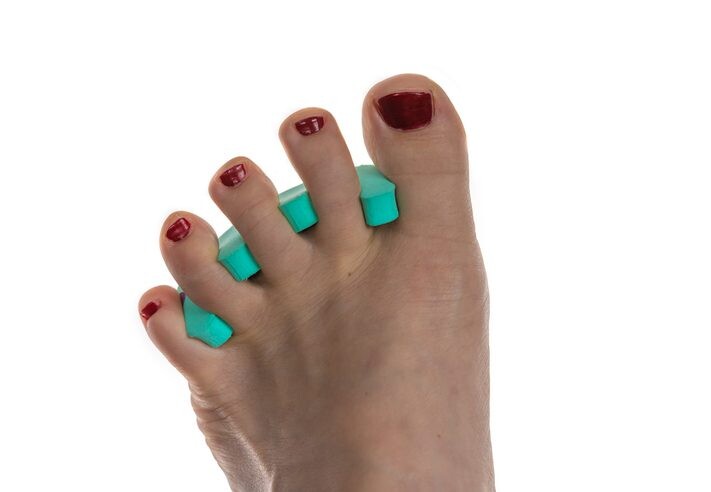
Enhancing foot functionality
In a recent article in The Wall Street Journal, Dr. Dennis Cardone, a sports medicine specialist at NYU Langone Health in New York City, explains that our feet should act like small tripods, with the centre of the heel, ball of the big toe and base of the baby toe all supporting our weight equally. When our feet are squeezed into tight shoes, the tripod becomes uneven and narrow, leading to balance problems and painful injuries like bunions and hammer toes. Runners and other active people may have more potential for injury.

A new foot fad?
While Cardone says that wearing toe spreaders won’t prevent deformities, they can help relieve the pain and are a cheap and easy aid when contrasted with surgery or physical therapy. The simple gadgets can be purchased online from Amazon and other websites—and runners aren’t the only ones sporting them. Celebrities like model Ashley Graham are jumping on the bandwagon, posting photos of their toes in spreaders or while wearing toe-spreader socks.
Improved circulation for happier feet
As we walk, we should feel our toes (especially the big ones) press into the ground, Courtney Conley, founder of web-based foot health resource Gait Happens, explains to the WSJ. Strengthening the muscles of the feet and toes can lead to better overall foot stability and balance during running. Besides building strength and boosting alignment, spacers can also improve blood circulation by creating space between the toes, which promotes healing and reduces the risk of inflammatory conditions like plantar fasciitis. Toe spacers can also be beneficial for athletes with foot fatigue.
The rising popularity of toe spreaders is encouraging people to take better care of their feet. Many people aren’t aware that their toes should be able to move individually, similar to fingers. When slipping toe spreaders on for the first time, the sensation may feel quite intense or uncomfortable, and experts suggest gradually increasing the time wearing the spacers as you watch TV or do chores. Adding a few foot and toe exercises, spaced throughout the day (with or without toe spreaders on), can make wearing the tools less uncomfortable, while giving foot function an extra boost.
(04/27/2024) ⚡AMPby Keeley Milne
Tyler McCandless: The Champion Returns to Conquer DICK’S Sporting Goods Pittsburgh Marathon Once More
The streets of Pittsburgh are set to witness a battle of endurance and speed as defending champion Tyler McCandless gears up to claim victory at the 2024 DICK’S Sporting Goods Pittsburgh Marathon. McCandless, who broke the finisher’s tape in 2:16:08 last year, aims to become the marathon’s first repeat American champion since 1989.
“Returning to the Pittsburgh marathon as the defending champion is an absolute honor and I’m grateful for the incredible Pittsburgh running community and P3R staff,” McCandless said. “I have had fantastic training, and I’m feeling as fit as I’ve ever been. I’m eager to run the streets of the Steel City and experience the exhilarating challenge to be champion once again.”
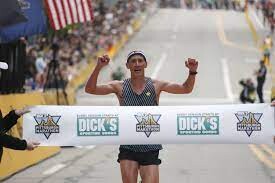
However, the road to triumph is not without its challengers. Alvaro Abreu, the Dominican dynamo who clinched the 2022 title with a finish of 2:16:07, is back. Familiar with the course’s rigors, Abreu is fired up to showcase his running talent and reclaim the crown.
The 2024 DICK’S Sporting Goods Pittsburgh Marathon will offer a prize purse of $32,000 with a $7,000 top prize. For more information about the 2024 DICK’S Sporting Goods Pittsburgh Marathon, visit thePittsburghMarathon.com.
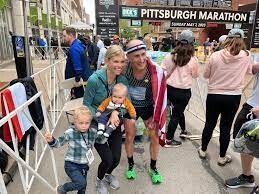
About the DICK’S Sporting Goods Pittsburgh Marathon Weekend of EventsThe Pittsburgh Marathon was held annually from 1985-2003. After a five-year hiatus, the DICK’S Sporting Goods Pittsburgh Marathon was relaunched in 2009 and debuted with a sold-out field of 10,000 participants. It has grown each year since, evolving from a single race day into a weekend of events for the whole family that annually attracts nearly 40,000 runners. Read more at: ThePittsburghMarathon.com
FACEBOOK: DSGPM TWITTER: @PghMarathon INSTAGRAM: pghmarathon
About P3RP3R is the region’s go-to premier sporting event and experience expert. While best known for the annual DICK’S Sporting Goods Pittsburgh Marathon, P3R organizes up to 20 major events every year. With a rich history of working with top-tier clients such as the Pittsburgh Steelers, UPMC Hillman Cancer Center, the Pittsburgh Penguins, the National Senior Games, and more, P3R brings operational excellence to every aspect of event planning and execution. As part of P3R’s non-profit mission to inspire any and all to MOVE with us, we provide premium event experiences and robust programming – including the Run for a Reason Charity Program, award-winning Kids of STEEL program, Pittsburgh Corporate Challenge, RUN Varsity, and more – that engage everyone in the Western Pennsylvania community and beyond.
(04/27/2024) ⚡AMPDick's Sporting Good Pittsburgh Marathon
This race is your game - however you decide to play it. As a competitor. A fund raiser. An enthusiast. A veteran. A team player. It's whatever you want it to be. It's whatever you make it. It's YOUR game..... Run it. Play it. Own it. Love it. Runners will race on the North Shore of Pittsburgh, cross each of...
more...World-class fields will go for course records and target Olympic qualification in Sunday’s Haspa Marathon Hamburg
Kenya’s defending champion and course record holder Bernard Koech, who tied his personal best with 2:04:09 a year ago, is back while Gotytom Gebreslase, the World Champion from 2022, is the favorite in the women’s race.
The Ethiopian, who has a PB of 2:18:18, wants to secure the third spot for the Paris Olympic race in Hamburg. Fellow-Ethiopian Yalemzerf Yehualaw holds Hamburg’s course record of 2:17:23. Late entry Nienke Brinkman will also try to qualify for Paris. The Dutch runner is the bronze medalist from the European Championships in Munich in 2022.
Organizers of Germany’s biggest and fastest spring marathon have registered a record total of 38,210 runners. Among them are 15,000 athletes who will compete in the classic event. “If all goes well on Sunday and the pacemakers run a bit more even and slightly faster we could see similar results to last year. I am curious to see if Gotytom Gebreslase manages to qualify for Paris and if she is able to break the course record. But even a sub 2:20 time is something special since we only have one so far,“ said chief organizer Frank Thaleiser, who introduced an additional bonus of 20,000 Euros for the course records. All runners – men and women – who finish inside the course records share this amount. If there would be one man and three women who clock faster times than the previous records they would each receive 5,000 Euros. “This way we want to encourage the runners in a leading group to go for a fast time after the last pacemaker has dropped out,“ explained Frank Thaleiser.
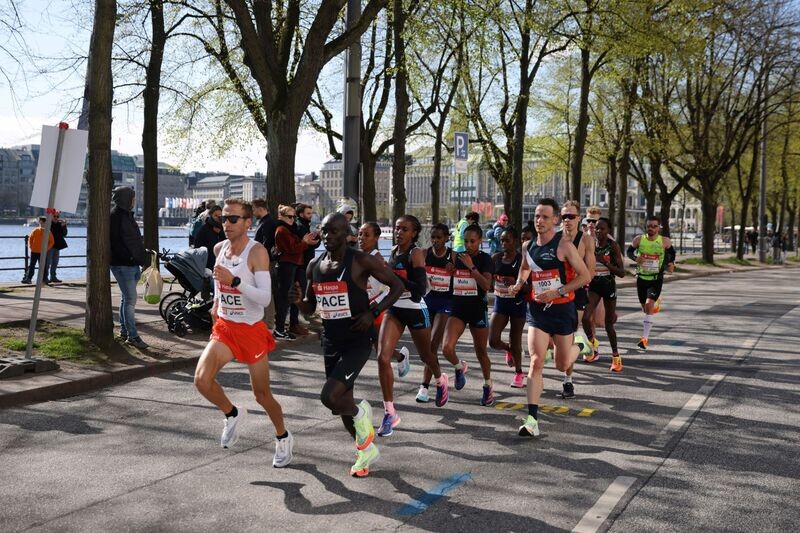
“Training was going well and compared to last year in Hamburg I have reached the same level. So if the weather conditions are fine then a fast time is possible,“ said Bernard Koech. It is highly unlikely that he could still be selected for the Olympic marathon, but he said: “I will give everything and if they should select me then I will be ready.“ Bernard Koech is one of seven runners in the race who feature personal bests of sub 2:05:00. While Ethiopia’s Getaneh Molla is the fastest on the start list with 2:03:34 he has not reached such times in recent years.
Brimin Misoi and Philemon Kiplimo are tipped to be among the strongest challengers for defending champion Koech. Both have done very well on German roads in the past. Misoi has won the Frankfurt Marathon twice in a row. When he defended his title last autumn the Kenyan improved to 2:04:53 despite windy and rainy conditions. He now intends to run faster in Hamburg. “I ran the Paris Marathon at the beginning of April. But because of breathing problems I dropped out and then decided to go for Hamburg,“ said Misoi. It was in Berlin last year, where Philemon Kiplimo improved to 2:04:56 and finished eighth in a very competitive race. “German roads are good for me, so I am looking forward to Sunday. I want to run with the leading group and improve my time,“ said Kiplimo, who has a superb half marathon PB of 58:11.
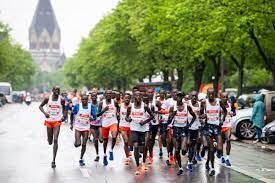
“We are planning a pace in the region of the course record, may be slightly faster. Additionally there will be a really big group of probably 25 athletes who will target the 2:08:10 Olympic qualifying time“, said Hamburg’s Elite Race Coordinator Jurrie van der Velden of Jos Hermens’ Global management. “We are not quite sure yet, but the women’s leading group might run a pace somewhere between 2:16 and 2:18. There is a group as well which targets Olympic qualification, running sub 2:26:50 pace.“
“It is my goal to qualify for the Olympics on Sunday,“ said Gotytom Gebreslase, who surprisingly won her debut marathon in Berlin in 2021, then went on to become World Champion in the following year and took the silver medal at last year’s global championships in Budapest. Jurrie van der Velden explained that the Ethiopian federation usually selects the two fastest runners during the qualifying window and then picks the athlete who performed best at major championships as long as that athlete confirms good form. When Gebreselase ran the Nagoya Marathon in March she did not finish. “I got stomach problems during the race and dropped out after 35k. Then I trained well and decided to run in Hamburg. I am in good form now and want to run sub 2:18 here. Perhaps I can attack the course record. I would think such a performance should be enough to get selected,“ said Gotytom Gebreslase.
Nienke Brinkman joined Hamburg’s elite field at short notice. The European bronze medalist from 2022 has still not achieved the qualifying time for the Olympics. She ran her PB of 2:22:51 in 2022, but that was outside the qualifying period. A year ago Brinkman clocked a fine 2:24:58 in Boston, but this course is not record eligible and results do not count as qualifying times. However it is a far easier task for Brinkman to achieve qualification in Hamburg than for Gebreslase. Reaching the qualifying standard of 2:26:50 should be enough for the former Durch record holder.
A debutant could well be in the mix for at least a place on the podium: Irine Cheptai is the World Cross Country Champion from 2017. “I started preparing for my marathon debut in January and training went very well. I think I will go with the second group on Sunday,“ said the Kenyan who has already run a very fast and promising half marathon time of 64:53.
Among a number of German runners Katharina Steinruck is probably the one who could produce the national highlight in Hamburg. She improved to 2:24:56 this winter and now hopes to break the family record: It was exactly 25 years ago when Katrin Dörre-Heinig, the bronze medalist of the 1988 Olympic marathon in Seoul, won the Hamburg Marathon with 2:24:35. For many years this remained the German marathon record. “It is my aim to break my Mum’s record and it would be great if I could do it in Hamburg,“ said Steinruck.
(04/27/2024) ⚡AMPby AIMS
Haspa Marathon Hamburg
The HASPA MARATHON HAMBURG is Germany’s biggest spring marathon and since 1986 the first one to paint the blue line on the roads. Hamburcourse record is fast (2:05:30), the metropolitan city (1.8 million residents) lets the euphoric atmosphere spill over and carry you to the finish. Make this experience first hand and follow the Blue Line....
more...Mark Zuckerberg Ran an Impressive 5K Just 5 Months After ACL Surgery
Plus, it was his 8-year-old daughter’s first-ever 5K.
Mark Zuckerberg, the 39-year-old CEO of Meta, is known as an avid runner and fitness enthusiast.

On last Sunday morning, he lined up for the Stanford Medicine My Heart Counts 5K and finished in an official time of 20:58. His 8-year-old daughter, Maxima, also joined in the fun, he wrote on social media.
This is the second year in a row the tech billionaire has raced this exact 5K. In 2023, he achieved his goal of sub-20 minutes, crossing the line in 19:34. The race course meanders through the campus of Stanford University, in Stanford, California, just miles from Meta’s headquarters in Menlo Park.
But while Zuckerberg’s time this year was a little bit slower, he knew that was to be expected—this was his first race back after tearing his ACL last fall while training for an MMA match.
Zuckerberg took to Facebook and Instagram (of course) to recap his race: “First post-surgery 5K and Max’s first ever 5K! Not going for any records yet but still happy with 21 mins for 5 months into recovery. I’m really proud of Max for getting out there too.”
Out of the 1,606 people at the race, Zuckerberg finished 38th overall and 8th in his age group (men’s 35-39). He averaged a pace of 6:45 per mile for the 3.1-mile race and used the alias “Martin Salzburg” to presumptively avoid drawing too much attention to himself and his family.
It’s obvious that Zuckerberg is caught up on the latest trends in running: his post-race photo revealed he was wearing a Tracksmith top and a pair of Nike Vaporfly 3 super shoes.
(04/27/2024) ⚡AMP
by Runner’s World
Here are some of the Guinness World Records set at the 2024 London Marathon
Could you beat Lee Baynton’s new record of “fastest marathon in a full-body inflatable costume?”
Each year, the London Marathon sees several Guinness World Record attempts, bizarre and wonderful feats like “the fastest female dressed as stationery (2022)” and “fastest marathon in dressed as a film character (Forrest Gump, 2018),” make history books—and 2024 was no exception. But of the 44 world records set or broken during the race, not all were just for costumed runners.
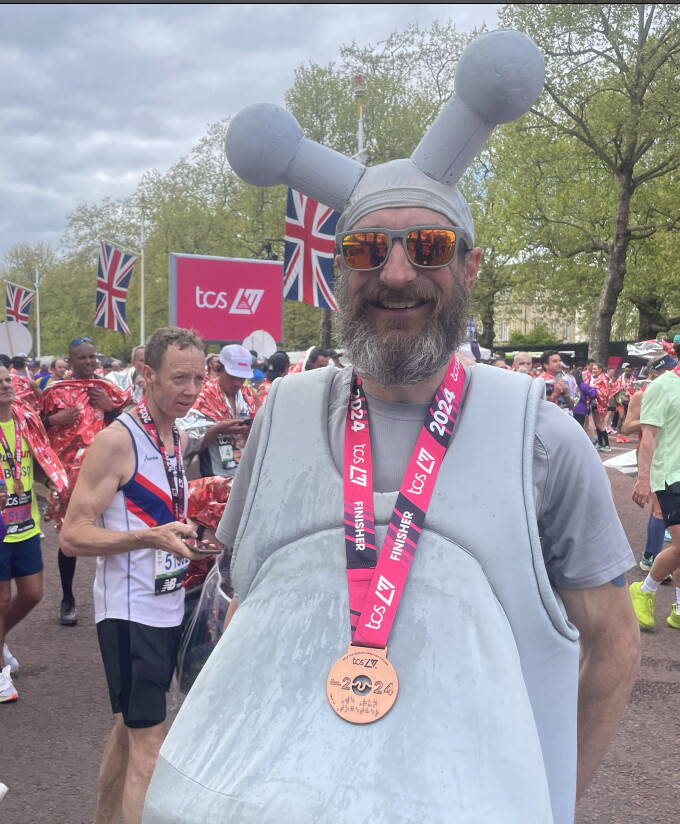
Among the remarkable stories was that of Jono Astle, a Londoner who not only ran the fastest marathon for someone with MS, but also raised a commendable $25,000 for the Multiple Sclerosis Society along the way.
Anthony Bryan, who lost the use of the left side of his body after having surgery to remove a brain tumor as a child, ran the fastest marathon by someone paralyzed down one side of their body, beating the previous time of 5:50. (Bryan, a lifelong supporter of Tottenham Hotspur FC, even met up with Spurs defender Ben Davies before the marathon for some extra encouragement to help him get the record.)
For the costumed runners, the outfits were as varied as the times they ran.
Lee Baynton of Essex ran the fastest-ever marathon in an inflatable costume, clocking a 3:21:07 while raising money for a local hospice. It was Baynton’s sixth marathon, but he said this was his favorite. “All the kids, as soon as they see you, are smiling, high-fiving. Everyone’s cheering and chanting, it’s incredible—I should do this every year,” he told The Independent.
Stephen Cochrane broke the Guinness World Record for the fastest marathon dressed as a scientist, although science could not save him from overheating during the race. “The lab coat gets sweaty, heavy, and you overheat very quickly. By halfway, I was really struggling,” he told the paper.
Simon Killen of Holbeach, England, broke the record for the fastest marathon dressed as a video game character. Ironically, it was not Sonic, but Mario, that Killen chose to beat the previous record of 2:57. It was also Killen’s personal best. No word if he used a mushroom beforehand, though he did complain of cramps.
Some overheated runners could have used a visit from Marcus Mumford, who ran the fastest marathon while dressed as a water tap, with a time of 3:10. Mumford loves plumbing fixtures, previously running London in 2014 dressed as a toilet. “I’m working my way around the bathroom items,” he told The Independent. “People didn’t really know what I was. I was called a weather vane, radio station. It’s all in aid of Water Aid – a fantastic charity.”
The full list of new Guinness World Records titles:
Peres Jepchirchir: Fastest marathon (female, women-only race) - 02:16:16
Richard Whitehead: Fastest marathon (LA3) (male) - 02:42:01
Simone Carniglia: Fastest marathon by a type 1 diabetic (male) - 02:44:33
Stephen Cochrane: Fastest marathon dressed as a scientist (male) - 02:48:51
Simon Killen: Fastest marathon dressed as a videogame character (male) - 02:52:57
Sam Hull: Fastest marathon dressed as a tennis player (male) - 02:59:38
Warren Parish: Fastest marathon dressed as a cheerleader (male) - 03:03:51
Holly Brownlee: Fastest marathon dressed in pyjamas (female) - 03:06:18
Jonathan Astle: Fastest marathon with multiple sclerosis (male) - 03:07:34
Marcus Mumford: Fastest marathon dressed as a tap/faucet (male) - 03:10:50
James Whistler: Fastest marathon dressed as a harlequin (male) - 03:12:00
Alison Stewart: Fastest marathon dressed as a videogame character (female) - 03:19:10
James Applegarth: Fastest marathon in pilot uniform (male) - 03:20:25
Ian Howard: Fastest marathon dressed as a rotating puzzle cube (male) - 03:20:31
Lee Baynton: Fastest marathon in a full-body inflatable costume (male) - 03:21:07
Matt Everett: Fastest marathon dressed as a traffic cone (male) - 03:22:16
Douglas O’Neill: Fastest marathon dressed as a sweet food (male) - 03:28:16
Gilles Dufosse: Fastest marathon dressed as a monarch (male) - 03:32:16
Kate Baldock: Fastest marathon dressed as a Star Wars character (female) - 03:33:12
Toby Norman: Fastest marathon dressed as a three dimensional aircraft (male) - 03:34:27
Ollie Shortt: Fastest marathon dressed as a body part (male) - 03:43:00
Laura Baker: Fastest marathon dressed as a sweet food (female) - 03:45:57
Tom Hall: Fastest marathon dressed as an emoji (male) - 03:50:17
Claire Casselton: Fastest marathon dressed as a skeleton (female) - 03:51:01
Ben Kellett: Fastest marathon carrying a bicycle - 03:54:52
Kimberly Siano: Fastest marathon dressed in a safari suit (female) - 03:54:58
Uilszaya Bodikhuu: Fastest marathon dressed in traditional Mongolian dress (female) - 03:59:56
Jennifer Stack: Fastest marathon dressed as a flag (female) - 04:01:02
Charlie Fitton: Fastest marathon dressed as a snowperson (female) - 04:05:52
Karen Stebel: Fastest marathon dressed as a mobile phone (female) - 04:08:42
Joanne Bridle: Fastest marathon dressed as a clown (female) - 04:16:36
Jani Barré: Fastest marathon in a non-racing wheelchair (female) - 04:19:21
Adrian Bebb: Fastest marathon dressed as a road vehicle (male) - 04:21:41
Andrew Roberts: Fastest marathon wearing chainmail (upper body) - 04:22:24
Alexandra Fresco-Sumner: Fastest marathon dressed as a mechanic (female) - 04:28:58
Caroline Duncan: Fastest marathon dressed in a flight suit (female) - 04:36:16
Emma Whatley: Fastest marathon dressed as a road vehicle (female) - 04:38:30
Andy Fountain: Fastest marathon dressed as a rocking horse (male) - 05:04:52
Phillip Beer: Fastest marathon dressed as a book (male) - 05:08:04
Georgina Box: Fastest marathon in a full-body inflatable costume (female) - 05:10:31
Anthony Bryan: Fastest marathon (CIH) (male) - 05:49:04
Brendan Matthews: Most T-shirts worn during a marathon (male) - 100 T-shirts
Jackie Scully, Frances Walker, Petr Maslov, Aileen Rice-Jones, Daniel Smith, Alex Weight, James Read, Kate Rham, Cameron Sharpe, Michael Edwards: Fastest marathon in a ten-person costume – 06:32:05
Lloyd Martin: Youngest person to complete a marathon (II2) (male) - 06:46:10
(04/27/2024) ⚡AMPby Runner’s World
British man runs 4-hour marathon while drinking 25 glasses of wine
A British man and TikToker combined two of his favourite things–running and wine–at this year’s London Marathon to complete an epic challenge for charity. Instead of opting for a flashy costume or a Guinness World Record, Tom Gilbey of London, an Internet wine connoisseur, took on the challenge of blind tasting a different glass of wine at every mile of the 26.2-mile course–and he still finished in a respectable time.
While most marathon participants focus on pacing themselves and staying hydrated with water or electrolyte drinks, Gilbey was fuelled by 25 different wines from around the world, savouring both white and red varieties along the route. Despite the unconventional and do-not-try-this-at-home approach, Gilbey completed the London Marathon in four hours and 41 minutes, finishing 22,316 overall in a field of 30,000-plus.

To make the marathon more challenging, Gilbey guessed each wine he was drinking at each mile, and despite the mental and physical fatigue (from the drinking and the marathon), he guessed 21 of the 25 wines correctly. Gilbey said he even had a glass of champagne waiting for him at the finish line, but his friend’s phone died (who was shooting the video for him).
Gilbey wasn’t just in it for the (dubious) accomplishment; he also ran for a cause close to his heart. The TikTok wine expert raised money for the Sobell House Hospice Charity in Oxfordshire, U.K., in memory of his mother, Caroline.
Gilbey posted updates on TikTok under the username @tomgilbeywine, garnering over 2.5 million views in 24 hours. The online community was astounded by Gilbey’s accomplishment, with many expressing admiration for his ability to combine two seemingly disparate passions—running and wine. One user hilariously commented, “I did this last night without the running.”
Besides being a wine-drinking marathoner, Gilbey has spent his entire life working with wine, and also runs his own wine business—so it makes sense why he was able to identify so many of them correctly.
His goal was to raise £2,000 (CAD $3,400) for Sobell House Hospice, and he’s gone well beyond his fundraising goal, raising nearly £14,000 (CAD $23,800). If you’d like to contribute to Gilbey’s fundraiser for Sobell House, you can do so here.
(04/27/2024) ⚡AMPby Running Magazine
Reddit founder Alexis Ohanian to create a women-only track event
In a move to advance women’s track and field, Reddit founder Alexis Ohanian has announced the launch of a groundbreaking women-only track event called the 776 Invitational, set to take place this September. The invitational aims to become the flagship event for women’s track and field by offering the largest-ever purse for a women-only competition.
According to Sportico, the winner of each event will take home USD $60,000, surpassing the prize money for winning a Diamond League race ($10,000) and even Olympic gold in Paris ($50,000). Second and third place will also be rewarded with a $25,000 and $10,000 purse, respectively.
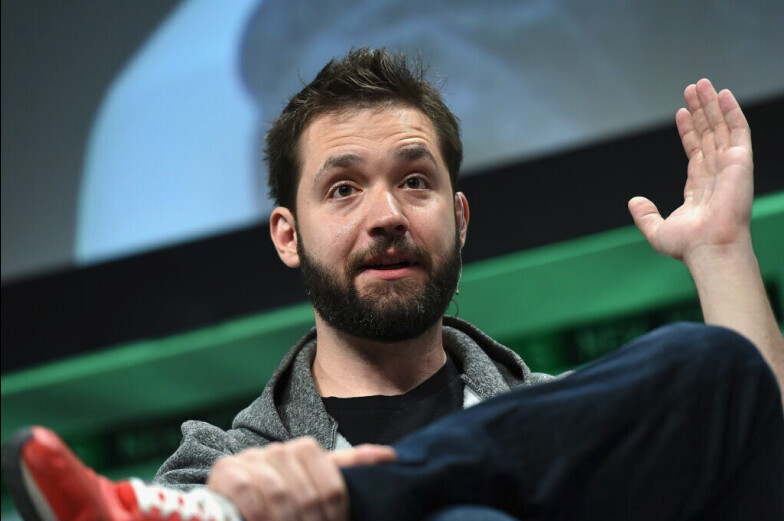

Ohanian isn’t going into this venture alone; he will partner with two-time Olympic medallist, Harvard graduate and American sprinter Gabby Thomas for the launch. “We believe in the power of sports to drive positive change and inspire future generations,” Ohanian said in a statement to Sportico. “By investing in women’s track, we aim to build a best-in-class event that elevates the profile of top women athletes and creates a more equitable sporting landscape.”Thomas echoed Ohanian’s sentiments, stating, “Through this investment, we hope to not only provide athletes with the resources and visibility they need to have enduring careers but also to inspire fans worldwide with a reinvented format to experience the best of our sport.”While an exact date for the 776 Invitational has yet to be revealed, it comes amid a busy year in the track and field calendar, with the Paris Olympics less than 100 days away. The motivation for the 776 Invitational stems from the lack of attention track and field receives outside of the Olympics.
Thomas recently voiced her dissatisfaction with visibility in the sport stemming from a new media deal between the Wanda Diamond League (track and field’s premier circuit) and American online broadcaster FloSports.The 776 Invitational would offer the highest purse for any single-day track and field event. Winners of each of the 14 Diamond League meets are awarded USD $10,000, while athletes who win the annual Diamond League final are awarded $30,000.Ohanian, husband of tennis legend Serena Williams, has long supported women’s sports. The announcement of the 776 Invitational marks the second significant move by Ohanian in support of women’s sports this week.
On Monday, Ohanian and his foundation announced their investment in a women’s Portland sports bar to aid its national franchise expansion.
(04/27/2024) ⚡AMPby Running Magazine
76 year old Jeff Aston has run every London Marathon
There are only six people who can say they have run every London Marathon and Jeff Aston is one of them.
In 1980 he spotted an advert for the event due to take place the following year and decided to go for it.
Now, four decades later, Jeff, 76, from Cardiff, is celebrating completing is 44th and has no plans on stopping.
When he was younger, Jeff enjoyed playing squash and football until the River Taff flooded the courts where he played and he started running around the playing fields.
While leafing through a magazine in 1980, he came across an advert for the first London Marathon, held the following year, and decided to go for it.
"I always wanted to run a marathon when I was a teenager," he said.
"When the first London Marathon came on to the scene, back then it was the biggest marathon in the UK."
Just six months before the event, Jeff started Les Croupiers running club in Cardiff.
Looking back on his first race, when only 7,000 people took part compared with 53,000 now, he remembers the atmosphere: "I remember it was a drizzly and windy day, with the noise of the crowds.
"By then I had run a few marathons and races so I knew what was coming. But it was the first time I had been to such a mass event at that time."
By 1983, Jeff had recorded his best time after completing the course in 2:29:31.
During the pandemic in 2020 the event was open for a select few to take part in the race where they lived.
That year, Jeff raised money for the City Hospice in memory of his late wife Val, who died in 2016 after being diagnosed with cancer.
Jeff signed up for the first London Marathon after seeing an advert in the national running magazine
An "ever-present" runner is someone who has run every London Marathon.
In 1995, organisers recognised these runners by awarding them a special commemorative medal and guaranteed acceptance for future events.
Now, there is only Jeff and five other ever presents left.
In last Sunday's race, Jeff clocked a time of 8:06:27, finishing 61st in his age category.
So why does Jeff take on the challenge every year?
"It's the challenge of the marathon distance that keeps me going. Going back every year and trying to meet your personal best.
"I'm a lot slower than what I was at my peak but I think 'what can I do to be better this year than I was last year?'
"While I still can do it, I will do it."
(04/26/2024) ⚡AMPby BBC
Jennifer Bigham to Headline Women’s Field at 2024 DICK’S Sporting Goods Pittsburgh Marathon
Pittsburgher Jennifer Bigham will headline the women’s field at the 2024 DICK’S Sporting Goods Pittsburgh Marathon on Sunday, May 5. Bigham, a formidable force in the local running community, has an impressive record that includes victories at the USA Masters Half Marathon Championships and the USA Masters One Mile Championships in 2022. With five wins at the City of Pittsburgh Great Race, she already has cemented her status as a local legend but is now ready to tackle 26.2 miles for the first time in PIttsburgh.
“I’ve been looking forward to running the Pittsburgh Marathon for many years, and my time has finally come,” Bigham said. “I’ve been a part of many events on marathon weekend, from the toddler trot and kids marathon, to the 5K, and half-marathon. Lining up to experience the full 26.2 in my city that I love will be very special. I know the cheers from my community on race day will power me through the tough moments. This finish line will be a special one for me!”
After taking an eight-year hiatus from competitive running post-college, she returned to the sport following the birth of her first child. Now a mother of four, Bigham’s comeback story is an inspiration to athletes and parents alike. Her remarkable comeback was highlighted by qualifying for and competing in the 2020 U.S. Olympic Marathon Team Trials.
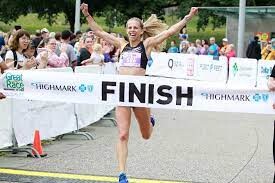
This year she will face tough competition from Jane Bareikis, who set a marathon personal best of 2:29:00 at the Berlin Marathon last fall, and local runner Laura Harnish, who also ran in the 2020 U.S. Olympic Marathon Team Trials and holds a marathon personal best of 2:42:09.
The 2024 DICK’S Sporting Goods Pittsburgh Marathon will offer a prize purse of $32,000 with a $7,000 top prize. For more information about the 2024 DICK’S Sporting Goods Pittsburgh Marathon, visit thePittsburghMarathon.com.
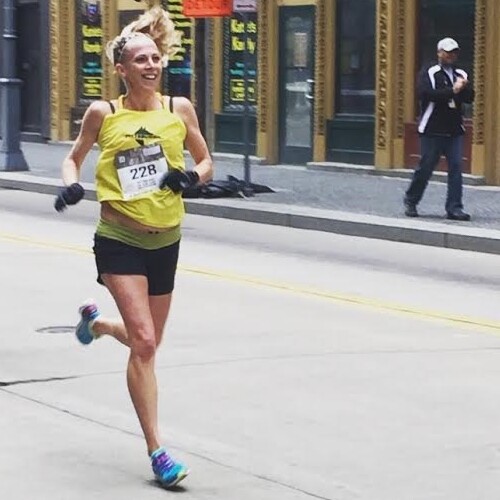
About the DICK’S Sporting Goods Pittsburgh Marathon Weekend of EventsThe Pittsburgh Marathon was held annually from 1985-2003. After a five-year hiatus, the DICK’S Sporting Goods Pittsburgh Marathon was relaunched in 2009 and debuted with a sold-out field of 10,000 participants. It has grown each year since, evolving from a single race day into a weekend of events for the whole family that annually attracts nearly 40,000 runners. Read more at: ThePittsburghMarathon.com
About P3RP3R is the region’s go-to premier sporting event and experience expert. While best known for the annual DICK’S Sporting Goods Pittsburgh Marathon, P3R organizes up to 20 major events every year. With a rich history of working with top-tier clients such as the Pittsburgh Steelers, UPMC Hillman Cancer Center, the Pittsburgh Penguins, the National Senior Games, and more, P3R brings operational excellence to every aspect of event planning and execution. As part of P3R’s non-profit mission to inspire any and all to MOVE with us, we provide premium event experiences and robust programming – including the Run for a Reason Charity Program, award-winning Kids of STEEL program, Pittsburgh Corporate Challenge, RUN Varsity, and more – that engage everyone in the Western Pennsylvania community and beyond.
(04/26/2024) ⚡AMPDick's Sporting Good Pittsburgh Marathon
This race is your game - however you decide to play it. As a competitor. A fund raiser. An enthusiast. A veteran. A team player. It's whatever you want it to be. It's whatever you make it. It's YOUR game..... Run it. Play it. Own it. Love it. Runners will race on the North Shore of Pittsburgh, cross each of...
more...How many rest days should you take the week of your marathon?
You might be tempted to run or cram in last-minute training, but that is not the best approach.
Preparing for a marathon requires a lot of planning and training, and every little detail is crucial to have a great performance come race day. However, one question often arises in the minds of runners as the taper begins and race day approaches: how many rest days should you take in the week leading up to the marathon?
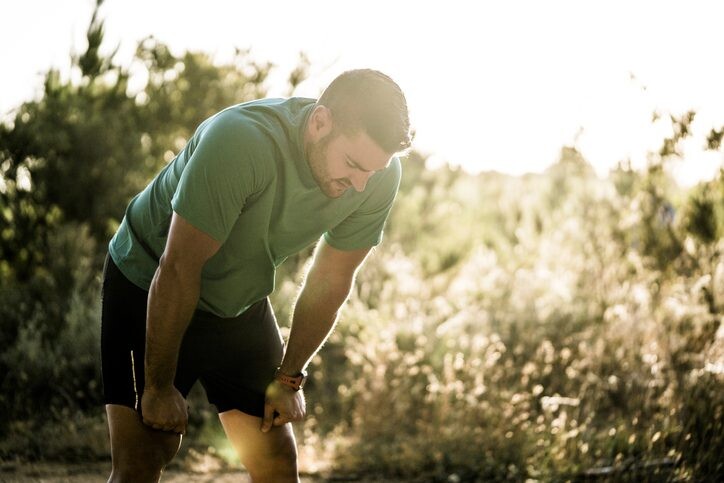
While there could be an urge to push through training until the very last minute, it is not the best approach to get the most out of your body. Top marathon coaches all emphasize the importance of tapering, a period of reduced training volume and intensity before a race, to allow the body to rest and recover while maintaining fitness levels. But how many rest days are ideal during the tapering phase?
Several acclaimed marathon coaches like Jack Daniels and Hal Higdon recommend reducing training volume by 25 to 30 per cent during the first week of tapering, with two to three easy runs of five to eight kilometres and at least two rest days. In the final week, they recommend further reducing the volume to just 10 to 20 percent of your peak mileage. To ensure you’re fully rested and ready for race day, shorten your easy runs and incorporate three to four rest days.

However, since our bodies all respond differently, listen to yours and adjust the tapering plan or rest days accordingly. If you’ve just completed an extensive marathon build, your body will feel great, and you might be tempted to run. The tapering period tends to mess with your mind and makes you feel like you’re not doing enough.
While rest days are essential for recovery, runners should also focus on other aspects of preparation during the tapering phase, such as proper hydration, nutrition, and mental readiness. Additionally, light cross-training activities such as swimming or cycling can complement those rest days and help maintain fitness without adding more stress to the muscles and joints.
(04/26/2024) ⚡AMPby Marley Dickinson
Kipchoge expects tough test in Paris
Two-time Olympic champion Eliud Kipchoge anticipates a fierce battle at the Paris Olympic marathon, even tougher than when he won the first of his two titles in Rio 2016.
“It will be a tough race. 106 countries will be participating. Everyone at the start line is a champion in their rights. I do not underrate anybody. I am not the same as when I won my first title,” Kipchoge noted.
Last month, Kipchoge ran at the Tokyo Marathon, where he placed 10th in 2:06:50.
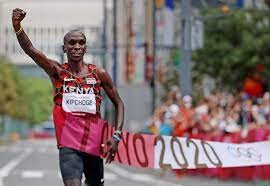
In a post-race interview, Kipchoge stated that it was a bad day in office for him but he hopes to build on the lessons learned.
The legendary Olympian said his sights are set solely on the Olympics, ruling out any other race as he puts all his energy and focus into securing a hat-trick of titles.
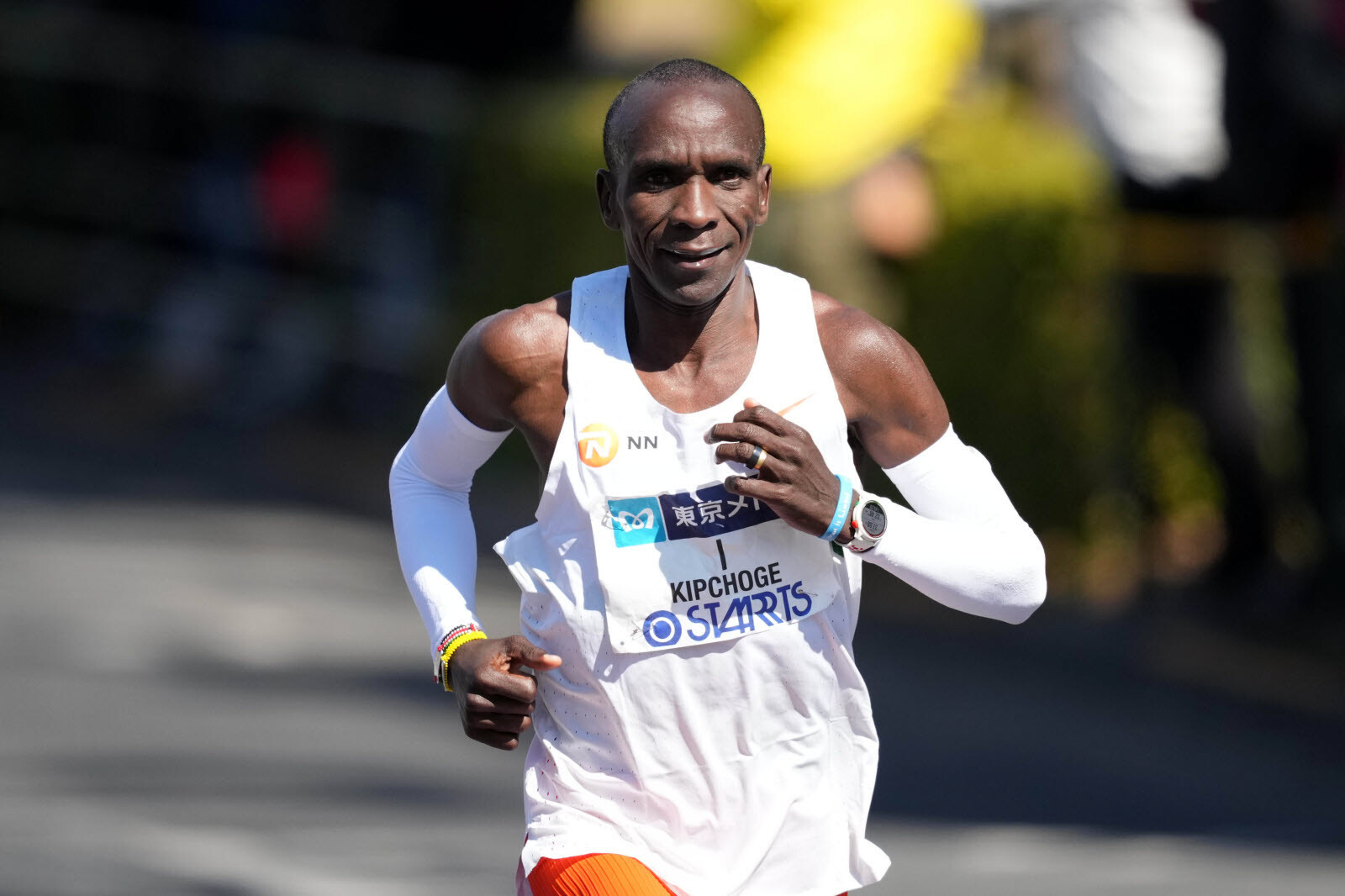
“I have no plans to race in any other marathon. I am putting all my mind and training into the Olympics. I want to win a third title,” he noted.
Confident in his abilities, the 39-year-old is determined to earn his spot to make his fifth appearance in the global extravaganza.
“I trust I will make the final three to represent Kenya in Paris. This will be my fifth appearance in the Olympics,” he noted.
Athletics Kenya presented a list of five male athletes to the National Olympics Committee of Kenya to undergo training in readiness for the Olympics. Only three will go to Paris.
Kipchoge is joined by the Tokyo Marathon champion Benson Kipruto, Kagawa Half Marathon silver medalist Alexander Mutiso and Tokyo Marathon silver and bronze medalists Timothy Kiplagat and Vincent Ngetich.
“Representing Kenya at such a stage feels good. This is the only way I can give back to my country. I can’t build bridges or roads. This is how I show my patriotism to my country,” he noted.
Kipchoge’s first appearance at the Olympics was in Athens 2004, where he won bronze in the 5,000m clocking 13:15.10. He upgraded it to silver at Beijing 2008 in a time of 13:02.80 — behind Ethiopia’s Kenenisa Bekele (12:57.82).
In Rio 2016, he clocked 2:08:44 to bag the marathon title and defended it at Tokyo 2020, clocking 2:08:38.
NOC-K secretary general Francis Mutuku tipped Kipchoge to achieve his dreams, especially with the determination and discipline he has shown in training under Patrick Sang.
“Sang told us that when he says training starts at 5 am, Kipchoge is ready at that time. He is devoted and disciplined in his training,” he noted.
Despite facing criticism, Kipchoge remains grounded, believing that humility is the ultimate key to triumph.
“The longest tree receives all the wind. The tree can lose all its leaves and endure the winter and still be firm. Being humble has been and will always be the key to success,” he added.
(04/26/2024) ⚡AMPby Teddy Mulei
Paris 2024 Olympic Games
For this historic event, the City of Light is thinking big! Visitors will be able to watch events at top sporting venues in Paris and the Paris region, as well as at emblematic monuments in the capital visited by several millions of tourists each year. The promise of exceptional moments to experience in an exceptional setting! A great way to...
more...Natasha Wodak on her last dash for the Paris Olympics
With her final attempt at qualifying for this summer’s Paris Olympics just days away, Canadian marathon record holder Natasha Wodak says she feels proud of her marathon build and confident going into Sunday’s Hamburg Marathon. After falling short of the Olympic standard at the Houston Marathon in January, Wodak quickly embarked on another marathon build.
Wodak, who is 42, runs less mileage than some other elite athletes, and her builds include a lot of cross-training, which provides an aerobic hit while minimizing the risk of injury. Wodak’s favourite mode of cross-training is to use the elliptical trainer, and she shared three ways the elliptical aids her training, for the benefit of newcomers and seasoned runners alike.
Injury prevention
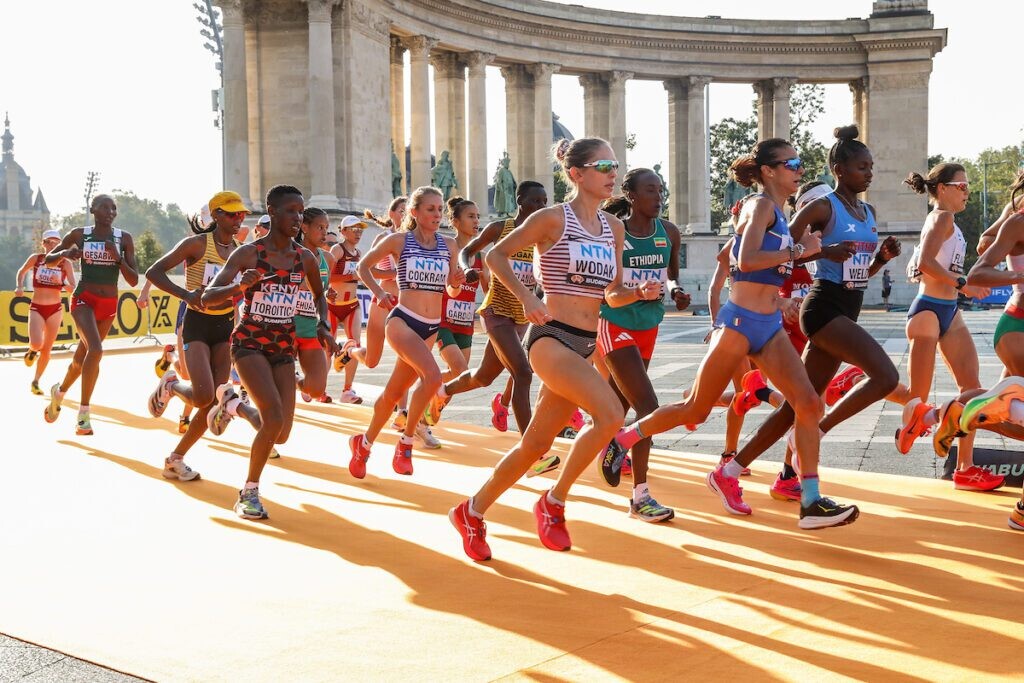
In 2020, after facing a series of injuries that resulted in Wodak developing arthritis in her toes, her coach at the time, 1984 Olympic bronze medallist Lynn Kanuka (she is currently coached by physiologist Trent Stellingwerff) decided to mix things up. “We were like, ‘if we’re going to do the marathon, it’s a big injury risk, so we’re going to do a lot of cross-training,’” Wodak says. That’s when Wodak started getting on the elliptical trainer two or three times a week, which significantly benefited her aerobic fitness without stressing her joints or soft tissues. (Studies show that low-impact exercise modalities, such as the elliptical trainer, provide a great way to avoid injuries to bone, tendon, muscle, or ligaments). With the elliptical, Wodak explains, “I know it’s going to feel good; it’s not going to hurt.”
Changing things up
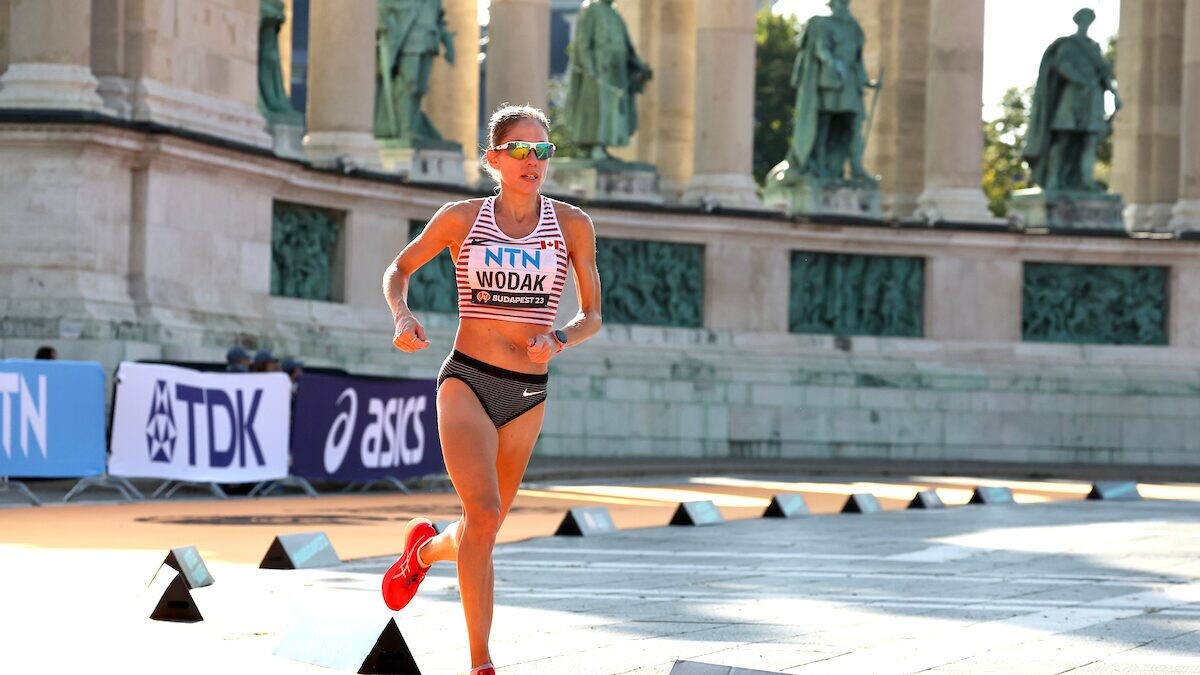
Unlike other elite female marathoners, who typically hit 200 kilometres a week and do double workouts, Wodak normally runs 140 kilometres weekly and supplements doubling with workouts on the elliptical trainer. “I do feel somewhat unique as an elite marathoner,” Wodak says, “but you just have to find what works for you and not get carried away with the numbers … I’m not losing a lot of mileage this way, and it works for me,” she says.
In addition to changing up the mode, Wodak likes to find ways to change her scenery. Wodak’s hometown, North Vancouver, rains an average of 157 days a year. For Wodak, the elliptical provides a break from the often unpredictable and rainy climate. “We have an elliptical at home, so on a day when it’s pouring outside, I can watch TV set up across from me… it’s nice!” Wodak says with a laugh.
Lowering the impact
Compared to running outdoors or on a treadmill, research shows that the impact on leg muscles is reduced through elliptical training. “It uses many of the same muscles without the same impact, and it’s not hurting my toes,” Wodak explains. While running in Houston, she suffered an injury to her hamstrings, and a cramp in her right calf late into the race. To prevent any chance of injury this time, she stuck to the formula that works best for her: lower mileage and lots of cross-training. So far, it’s doing the trick. “The marathon build went well–better than I could have hoped for with the short turnaround, and it seems to be getting better with tapering,” says Wodak.
Just days before hitting the start line in Hamburg, Wodak says her body feels much more ready than in Houston. She recalls, “The week leading up, I had a gut feeling that the race wasn’t going too well, my body didn’t feel good, and I thought about postponing.” This time, Wodak says she feels at ease, enjoying quality time with her team in Germany instead of worrying. “You don’t want to sound cocky, but you really have to believe it wholeheartedly, so I’m trying to do that,” says Wodak. “I’m excited, ready to go, and going to run standard; it’s happening.”
(04/26/2024) ⚡AMPby Katrianna Desante
Haspa Marathon Hamburg
The HASPA MARATHON HAMBURG is Germany’s biggest spring marathon and since 1986 the first one to paint the blue line on the roads. Hamburcourse record is fast (2:05:30), the metropolitan city (1.8 million residents) lets the euphoric atmosphere spill over and carry you to the finish. Make this experience first hand and follow the Blue Line....
more...Berihu, Ayele and Zeray ready for fast racing in Istanbul on Sunday April 28
Solomon Berihu of Ethiopia and Kenya’s Gladys Chepkurui head a very strong field of elite runners at the Türkiye Is Bankasi Istanbul Half Marathon on Sunday. They feature personal bests of 59:17 and 65:46 respectively. The men’s field is really impressive since eight runners have already broken the one hour mark and another nine feature personal bests of sub 61:00.
There are seven women with sub 68:00 PBs and an additional three have run under 70:00. A couple of European runners will try to achieve the qualifying times for the European Championships in Rome in June. Among them are Turkey’s record holder Ali Kaya, who will start a comeback, and Sweden’s debutant Meraf Bahta. The required times stand at 61:40 and 70:30 for men and women respectively.
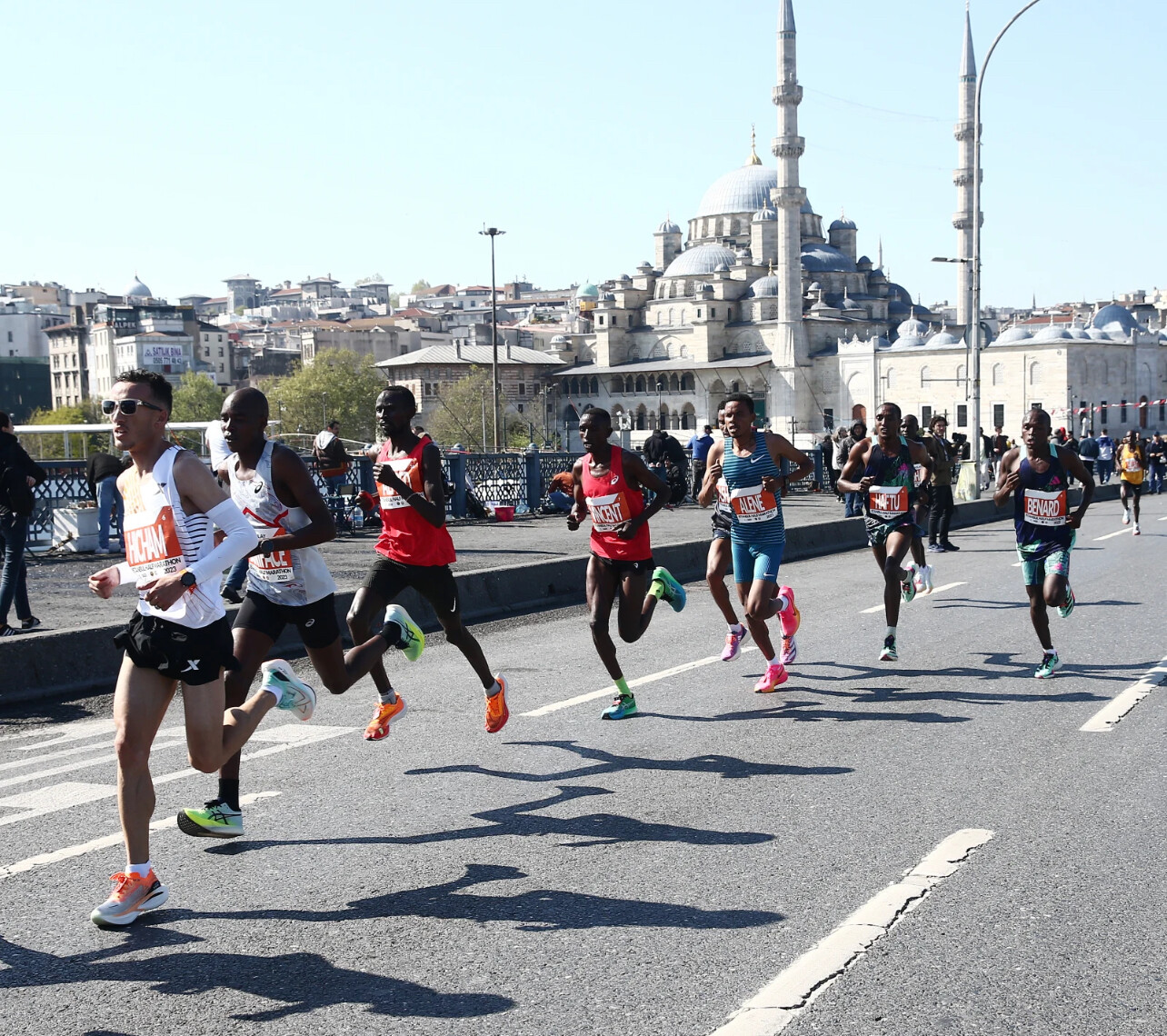
Organisers of the Türkiye Is Bankasi Istanbul Half Marathon, which is a Gold Label Road Race of World Athletics, have registered a record number of 14,200 runners. This includes a 10k race staged parallel on Sunday. Turkey’s number one road race is one of the world’s major half marathons and has a world record course. Three years ago Kenya’s Ruth Chepngetich broke the global mark in Istanbul with 64:02. While the world record has been improved since the course record still stands and will likely remain in place on Sunday.
However there could still be another very fast time from the women’s winner on Sunday. With a personal best of 66:04 Ftaw Zeray is the second fastest on the start list behind Gladys Chepkurui. It was three weeks ago when the 26 year-old ran her first race of the year and finished runner-up in the Berlin Half Marathon. In very difficult conditions with temperatures well over 20 Celsius she still ran 67:22. “I have well recovered from the race in Berlin. I feel I can run a personal best on Sunday,“ said Ftaw Zeray, who was sixth in the World Half Marathon Championships last year.
With regard to the weather forecast high temperatures will not be a problem for Ftaw Zeray on Sunday in Istanbul. But with six other women who have already run sub 68:00 the challenge is likely to be tougher than in the German capital. While Gladys Chepkurui missed her flight to Istanbul and will now arrive half a day later, she will hardly be delayed when it comes to racing fast. The Kenyan clocked her 65:46 PB in Barcelona a year ago and has run sub 70:00 eleven times.
Ethiopians Betelihem Afenigus and Aberash Shilima are the next fastest on the entry list with PBs of 66:46 and 67:26 respectively. However a debutant could also be in the mix for a place on the podium: Just 21 years old Miriam Chebet showed great form and consistency this year with three sub 31:00 times at 10k. When she won the race in Ibiza, Spain, in January she clocked a fine PB of 30:40.
Another promising debutant is Sweden’s Meraf Bahta. The European 5,000 m champion from 2014 is a late entry to the Türkiye Is Bankasi Istanbul Half Marathon. The 34 year-old is the Swedish 10k record holder with a 31:22 PB from 2022. The former Eritrean could qualify for the European Championships if she runs 70:30 or faster in her debut. Due to an injury Italy’s Giovanna Epis had to withdraw from the race in Istanbul.
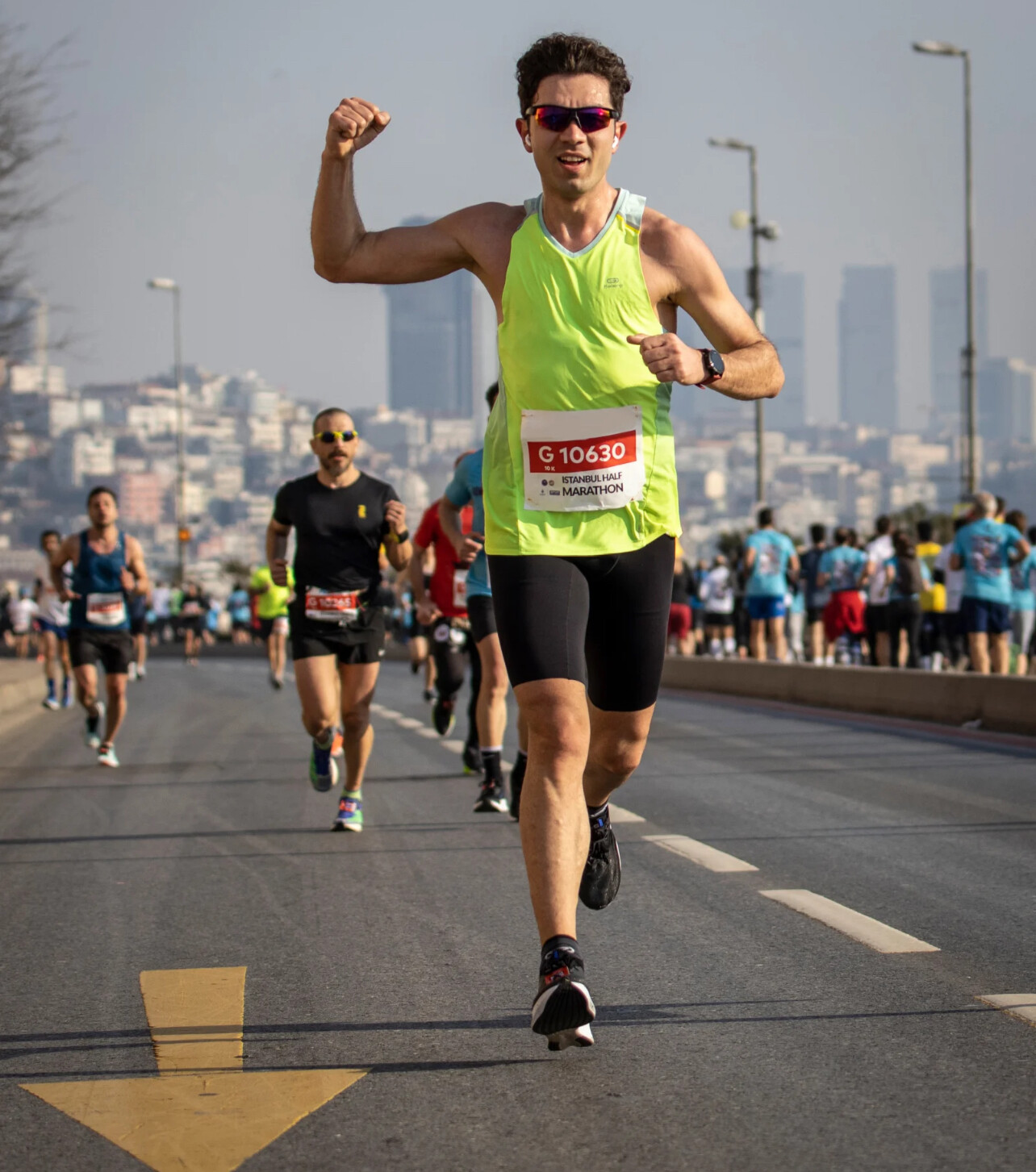
Solomon Berihu is the fastest runner on the start list with his PB of 59:17. He ran this time back in 2019 in New Delhi and has not raced for almost a year. “I had an injury that kept me away from training. Now, I am feeling better and I am back in shape,“ explained the 24 year-old Ethiopian, who hopes to come back with a bang on Sunday. “My first goal is to win the race, but I am also hoping to run 59:30 or even faster.“ The Istanbul course record stands at 59:15.
Another Ethiopian is among the hot favourites: Dinkalem Ayele has shown great form this year when he improved to 59:30 in Barcelona and then won the Lisbon Half Marathon in very warm conditions with 60:36. “I am in good form and confident that I can go close to 59 minutes if weather conditions are suitable,“ said 23 year-old Dinkalem Ayele.
Solomon Kipchoge will probably be among the athletes who will challenge the two Ethiopians. The Kenyan, who improved his half marathon PB by almost two and a half minutes last year when he ran 59:37 in Lille, chose to come to Istanbul because of the fast course. “I will not start the race with a certain time or placing in mind. It depends on how my body will feel during the race. But I will try to improve my PB,“ said Solomon Kipchoge, who has the same surname as the double Olympic Champion Eliud Kipchoge. “I have no connection to Eliud, I am often asked about this outside Kenya. I am happy to be asked, because Eliud is a legend.“
Having not race since 2020 Ali Kaya surprised the organisers when he asked them to include him on the start list for a comeback race. The 30 year-old former Kenyan, who competed for Turkey since 2013, is a former winner of the Türkiye Is Bankasi Istanbul Half Marathon. When he took the race in 2016 he established a national record of 60:16 that still stands today. The 61:40 qualifying time for the European Championships could be a goal for Ali Kaya. Spaniard Juan Antonio Perez, who has a PB of 60:58, will probably also target this time.
Elite runners and personal bests
MEN
Solomon Berihu ETH 59:17
Edmond Kipngetich KEN 59:25
Dinkalem Ayele ETH 59:30
Solomon Kipchoge KEN 59:37
Benard Biwott KEN 59:44
Antony Kimtai KEN 59:45
Tadesse Abraham SUI 59:53
Hicham Amghar MAR 59:53
Hillary Kipchumba KEN 60:01
Abraham Kipyatich KEN 60:03
Gemechu Bute ETH 60:12
Ali Kaya TUR 60:16
Cameron Levins CAN 60:18
Vincent Mutai KEN 60:20
Edward Pingua KEN 60:44
Benard Sang KEN 60:57
Juan Antonio Perez ESP 60:58
Albert Rop BRN 61:05
Mathew Samperu KEN 61:06
Tegegn Tamerat ETH 61:15
Ashenafi Moges ETH 61:22
WOMEN
Gladys Chepkurui KEN 65:46
Ftaw Zeray ETH 66:04
Betelihem Afenigus ETH 66:46
Aberash Shilima ETH 67:26
Anchinalu Dessie ETH 67:30
Zewditu Aderaw ETH 67:44
Betty Kibet KEN 67:44
Ruth Jebet BRN 68:22
Zinashwork Yenew ETH 69:16
Sheila Chelangat KEN 69:38
Meseret Dinke ETH 70:39
Amina Bettiche ALG 71:38
Miriam Chebet KEN Debut
Meraf Bahta SWE Debut
(04/26/2024) ⚡AMPIstanbul Half Marathon
The Türkiye İş Bankası Istanbul Half Marathon is one of the fastest and most scenic races in the world, taking runners along the historic Golden Horn in Istanbul—once the heart of three great empires. Held annually in April, it attracts a world-class field and thousands of amateur runners. The flat, fast course makes it ideal for personal bests. The current...
more...Jeannie Rice not only won the W75-79 age category at the London Marathon by 30 minutes–she also would have won the men's category
At the 2024 TCS London Marathon, 76-year-old running sensation Jeannie Rice shattered her own world record in the women’s 75-79 age group, clocking in at an impressive three hours, 33 minutes and 27 seconds. She surpassed her previous world record set just last October in Chicago (at age 75) by more than a minute.
Rice not only won the W75-79 age category at the TCS London Marathon by 30 minutes, she also would’ve won the men’s 75-79 category by 11 minutes. She averaged a ridiculous 5:03/km (or eight-minute mile pace) at age 76 for 42.2K.
Rice told the media post-race that she was happy to have run an age-group record, but was hoping to finish closer to three hours and 30 minutes. “I fell off in the first few miles… I guess I’ll have to figure it out and run better in Berlin,” she said.
(04/25/2024) ⚡AMPDefending champions return to defend Belfast Marathon crowns
A RECORD 5,500 runners are expected to take to the streets of Belfast on Sunday, May 5 for the sold-out Moy Park Belfast City Marathon, making it the biggest to date.
The 2023 winners, Morocco’s Mohamed Oumaarir and Kenyan Shewaye Wolde Woldemeskel, will be there to defend their respective male and female titles.
Oumaarir, who ran a time of 2:22:54 for the overall victory 12 months ago, will lead a strong contingent of international and local athletes. These include former Great Britain and Wales steeplechase representative Adam Bowden, who finished runner-up in last year’s event.
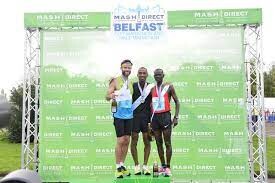
There are three interesting entries of east African origin. Former Ethiopian and now Bahrain national Aweke Ayalew finished 11th in the 2018 World Half Marathon Championships, recording a world-class time of 61 minutes and 19 seconds. More lately he clocked 2:07:12 in the 2019 Frankfurt Marathon, making him the fastest man in the field.
The Kenyan duo of Mathew Kemboi and Moses Kilmulwo also boast impressive credentials. Kemboi finished fourth in last November’s Istanbul Marathon in a time of 2:13:48, while Tuyange was 15th at the Barcelona Marathon last month in a time of 2:12:43.
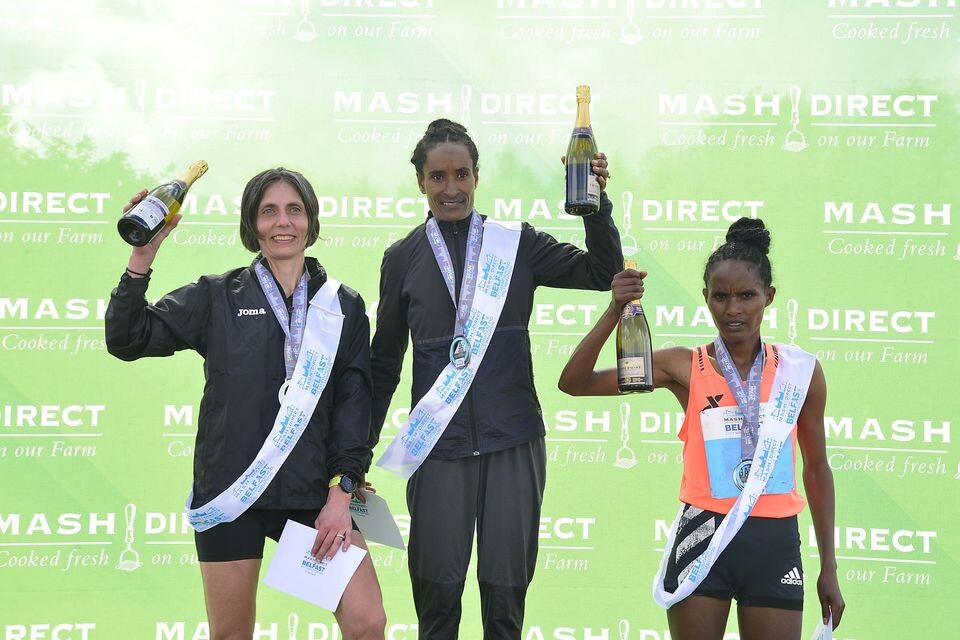
Also taking to the field, will be GB’s Michael Young, who recently ran a time of 2:24:33 in December at the Valencia Marathon; William Strangeway, who finished third in the Murcia Costa Calida Marathon last year, recording a time of 2:20:32; and Welshman, Dan Nash, who won the Great Welsh Marathon on St Patrick’s Day in a time of 2:27.19.
Favorite for the first local prize is Annadale Strider Eskander Turki, who won the 2023 Moy Park Belfast City Half Marathon in a time of 1:09:10.
Dark horse here is the comeback kid Ed McGinley, who returned to the sport after an absence of nine years to win the Larne 10 Miles just over a week ago.
Conor Gallagher of St Malachy’s should not be ignored either given he was runner-up in the 2022 Belfast Marathon.
Turning to the women’s race, it will be Woldemeskel’s third time competing in Belfast, while Morocco’s Hanane Qallouj is no stranger to the Emerald Isle either, finishing sixth at the Dublin Marathon last October in a time of 2:37:20.
Others to watch out for are Qallouj’s compatriot Laila Aziza Selsouli, who finished eighth in the Marrakesh Half Marathon, and Kenya’s Beatrice Jepkemei, who recently ran 2:30:41 in the Linz Marathon.
North Belfast Harrier Gladys Ganiel heads the home challenge.
This year’s Moy Park Belfast City Marathon runners will be joined by 12,500 relay runners and another 1,200 participants in the 8-Mile Walk, all adding up to making it the biggest mass sport participation event in the north.
(04/25/2024) ⚡AMPby Malcolm McCausland
Belfast City Marathon
The event has grown with the inclusion of new sponsors which now include Deep River Rock, Belfast City Council, U105, ASICS, Daily Mirror, Translink, Athletics Northern Ireland, Linwoods, Belfast Live, Centra, White's Oats, Podium 4 Sport, U105 and Tayto. The route will remain the same - starting at the City Hall and finishing at Ormeau Park. The race starts at...
more...World record holder Jacob Kiplimo is first elite athlete named to run the Copenhagen Half Marathon
Organizers of the Copenhagen Half Marathon have announced that Jacob Kiplimo will run in the event on September 15.
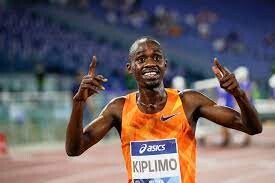
Kiplimo, the current world record holder for the half marathon, may try to beat his own record of 57:31 set in Lisbon in 2021, suggested organizers.

Despite his age of only 24, Jacob Kiplimo of Uganda has already established himself as one of the world’s leading long-distance runners. This year he also shows excellent form where won the World Athletics Cross Country championships in Belgrade.
“We are proud that Jacob Kiplimo will start in Copenhagen. His participation is a clear proof that Copenhagen Half Marathon is established as one of the most prestigious and fastest half marathon races in the world and can attract both the absolute world elite and a record number of participants from both Denmark and abroad,” said Dorte Vibjerg, CEO of the organizers, Sparta Athletics & Running.
(04/25/2024) ⚡AMPby AIMS
Copenhagen Half Marathon
The Copenhagen Half Marathon was the first road race in Scandinavia and is one of the fastest half marathons in the world. The Copenhagen Half Marathon has been awarded with the International Association of Athletics Federation's (IAAF) most distinguished recognition - the IAAF Road Race Gold Label. Copenhagen Half Marathon was awarded the IAAF Road Race Bronze Label in January...
more...Try this workout anytime, anywhere
Adjust this bread-and-butter workout to suit whatever time and terrain you have available.
Even the most organized and well-prepared runner occasionally finds themselves scrambling to fit training into an overly busy schedule, or trying to slot it around unexpected life events. It’s helpful to have a few simple workouts that can flex with whatever time and terrain you have available. This session can fit seamlessly into your regimen, with customizable intervals to match your aim and ability.
No matter what your end goals are, you’re probably doing some combination of easy runs and speedwork, hill intervals and longer runs; most training plans also include tempo runs. Tempo sessions involve intervals that are run at a “comfortably hard” pace—this boosts your anaerobic threshold, so your body adapts to performing comfortably at a higher intensity.

The workout
Warm up with 10-15 minutes of easy running.

Run 5-10 x 3 minutes at 10K effort with 1 minute of easy recovery, aiming to stay consistent throughout all intervals.
Cool down with 10-15 minutes of easy running.
How to modify
If you’re training for a longer race like a marathon or ultra, extend your intervals and ease up on your pace. You should still be running at an effort that takes focus to maintain, but opt for a half-marathon pace (or slightly slower).
Short on time but still want maximum impact? Tighten up your intervals, ramp up your speed or cut your recovery time in half: try running 10 x 2 minutes with 30 seconds between intervals, at 5K pace. Feel free to shorten the length of your warmup and cooldown times, but make sure your legs feel fully prepared to work hard. Alternatively, if you have a few extra minutes when you have completed your cooldown and really want to finish your legs off, tack on a quick series of strength exercises, like these.
This session works on the road, trails or treadmill, and if you’re training for a hilly race, simply take those intervals uphill. Make sure to follow a harder training session with an easy recovery or rest day.
(04/25/2024) ⚡AMPby Keeley Milne
Bernard Koech hoping to retain Haspa Marathon title and pocket millions of prize money set aside
Defending champion Bernard Koech has plans to successfully defend his title and walk away with the millions set aside as prize money for the top finishers.
Defending champion Bernard Koech hopes to defend his Haspa Marathon Hamburg title on Sunday, April 28 as he also chases the hefty prize money set aside for top finishers of the race.
Koech broke the course record last year after cutting the tape in 2:04:09 and he returns to the 38th edition of one of Germany’s greatest road races, with eyes set on the prize.
The Kenyan opened his season with a win at the Harmonie Mutuelle Semi de Paris and he looks to continue the winning streak in the streets of Hamburg.
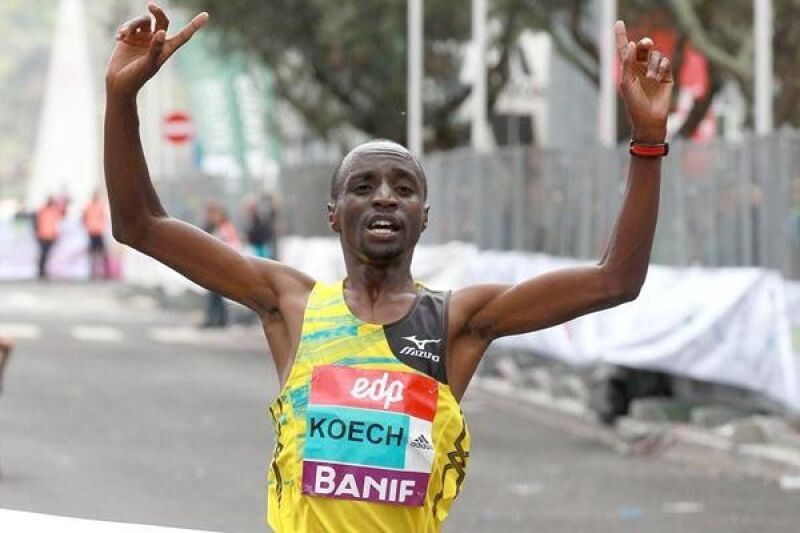
As he returns to one of his favorite courses, the 36-year-old will also be fighting for the millions of prize money up for grabs, since the event is a World Athletics Gold Label Road Race. As per World Athletics, the minimum prize money for winners in such an event is about Ksh 4 million.
The athletes who finish second and third will walk away with about Ksh 2 million and Ksh 1.3 million respectively with those who finish fourth and fifth will bag Ksh 672,500 and Ksh 538,000 respectively.
The runners who finish sixth, seventh, and eighth will also be smiling to the bank after pocketing about Ksh 403,500, Ksh 269,000, and Ksh 134,500 respectively.
Meanwhile, Koech will face opposition from Getaneh Molla who has a Personal Best time of 2:03:34. He achieved the impressive time when winning his marathon debut in Dubai in 2019. Samwel Mailu will also be in the mix with Abraham Cheroben, who competes for Bahrain, will also be competing.

The women’s marathon has attracted Ethiopia’s Gotytom Gebreslase, the former World Champion from Eugene. Gebreslase was the runner-up at last year’s global championships in Budapest and has a personal best of 2:18:11. With this time she is the fastest woman ever entered into the field.
“We have made a really strong development in recent years. In the past two editions, there were three course records and world-class times.
“Now we have assembled another great field and it is quite possible that the course records come under threat once again,” said the chief organizer of Germany’s biggest spring marathon, Frank Thaleiser as per Watch Athletics.
(04/25/2024) ⚡AMPby Abigael Wuafula
Haspa Marathon Hamburg
The HASPA MARATHON HAMBURG is Germany’s biggest spring marathon and since 1986 the first one to paint the blue line on the roads. Hamburcourse record is fast (2:05:30), the metropolitan city (1.8 million residents) lets the euphoric atmosphere spill over and carry you to the finish. Make this experience first hand and follow the Blue Line....
more...Kipyego, Langat headline Madrid Marathon start list
The 2022 Rotterdam Marathon bronze medalist Reuben Kipyego will flex his muscles against 2022 French Riviera Marathon champion John Langat at the Madrid Marathon on Sunday.
The marathon will feature a full marathon, half marathon and 10km race with the event organizers noting a huge turnout in the half marathon.
“The biggest race will be the half marathon with 20,000 participants, followed by the full marathon with 11,000 and the 10km with 9,000,” a statement from the organizers read.
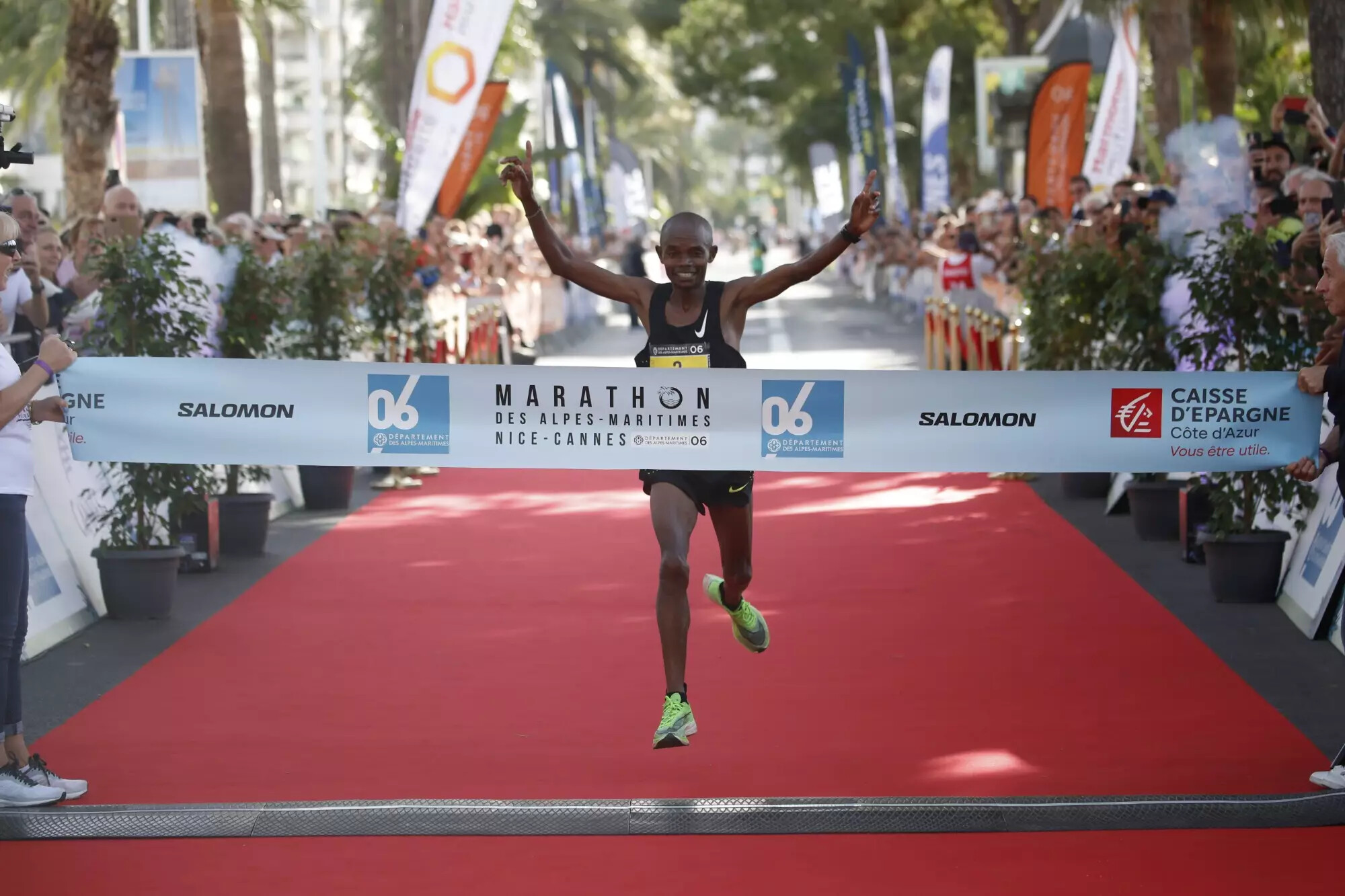
Kipyego holds a personal best of 2:03:55 set while winning the 2021 Generali Milano Marathon in Italy.
The 28-year-old is also the 2019 Abu Dhabi Marathon champion where he clocked 2:04:40. Also in that year, he won silver at the South American Marathon Championships in Buenos Aires, Argentina, clocking 2:05:18.
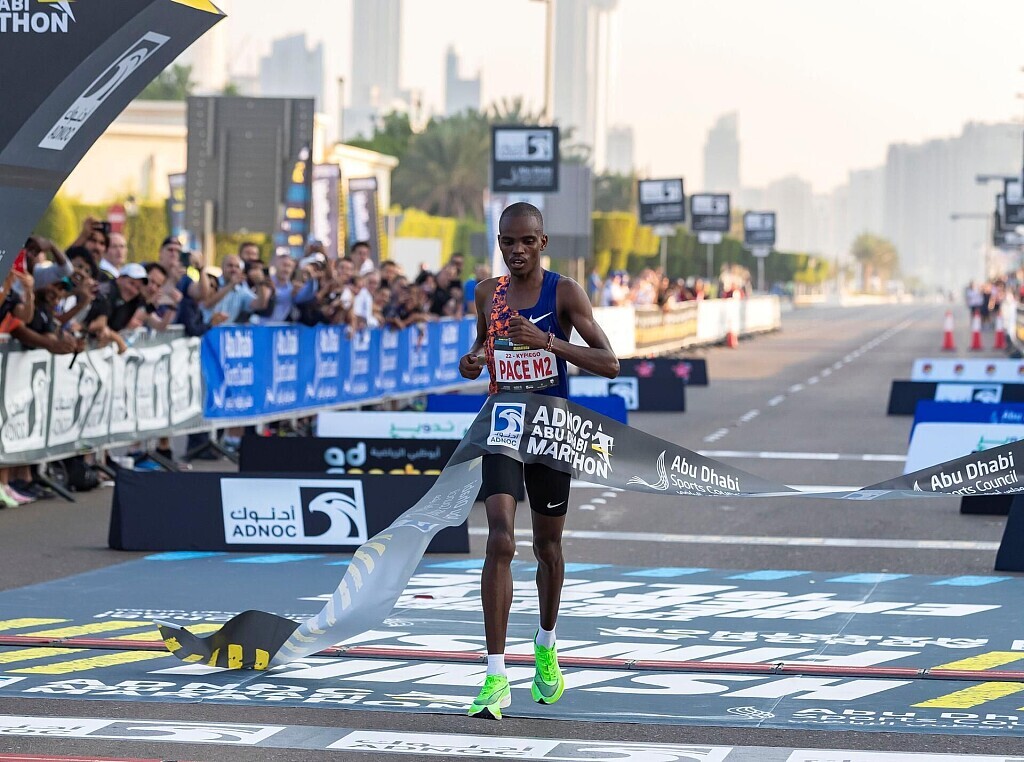
Langat holds a personal best of 2:07:11 set at the Eindhoven Marathon in the Netherlands in 2019, where he placed third.
In 2016, he clocked 2:10:49 to finish second at the Daegu Marathon in South Korea. The 30-year-old is also a bronze medallist at the Adidas Stockholm Marathon in Sweden clocking 2:12:39.
Joining the fray is Bernard Kimani, a bronze medalist at the 2020 Loop Den Haag Half Marathon.
The Ethiopian duo of Mumbai Marathon champion Haymanot Alew and 2022 Rome Marathon champion Fikre Bekele will prove a tough test for the Kenyans.
Also in the lineup is Taiyuan Marathon bronze medalist Hicham Laqouahi of Morocco.
(04/24/2024) ⚡AMPby Teddy Mulei
Rock n Roll Madrid Marathon
Tradition and much Rock ‘n’ Roll is what awaits you if you decide to run the 42K: vibrant, special and incredible journey that along which the flagship race of the capital of Spain. One of the top half marathons in Europe, Rock ‘n’ Roll Madrid EDP 1/2 Marathon does not disappoint. You will be cheered on by thousands of locals...
more...The billions Michael Johnson has received ahead of launching his track league in 2025
Michael Johnson has received a financial boost of billions as he seeks to launch his track league next year, with more details concerning the same to be revealed in June.
American sprint legend Michael Johnson has received massive backing as he looks to launch a track league next year with more details concerning the same scheduled for June.
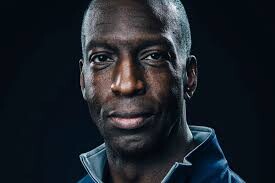
As per the Sports Business Journal, Johnson has so far secured more than Ksh 4 billion (about $30 million) from investors and strategic partners who plan to support his initiative for the track league.
Expressing his elation on his X (Twitter) handle, Johnson said: “Working to change the game for athletes and fans! League details coming this June.”
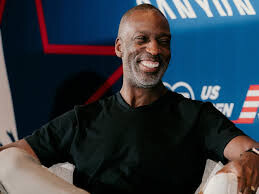
arlier this year, the four-time Olympic champion announced his partnership with Winners Alliance, the for-profit arm of the Professional Tennis Players Association. The Alliance was the lead investor and will be the league's operating partner.
During the partnership announcement, the American announced that they have a plan to launch a track series in 2025 aimed at promoting the sport meeting the needs of all track and field athletes, and bringing back the spark.
The league is set to include a series of events from April to September and will have a limited number of athletes and offer very lucrative prize money. It will also aim to renew rivalries between them while catering to fan interests.
As preparations ramp up, the league has also hired Doubleday & Cartwright, a creative studio that specializes in sports, music, art, and culture. The agency has a proven track record, having worked with the world’s leading brands including Apple and Nike among others.
Johnson's league has also signed Two Circles and SRK Strategies, a data-driven sports marketing agency. Two Circles has worked with World Athletics and the International Olympic Committee. The firm will advise the league on how to generate new fans and motivate the existing ones in support of the league.
(04/24/2024) ⚡AMPby Abigael Wuafula
Still running strong: Michigan woman, 73, ready for Indy Mini, her 109th half-marathon
At 73 years young, Adele Pitt is no stranger to darting through the finish line.
She's gearing up to run her 109th half-marathon in the OneAmerica 500 Festival Mini-Marathon on Saturday, May 4.
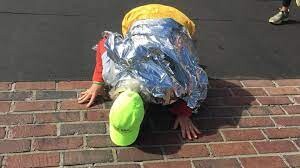
"I've run all 50 states and D.C, five continents and a couple islands," she proudly listed.
But the 13.1-mile trek that starts in the heart of downtown Indianapolis is by far her favorite.
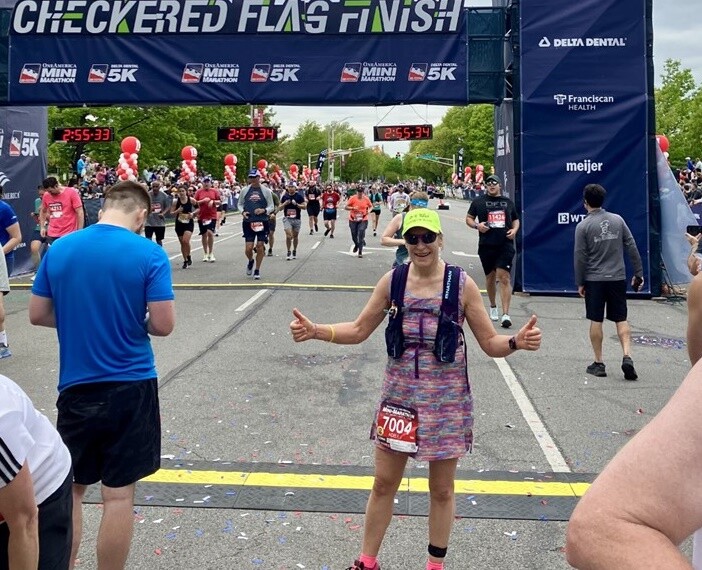
"How many people get to run on the Indy 500 track? It's awesome!" Pitt said.
In fact, she loves the "Indy Mini" so much that she's made the trip from her home in Benton Harbor, Michigan, to run almost every year since 2004, only skipping 2018, after she was diagnosed with colon cancer. She skipped that year as she started treatment, but refused to stay down for long.
The diagnosis may have slowed her stride, but never stopped her in her tracks..
She was back the next year, not at full strength, but fully confident she'd "run the cancer away," she said.
"I had a good race that year," she said, looking at a picture from 2019. Pitt loves to look back at race day photos and is now compiling them into a scrapbook.
Now in remission, "Back and Better" seems to be one of her mottos. She's ready to lace up her running shoes, and her running dress (yes, it's a thing, she said) – as she does every year.
"I usually put on a fake tattoo and my mantra is, 'I can, I will, I am and then one foot, one foot, one foot,'" she said. "And that applies to more than just running. It's just one foot at a time, one step at a time."
Still running strong, Adele plans to tackle many more steps, miles and milestones, taking it all in full stride.
"When I got to my 100th race, there were people that were like, 'Well, are you done now?'" she said, gladly telling them, "No, we are never done! We just keep on going."
(04/24/2024) ⚡AMPOneAmerica 500 Festival Mini-Marathon
The mission of the 500 Festival is to produce life-enriching events and programs while celebrating the spirit and legacy of the Indianapolis 500 and fostering positive impact on the city of Indianapolis and state of Indiana. As an organization providing multiple events and programs, many of which are free to attend and impact over 500,000 people annually, our mission to...
more...Aging without injury: how older runners are killing the game
Injuries are not fun, and neither is aging, but the two don’t always go hand in hand. Canadian physiotherapists argue that whether you’re fresh out of school or newly retired, age does not necessarily determine your running injury status. In fact, these physiotherapists have found older runners outperforming newcomers to the sport, and here’s why.
Staying in tune
Waldo Cheung, a physiotherapist and speaker at Québec City’s The Running Clinic, says as much as 80 per cent of injured runners can have their injuries attributed to training errors. He explains that since the advent of running watches, many new runners have mistakenly overdone it by following their watch’s training schedule rather than listening to their bodies. Older more experienced runners who may have run for many years, Cheung says, tend to stick to what they know, which usually isn’t technology. Instead, they deload (i.e., take a short, planned break from high intensities and volume) from time to time, allowing their bodies to recover between training builds.

Movement as medicine
An old stereotype observed by physiotherapists is that running into your old age can lead to knee osteoarthritis (the result of wear and tear and progressive loss of cartilage). In reality, the prevalence of knee osteoarthritis in recreational runners is three times less than in sedentary non-runners. Greg Cugnet, a physiotherapist at Kitsilano Physiotherapy Clinic in Vancouver, has found that older people, even those with knee osteoarthritis, improve their knees by running because they continue to build muscle. Younger runners who sign up for a race and take long breaks between training, Cugnet says, are at a much greater risk for knee injuries.
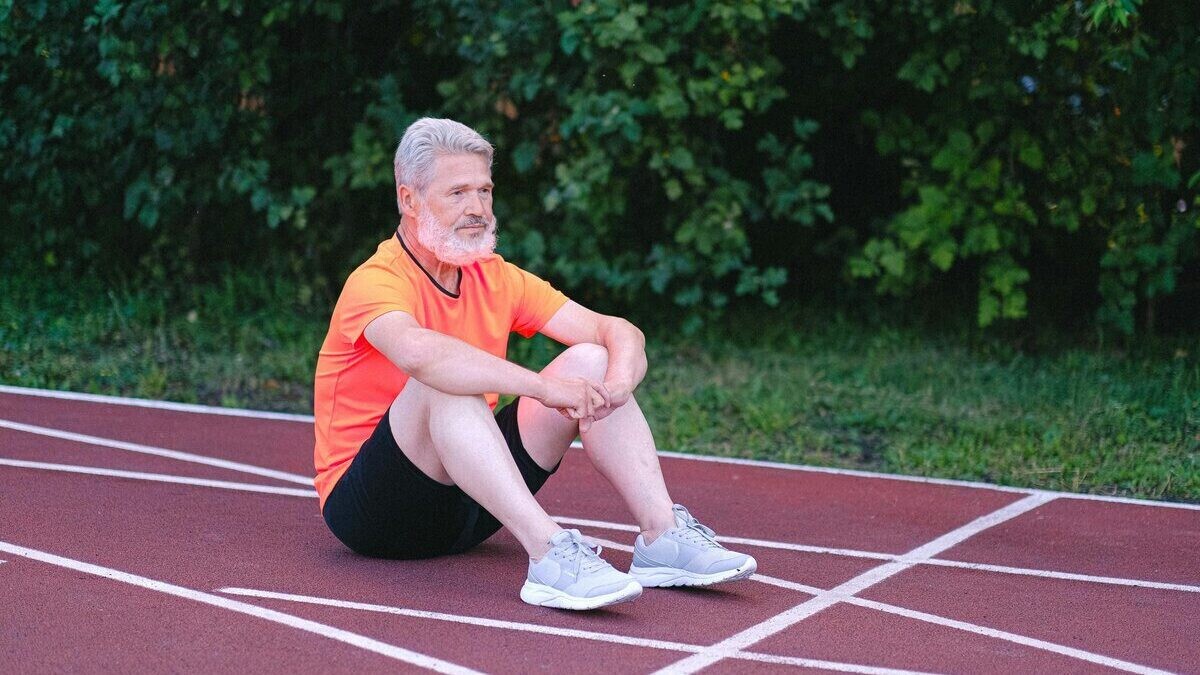
Reducing stress
Mechanical stress quantification, also known as load management, is the process athletes use to manage stress on their tissues. Cheung points to studies by The Running Clinic that have found that younger runners often push their bodies to the limit, putting a lot of stress on their tissues. With more years under their belt, older runners tend to prioritize slower and longer runs, as well as being happy and well-rested, making it easier for their bodies to adapt to training.
Our bodies are very capable of adapting to change and telling us what they can do. But when we do too much, too soon, that’s when injuries happen—regardless of age.
(04/24/2024) ⚡AMP
by Katrianna Desante
Ethiopian Gudaf Tsegay targets 10,000m world record at Prefontaine Classic
Ethiopian Gudaf Tsegay is aiming to break the 10,000m world record that was set by by Letesenbet Gidey in June 2021.
Ethiopian Gudaf Tsegay has officially thrown her hat into the ring for what promises to be an electrifying showdown at the upcoming Prefontaine Classic in Oregon, United States.
The reigning 10,000m world champion has set her sights on rewriting the record books by aiming to break Letesenbet Gidey's remarkable 10,000m world record of 29:01.03, set back in June 2021.
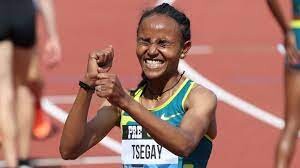
Tsegay boasts a personal best of 29:29.73 achieved during her triumphant run at last year's Ethiopian national championships.
Her stellar performances have solidified her reputation as a force to be reckoned with in long-distance running, culminating in a gold medal victory at the 2023 World Championships in Budapest.
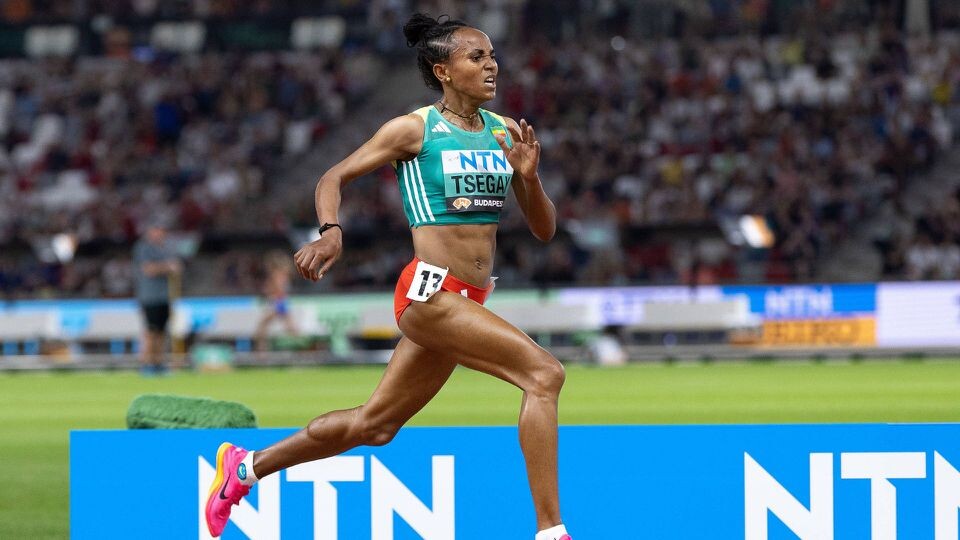
The road to success has not been without its challenges, as evidenced by Tsegay's silver medal finish in the 3000m final at the World Indoor Championships, where she narrowly missed out on the top spot.
However, undeterred by setbacks, Tsegay kicked off her outdoor season with a bang at the Xiamen Diamond League, coming tantalizingly close to breaking Faith Kipyegon's 1500m world record.
In a stunning display of her versatility, Tsegay concluded the 2023 outdoor season by smashing the 5000m world record at the Diamond League final, further cementing her status as one of the sport's brightest stars.
With the Paris Olympics on the horizon, Tsegay finds herself at a crossroads, contemplating which events to focus on for the prestigious competition.
"Which one? I don’t know. I will see with my coach…Maybe three or maybe two," she said as per Citius Mag.
The possibility of emulating Sifan Hassan's remarkable triple at the Tokyo Olympics looms large, with Tsegay considering the 1500m, 5000m, and 10,000m as potential battlegrounds for Olympic glory.
If Tsegay opts to pursue the triple challenge, she will undoubtedly be following in the footsteps of Hassan, who clinched gold in the 5000m and 10,000m events, alongside a bronze in the 1500m.
The prospect of such a feat adds an extra layer of intrigue to Tsegay's Olympic journey, as she seeks to etch her name in the annals of athletics history.
With the Prefontaine Classic looming large on the horizon, all eyes will be on Tsegay as she takes her first steps towards rewriting the record books and etching her name in sporting immortality.
(04/24/2024) ⚡AMPby Festus Chuma
Prefontaine Classic
The Pre Classic, part of the Diamond League series of international meets featuring Olympic-level athletes, is scheduled to be held at the new Hayward Field in Eugene. The Prefontaine Classicis the longest-running outdoor invitational track & field meet in America and is part of the elite Wanda Diamond League of meets held worldwide annually. The Pre Classic’s results score has...
more...How to shave time off your marathon PB while running less
Sooke, B.C’s Kate Guy says that at 45, she is only getting faster in the marathon, and is close to breaking the three-hour mark, despite running less volume than she used to in her training.
The full-time consultant has been running for more than 20 years, and last week, ran her fastest Boston Marathon yet (3:10). It wasn’t until she started prioritizing quality work in every single run that she started seeing her marathon times drop significantly. She ran a three-hour marathon last year and now has her sights set on sub-three this summer.
Guy says that her run training has changed a lot in the two decades she’s been running, and the biggest difference is that she has cut out almost all “slow” running. She runs three or four times per week and ensures that these runs are packed with quality.

“In my experience, focusing on running at marathon pace is more helpful than long, slow, running” Guy says, when talking about where she prioritizes time on her feet. “If you only train your body to run slow, then you cannot expect to perform at a faster pace miraculously on race day.”
As it turns out, Guy finds value in keeping some cycling in her weekly training. She credits this cross-training approach to her recent speed boost and history of staying injury-free (Guy has not had any major running injuries in her 20 years in the sport).

“On the weekend, I do a long bike (two to three hours) on Saturday, followed by my long run on a Sunday,” she explains. “This is great, because my legs aren’t feeling fresh on Sunday, and it promotes running on tired legs, like you would at the middle to end of a marathon.”
Without easy runs in her week, Guy prioritizes three types of run sessions in her training: speed work, hill repeats, and long runs with tempo running sandwiched in. For the latter, there are three main long run workouts she follows:
Over-unders
5 km easy warmup
3x (1 km at 15 seconds faster than goal marathon pace, 1 km at 15 seconds slower than goal marathon pace)
easy cooldown
Long run at race pace
20 to 30 minutes easy warmup
2 hours at goal marathon pace
15 minutes easy cooldown
Progression long run:
Running for 2.5 hours: start easy and every 30 minutes, increase pace by 15 to 20 seconds per kilometer
High-volume running will always be the training method of choice for many top runners and coaches, but Guy proves that a different approach can produce the same results for amateur runners looking to maximize their available training time. For injury-prone runners, dialing back on volume but increasing quality and keeping in lots of cross-training may be the key to consistent improvement across long distances.
“This training style is definitely underrated, but my results demonstrate that you can get faster as you age, with less stress on your body,” Guy says.
(04/23/2024) ⚡AMPby Claire Haines
How mismanagement cost Kenya's race walkers spot at Paris Olympics
Kenya's race walking team faced unexpected setbacks en route to a crucial Olympic qualifier in Antalya.
Kenya's aspirations for a strong showing at the Paris Olympic Games suffered a severe blow due to a logistical nightmare that prevented the national race walking team from competing at the World Athletics Race Walking Team Championships in Antalya, Turkey.
The team, which included notable athletes like 2022 world bronze medalist Samuel Gathimba and African Games champion Emily Ngii, embarked on their journey from Nairobi to Antalya, anticipating to secure their spots at the upcoming Olympics.

However, a critical error in their travel arrangements led to unexpected detours and delays that ultimately dashed their hopes.
The ordeal began when the team, under the guidance of Athletics Kenya, boarded a Turkish Airlines flight at midnight on Thursday, destined for Istanbul.
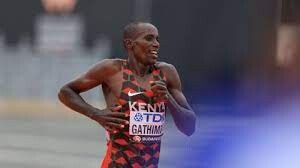
After a seven-hour and twenty-minute flight, they were supposed to catch another flight directly to Antalya. Instead, they were rerouted to Ercan International Airport in Northern Cyprus, adding unnecessary travel and complications.
Upon arriving in Cyprus, the situation worsened. The team was detained at Ercan International Airport due to the lack of necessary transit visas.
As a result, they were forced to spend two nights sleeping at the airport, a distressing experience that left the athletes disheartened and exhausted.
“It’s quite disappointing that we had to go all the way only to be detained in Cyprus where we slept at the airport for two days,” said a team member in a statement to Daily Nation.
The confusion stemmed from the Ministry's oversight in flight arrangements, which inexplicably included a layover in Cyprus instead of a more straightforward route from Istanbul to Antalya.
“The ministry was in charge of the flight arrangement and we don’t know why they rerouted us to Cyprus when it was easy to connect from Istanbul to Antalya,” the source added.
While the Kenyan team struggled with bureaucratic red tape and logistical errors, the championships proceeded without them.
The event saw stellar performances from athletes like double world champion Kimberly Garcia of Peru and Sweden's Perseus Karlstrom, who claimed the 20km women and men's titles respectively.
Meanwhile, Spain and the People's Republic of China took home the men’s and women’s team titles, with Italy winning the inaugural Marathon Race Walk Mixed Relay gold.
This misadventure not only cost the athletes a chance to compete on a global stage but also the opportunity to qualify for the Paris Olympics.
Athletics Kenya is reported to have promised to prepare a formal statement addressing the issue and to reassess their travel coordination strategies in light of the repercussions of this incident.
(04/23/2024) ⚡AMPby Festus Chuma
Paris 2024 Olympic Games
For this historic event, the City of Light is thinking big! Visitors will be able to watch events at top sporting venues in Paris and the Paris region, as well as at emblematic monuments in the capital visited by several millions of tourists each year. The promise of exceptional moments to experience in an exceptional setting! A great way to...
more...Kenya's Celestine Chepchirchir issued with three-year ban for doping offence
Kenyan runner Celestine Chepchirchir has been banned for three years after testing positive for a prohibited substance, forfeiting all recent titles and awards
Kenyan road runner Celestine Chepchirchir has been banned for three years from competing after being found to have violated World Athletics anti-doping rules.
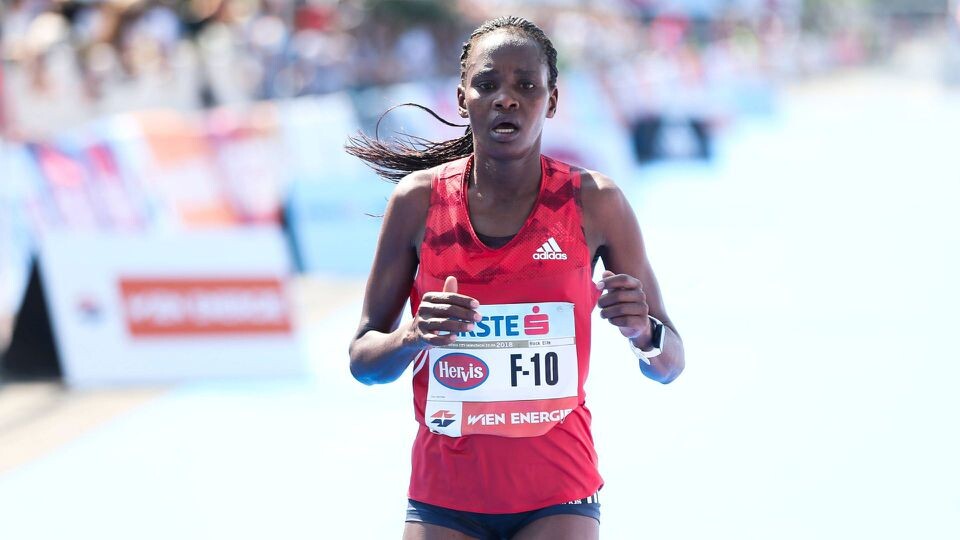
The 28-year-old athlete provided a urine sample out-of-competition in Kapsabet on February 9, 2024 which tested positive for exogenous testosterone and its metabolites.
According to the official AIU statement, the laboratory in Lausanne, Switzerland, identified the presence of testosterone and its metabolites—Androsterone, Etiocholanolone, 5α-androstane-3α,17 diol, and 5β-androstane-3α,17 diol—as being of exogenous origin.
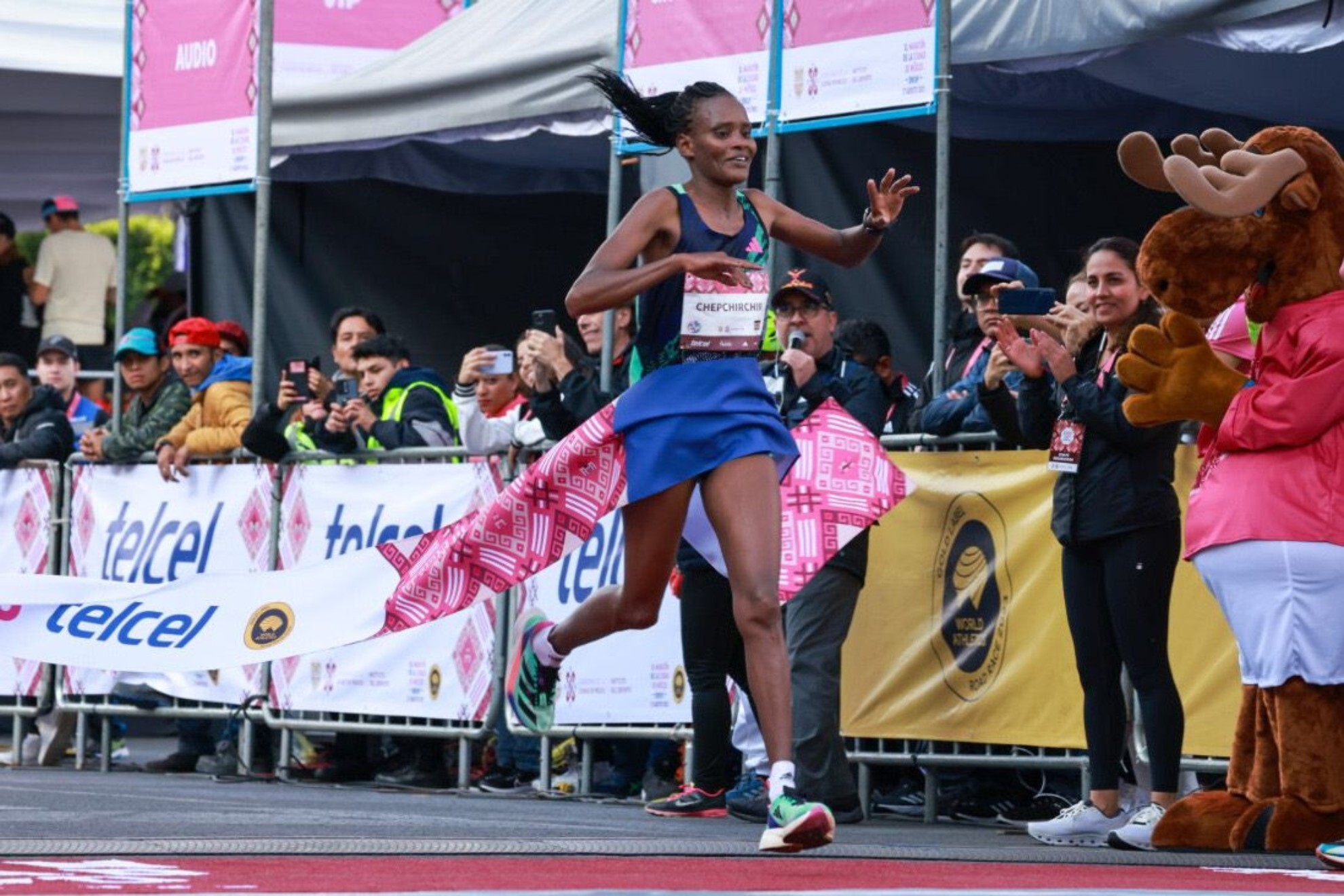
"Ms. Celestine Chepchirchir did not have a Therapeutic Use Exemption that would justify the presence of these substances," the AIU confirmed.
The ruling added that there was no departure from the International Standard for Testing and Investigations or the International Standard for Laboratories that could explain the adverse finding.
The athlete faced a mandatory four-year period of ineligibility for such a violation under the World Anti-Doping Agency (WADA) guidelines.
However, Chepchirchir's prompt admission of the violations and her acceptance of the consequences enabled her to benefit from a reduced three-year ban.
"The athlete did not reply within the initial deadline but subsequently signed an Admission of Anti-Doping Rule Violations and Acceptance of Consequences Form," the AIU reported.
Celestine Chepchirchir's ban will commence from March 26, 2024, the date on which her provisional suspension was first imposed.
Moreover, all her results post-February 9, 2024, will be disqualified, with all consequent titles, awards, medals, points, prizes, and appearance money forfeited.
Rights of appeal against the decision are available to WADA and the Anti-Doping Agency of Kenya (ADAK), which could potentially take the matter to the Court of Arbitration for Sport in Lausanne, Switzerland.
The AIU has confirmed that this decision will be publicly reported on their website as part of their commitment to transparency and fairness in the handling of doping cases in athletics.
This case marks another in a series of doping incidents involving Kenyan athletes a troubling pattern that has drawn global attention to the nation's sports programs.
(04/23/2024) ⚡AMPby Festus Chuma
Gotytom Gebreslase added to Hamburg field
Gotytom Gebreslase, the World Champion from Eugene 2022, has been added to the strong elite field of Sunday’s Haspa Marathon Hamburg.
The Ethiopian was runner-up at last year’s global championships in Budapest and has a personal best of 2:18:11. With this time she is the fastest woman ever entered into the Haspa Marathon Hamburg.

In the men’s race Bernard Koech returns to Hamburg as the defending champion. The Kenyan broke the course record last year with 2:04:09. Organisers expect to register a total of more than 35,000 runners for the 38th edition of the Haspa Marathon Hamburg. Over 14,000 of them are marathon runners.
“We have made a really strong development in recent years. In the past two editions there were three course records and world-class times. Now we have assembled another great field and it is quite possible that the course records come under threat once again,“ said the chief organiser of Germany’s biggest spring marathon, Frank Thaleiser.
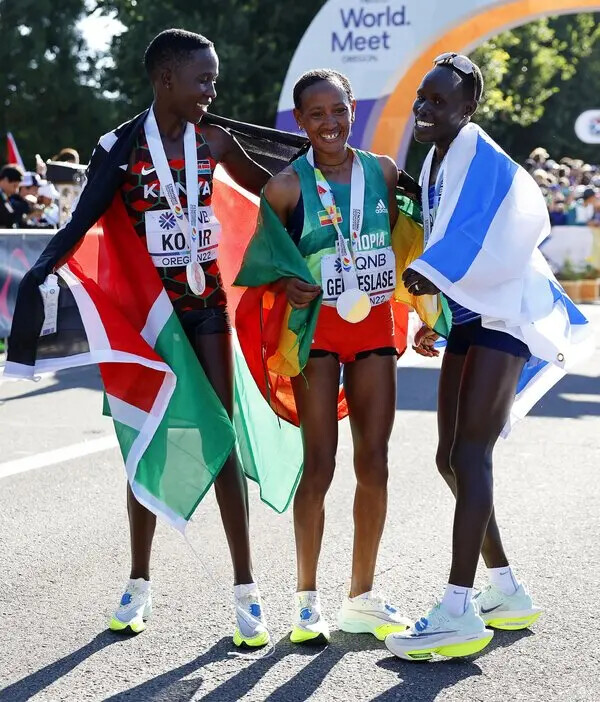
Gotytom Gebreslase, who sensationally won her marathon debut in Berlin in 2021, hopes to still qualify for the Olympic Games. However because of the extraordinary strong competition for the three places she would probably have to smash the course record of 2:17:23 set by fellow-Ethiopian Yalemzerf Yehualaw two years ago. Nine Ethiopian women have run sub 2:17:00 during the qualifying period, which was supposed to end on 30th April but has now been extended by World Athletics to 5th May.
Getaneh Molla heads an impressive men’s start list on which seven athletes have personal bests faster than 2:05:00. The Ethiopian ran his PB of 2:03:34 when winning an impressive marathon debut in Dubai in 2019. However he has not run as fast again since then. In contrast course record holder Bernard Koech has already run sub 2:05 on three occasions. While fellow Kenyan Samwel Mailu had to cancel his start because of an injury, a debutant could be in for a surprise: Former Kenyan Abraham Cheroben, who competes for Bahrain, has a world-class half marathon PB of 58:40.
(04/23/2024) ⚡AMPby AIMS
Haspa Marathon Hamburg
The HASPA MARATHON HAMBURG is Germany’s biggest spring marathon and since 1986 the first one to paint the blue line on the roads. Hamburcourse record is fast (2:05:30), the metropolitan city (1.8 million residents) lets the euphoric atmosphere spill over and carry you to the finish. Make this experience first hand and follow the Blue Line....
more...Ethiopian Olympic steeplechase finalist banned five years for EPO
Zerfe Wondemagegn, 21, will miss the next two Olympic Games due to a positive EPO test.
Zerfe Wondemagegn, an Ethiopian runner who reached the women’s 3,000m steeplechase final at the Tokyo Olympics and narrowly missed the world championship podium last year in Budapest, has been banned for five years by the Athletics Integrity Unit (AIU) after testing positive for two banned substances.
The 21-year-old was provisionally suspended by the AIU last November after traces of testosterone and erythropoietin (EPO) were found in an out-of-competition sample. According to the AIU, it received emailed testimony from an Ethiopian doctor stating that Wondemagegn had been given EPO as medicine to treat severe anemia and a kidney infection, but it “remained satisfied” she had broken anti-doping rules. The organization added that it had received a signed admission from the athlete last week.
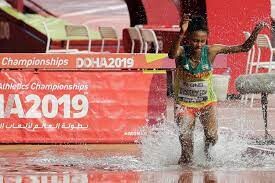
Wondemagegn finished eighth at the Tokyo Olympics and fourth at the 2023 World Athletics Championships in Budapest. Two of the three samples in her case were taken while she was in Hungary (at worlds), and her result will be disqualified. Her fourth-place finish in Budapest earned her USD $16,000 in prize money.
Her suspension will leave her out of the 2024 Paris Olympics and run through October 2028, meaning she will also miss the 2028 Los Angeles Olympics.
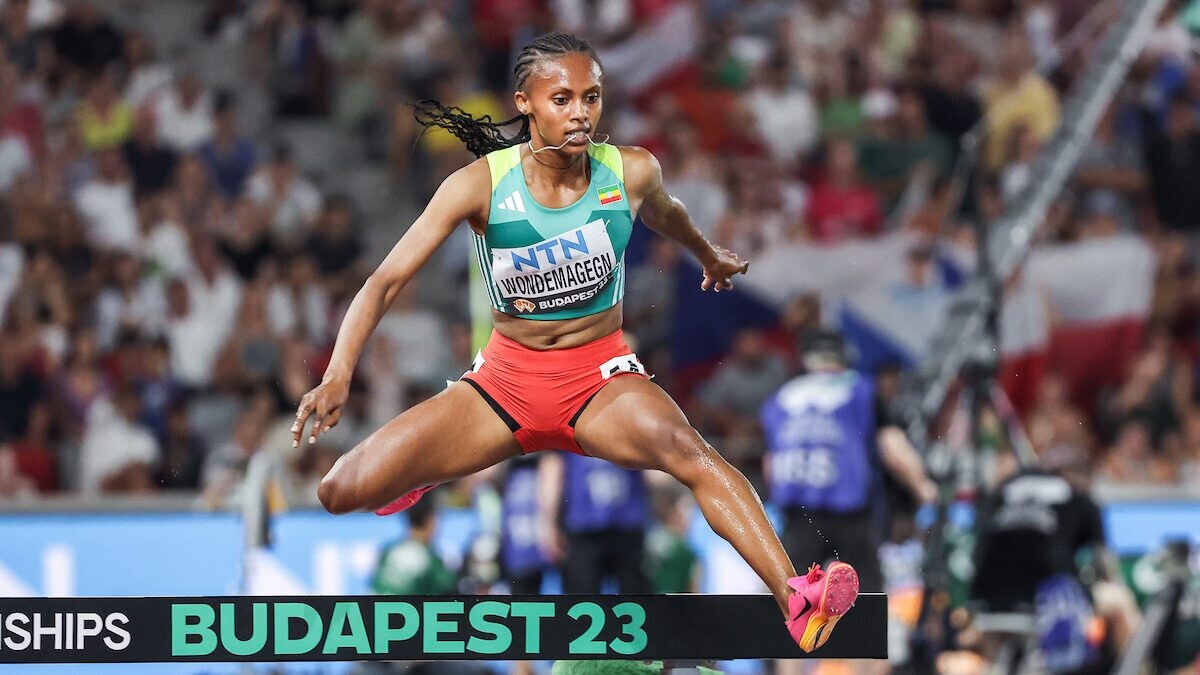
Wondemagegn’s case is the latest in a series of doping cases in the women’s steeplechase event. The 2022 world champion, Norah Jeruto of Kazakhstan (previously of Kenya), is facing a doping hearing in June, five weeks before the Paris Olympics. World Athletics is appealing against an earlier decision to clear the runner. Jeruto has argued that ulcers and COVID-19 explain her irregular blood test results.
(04/22/2024) ⚡AMPKenyan Timothy Kipchumba triumphs at the Padova Marathon
The champion swept away the old record of the event that had stood since 2011, imposing himself with a time of 2 hours, 8 minutes and 22 seconds. Sixth place for Alessandro Giacobazzi from Modena. Record also in the women's half thanks to the Ethiopian Morine Michira Gesare.
The Kenyan Timothy Kipchumba won the Paduva marathon with the record time of 2 hours 08'22", a chronometric result which breaks the previous record of 2 hours 09'02" which dates back to 2011, set by the Ethiopian Tadese. Record also in the half marathon with the Ethiopian Morine Michira Gesare, who stopped the clock after an hour 08'30", improving the hour 09'06" of the Ethiopian Rahma achieved in 2021. But the technical aspect is combined with popular: between the almost 5 thousand of the competitive events representing 61 nations and the 20 thousand of the city races, there were at least 25 thousand participants in the Padova Marathon 2024.
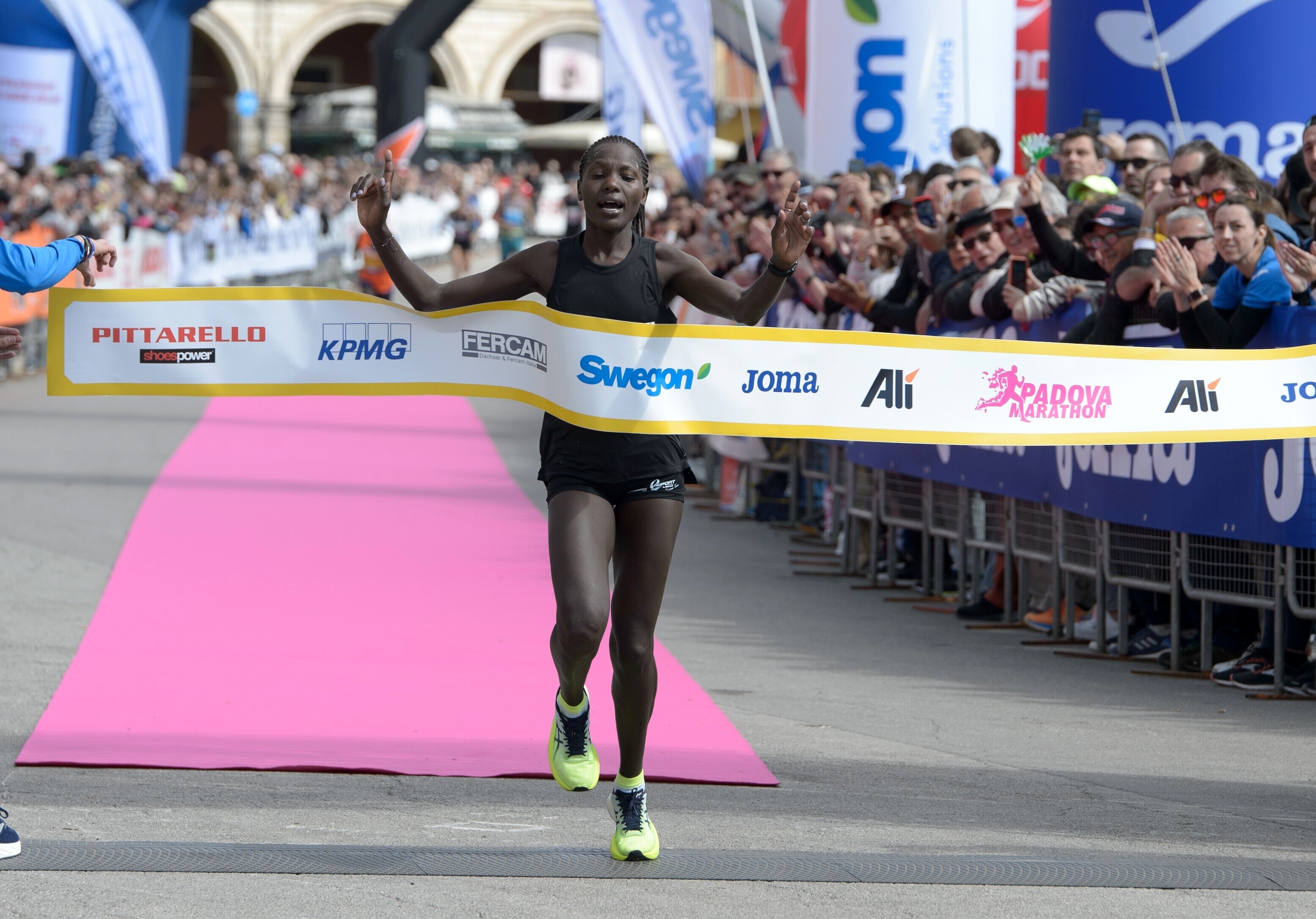
The men's race
In the men's marathon up to the nineteenth kilometre, a group of seven athletes led the race together: Kipchumba, Kipchirchir, Assen, Kalale, Kibet, Mogos and Ademe, with the latter breaking away several times to rejoin after a few metres, losing ground , however, from then on. Moving on to half time, near the splendid Villa Cavalli in Teolo, around the hour 4'06", a new selection was recorded between the thirty-first and thirty-second kilometre, when the Kenyans Kipchumba and Kibet and the Eritrean remained in command Mogos, "escorted" by bike by his friend Eyob Faniel. The first two pulled away around the thirty-fifth kilometre, with a new break from the winner around the Bassanello bridge. But it is significant to note that Kibet, who had started the race at "hares" altitude, also crossed the finish line under the time of the previous race record in 2 hours 08'47", with Mogos third in 2 hours 09'32" . Also noteworthy is the sixth place of Alessandro Giacobazzi (Aeronautics) from Modena: the 2022 overall Italian champion finished in 2 hours 17'56”.
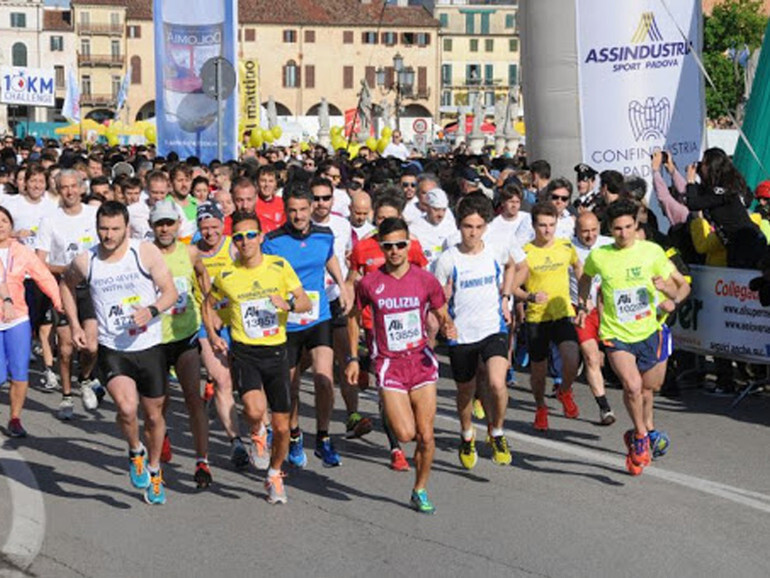
The women's race
In the women's field, success for the Kenyan Lenah Jerotich, who after the bronze medal at the 2023 Turin marathon prevailed in Padua, signing her new personal best in 2 hours 31'47”. She remained in the group until the thirtieth kilometer with Mekonnen, Jepkemei and Rholex, and from the thirty-fifth only with Mekonnen and Jepkemei, she made a strong change of pace before the 40th by taking off alone.
(04/22/2024) ⚡AMP
Padova Marathon
The Padova Marathon is more than just a race—it’s a celebration of sport, history, and community. With 5,000 competitive athletes and 20,000 participants in the Stracittadine fun runs, it stands as a premier event on the international running calendar. Now in its 24th edition (2025), the marathon offers a breathtaking course through Padua’s rich landscape. Runners traverse the volcanic hills,...
more...Moroccan winners at Enschede Marathon Taoufik Allam was victorious in the men's race and Oumaima Saoud won in the women's race
With a record number of participants and several great winners, the Enschede Marathon was a great success on Sunday, April 21. “We have implemented various changes in recent years,” says Sandra Melief, director of Enschede Marathon. “And that is now paying off. What a great day it was last Sunday! We only saw excited and happy faces.”
Full and half marathon winnersThe participants of the Demcon Marathon and Mazars Half Marathon started at 10 a.m. under almost ideal conditions, although the wind seemed slightly stronger than expected. The men turned it into a real, but tactical, race in the 2nd part of the Demcon Whole Marathon . It was the Moroccan Taoufik Allam who, like a predator, eliminated his opponents one by one and took the win in 2:08:58. Kenyan Noah Kipkemboi finished 2nd at 8 seconds .
Among the women, Oumaima Saoud recorded the fastest time with 2:27:16.
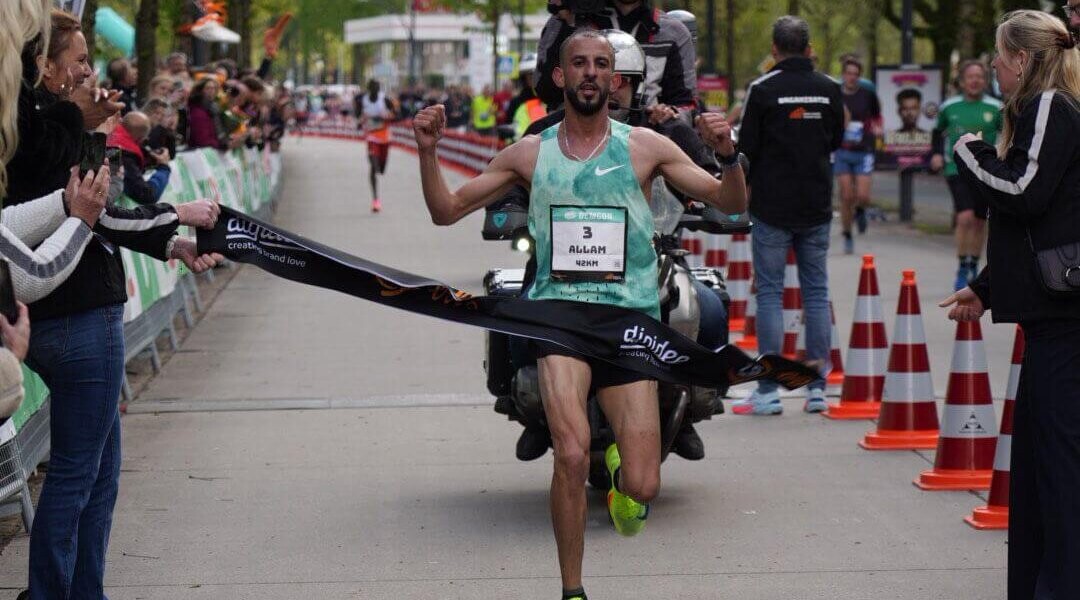
The fastest Dutchman in the marathon was Gert-Jan Wassink in 2:23:33. Among the women, Elizeba Cherono Franken was the fastest, running 2:32:07 in her comeback marathon.
Enschede's Martijn Oonk was the big winner at the Mazars Half Marathon. He ran the 21.1 kilometers in a time of 1:08:28. The fastest woman over this distance was the German Joleen Gedwart in 1:14:28.
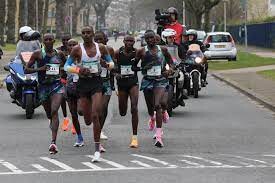
International appearance Just like last year, the start and finish of all distances took place on the Boulevard, with Van Heekplein set up as a pleasant meeting place for participants, supporters and visitors.
The total number of participants at the Demcon Marathon showed that the entire marathon remains popular in Enschede, says Melief. “This year there were almost 2,000 participants at the start of the longest distance. That is more than ever.” The participants no longer come exclusively from the region, she continues. “We see that Enschede Marathon now has an international appeal, which applies to all distances. No fewer than 35 different nationalities were present this year. It was striking that among the 15,000 participants, 1,470 participants came from Germany.”
Twee van EnschedeA special mention deserves the 'exercise event' the Twee van Enschede, which was organized the day before, on Saturday evening. Because although the Enschede Marathon is a top event in terms of sport, the organization also believes it is important to involve people who are at a distance from exercise. “That is why we organized the Twee van Enschede for the second time together with SPortal and the Municipality of Enschede. This is a cheerful and casual exercise event where fun is central. There is no timekeeping: everyone could participate at his or her own pace.” The route of two English Miles (3.2 km) led straight through the city center of Enschede with start and finish on the Oude Markt. “It was a cheerful party with only happy and enthusiastic participants. We are also proud of that, because that is also the Enschede Marathon!”
(04/22/2024) ⚡AMPEnschede Marathon
Experience the oldest marathon in Western Europe! We write about August 1946. The European Athletics Championships were held in Olso and the I.A.A.F. conference had taken place. During that conference, an agreement was made to hold an athletics competition between the Netherlands and Czechoslovakia in Enschede in July 1947. Saturday July 12, 1947 was the big day: 51 participants took...
more...The 41st Vienna City Marathon was won by ethiopian Chala Regasa
The 41st Vienna City Marathon has its winner. The Ethiopian Chala Regasa won on Sunday in 2:06:35 hours. The best Austrian was Mario Bauernfeind, who crossed the finish line after 2:14:19 hours. Nazret Weldu triumphed in the women's race in 2:24:08.
Regasa secured the first Ethiopian VCM victory since 2015, when Sisay Lemma won in 2:07:31. Regasa himself had only competed in one marathon before that, finishing fifth in Rotterdam in April 2023 in 2:06:11. However, he had already been to Vienna in 2019 when he paced Eliud Kipchoge in his 1:59 "lab race" in 2019, including on parts of the VCM course. "I'm not here to hold back," Regasa said on Thursday - and put his plan into action.
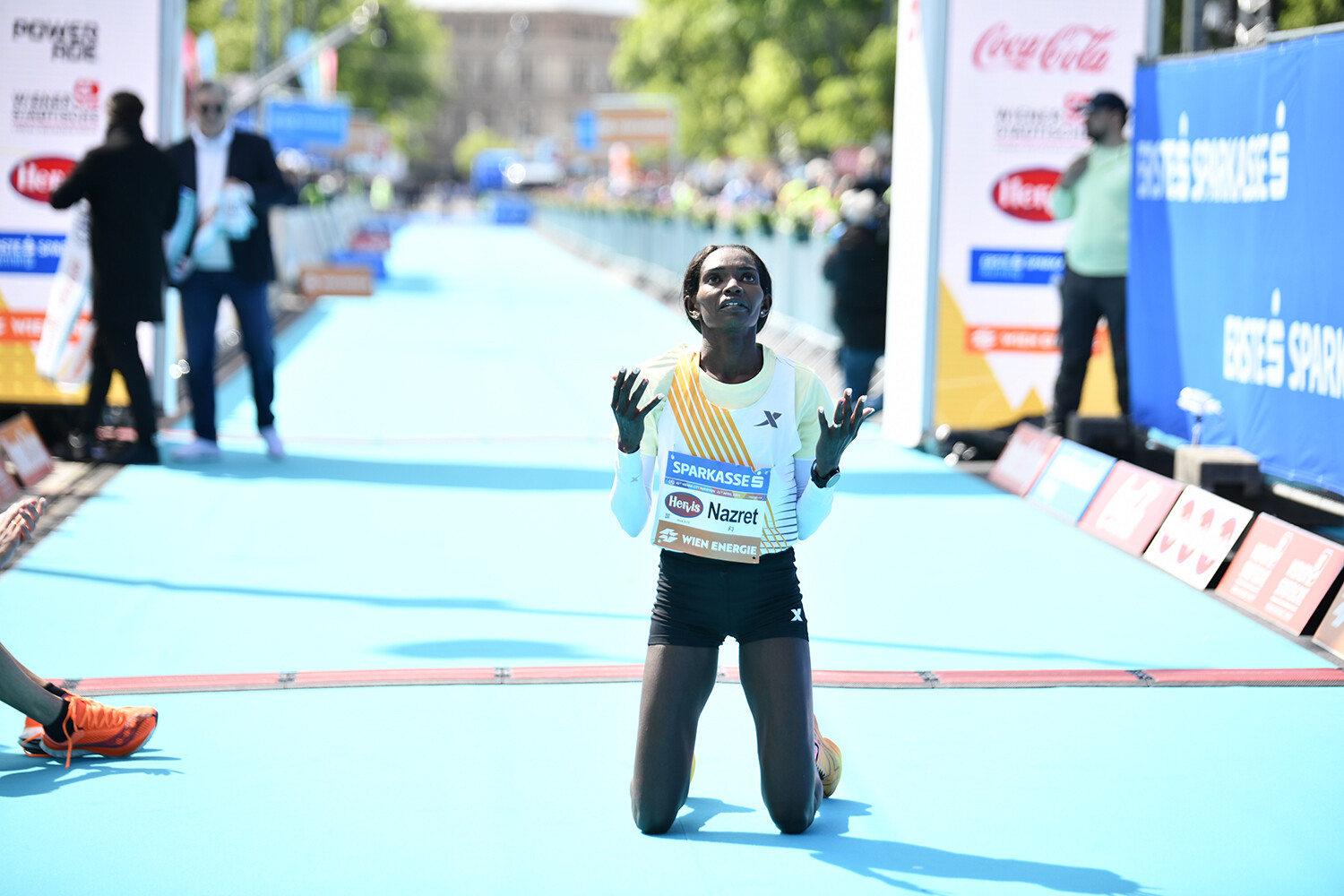
Bauernfeind beats HerzogIn the end, he had a huge lead of more than four minutes over the second-placed Kenyan Leonard Barsoton. Bauernfeind clearly won the duel with ÖLV record holder Peter Herzog for the best ÖLV athlete and was also ranked among the European leaders in this race. Herzog was a good minute behind his compatriot. "This is a dream come true for me," said a delighted Bauernfeind.
Mayer defies her periodJulia Mayer was unable to match her ÖLV record, but her performance was almost as impressive as the magnificent 2:26:43 in Valencia. "Unfortunately, I'm going through a difficult phase at the moment, I'm on my period," Mayer reported at the finish. "But I've already been able to prepare myself mentally for it. But it was a really good performance today and I'm proud of it." She finished tenth and second best European in 2:31:25. "That's also a respectable result."
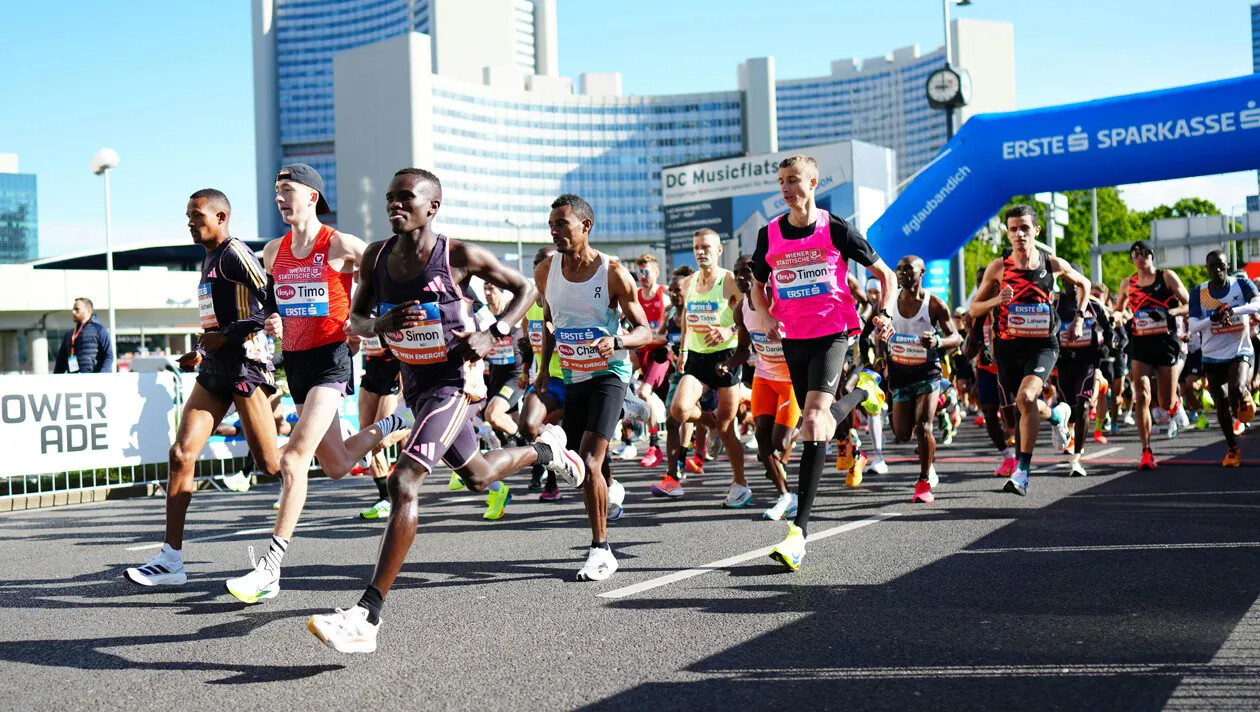
Austrian victoryThere was an Austrian victory in the half marathon. The 19-year-old Timo Hinterndorfer from Vienna ran with the marathon leaders and completed the distance in a new personal best time of 1:03:05 hours, just two seconds slower than the VCM leaders. Just two weeks ago, Hinterndorfer had won the Linz half marathon in 1:03:25. Timon Theuer in 1:05:45 and Thomas Messner in 1:06:29 completed an Austrian triple victory.
The race took place in better conditions than had been feared from the forecast. Even at the start area, the 35,000 athletes, including the side events, were greeted by sunshine, temperatures were in the low single digits and the wind was not as disruptive as expected.
(04/22/2024) ⚡AMP
by Nachrichten
Vienna City Marathon
More than 41,000 runners from over 110 nations take part in the Vienna City Marathon, cheered on by hundreds of thousands of spectators. From the start at UN City to the magnificent finish on the Heldenplatz, the excitement will never miss a beat. In recent years the Vienna City Marathon has succeeded in creating a unique position as a marathon...
more...Alexander Munyao Wins Men’s Race at the 2024 London Marathon
The 27-year-old broke away from Kenenisa Bekele, who finished second in a new masters world record.
For the second time in the past week, the men’s winner at a World Marathon Majors crossed the line in survival mode. Six days ago, it was Sisay Lemma holding on to win Boston. This morning, it was Alexander Munyao in London. The Kenyan survived a strong move in the 18th mile to win in 2:04:01.
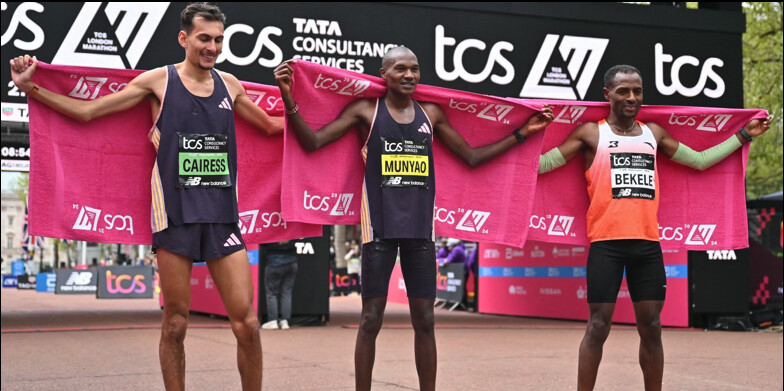
Kenenisa Bekele, arguably the greatest male distance runner in history, placed second in 2:04:15, four seconds faster than the masters world record he set in Valencia last December. The 41-year-old Ethiopian superstar was, surprisingly, largely responsible for the 4:35 18th mile that broke up what had been a nine-man pack.
By 35K (21.7 miles), the race was down to Munyao and Bekele. The two shared the lead more because of doing the best job of recovering after the earlier push than because they were speeding up. Munyao then got half a step on Bekele early in the 22nd mile, and broke him for good over the next mile.
Once they were dropped by Munyao and Bekele, the other earlier members of the lead pack that hit halfway in 61:29 suffered significantly. Tamirat Tola of Ethiopia, the 2022 world champion who broke the New York City course record last November, had looked eager to take over after the final pacer exited the course a little before 30K. Instead, Tola lost more than 20 seconds to the leaders before 35K, and dropped out before 40K.
The severe disintegration of the lead pack led to third and fourth place going to British runners who had been paced more moderately early on. Emile Cairess finished third in a personal best of 2:06:16 after being in 13th place at halfway (62:50). Mahamed Mahamed placed fourth in 2:07:05, also a personal best. Both men are now likely to be named to the British team for the Olympic Marathon, which will be held on August 10.
Munyao and Bekele were also running in part to secure spots on their Olympic teams. Munyao’s win, combined with his 2:03:13 PR and runner-up finish in Valencia in December, makes a good case. Bekele’s bid is even stronger. With Tola’s poor showing and Bekele’s second strong marathon in a row, will Ethiopian selectors recognize that a three-time Olympic and 19-time world champion deserves to toe the line in Paris?
Brian Shrader, the lone U.S. elite entrant, placed tenth in 2:10:50.
(04/21/2024) ⚡AMPTCS London Marathon
The London Marathon was first run on March 29, 1981 and has been held in the spring of every year since 2010. It is sponsored by Virgin Money and was founded by the former Olympic champion and journalist Chris Brasher and Welsh athlete John Disley. It is organized by Hugh Brasher (son of Chris) as Race Director and Nick Bitel...
more...Canadian Boston Marathon age-grouper shares tips for running as we age
Sandy Rutledge began running in his early 60s; he has run the Boston Marathon four times. The Nova Scotian clocked an impressive 3:31:38 at Monday’s 128th running of the famous race, earning him second place for his division and top Canadian in that age bracket.
“It was a slower than normal Boston, with the heat,” Rutledge told Canadian Running after his race. “I backed it off and went a little slower than last year, because I didn’t want to push it and not finish.”

After a decade of running, Rutledge knows what he needs to do to stay competitive, but above all else, he’s looking at his longevity in the sport. “My goal is to run as long as I can,” he says. “In my 60s, I could run seven days a week and over 100 kilometres per week, but I’ve now backed that off to five days a week and lower volume,” he adds.
Rutledge has completed around 19 marathons and several shorter-distance races. And he has stayed relatively injury-free, thanks to a couple of key regimens that anchor his weekly training.
“I take Tuesdays entirely off running, and I do strength training,” he says, acknowledging that the consistency of these sessions has helped his healthy running streak. “I focus on the core in these… as we age, many people tend to develop back issues, and I’m no exception.”
Rutledge also shared that 20 to 30 minutes of daily stretching, often before his runs, has also played a big role in injury prevention.
As his career in real estate has wound down, Rutledge is grateful to running for helping him keep a daily routine, and a sense of purpose. “I wake up at 5 a.m.–I’m a morning person,” he says. “Running has brought me a sense of youth. I have continued doing most of the things I could do when I was younger, and I think running has done that for me.”
Having taken up running later in life than many other runners, Rutledge encourages anyone to give it a try if they’re curious, no matter their age. “I started really slow,” he says. “It began with walking and then adding in some running slowly… maybe a kilometre to start, and building up from there.”
Rutledge has no plans to slow down. “I’ve heard that most people have a 15-year life cycle in the marathon, and I’m 10 years in,” he says. “I’d like to keep running marathons into my 80s, but as long as I can keeping running five days a week, I’ll adjust the speed and the distances of my races, if I need to.”
Rutledge is looking forward to, hopefully, running the Athens Marathon later this year or next.
“That’s where it all began,” he says of the marathon. “I think we all owe it to the running gods to do that one at least once.”
(04/21/2024) ⚡AMPby Running Magazine
The Surprising Way Air Hunger Limits Your Endurance
The fitter you get, the more likely you are to feel that you can’t get enough oxygen during hard exercise
Our lungs and airways are “overbuilt,” according to exercise physiologists. Though we gasp and pant during heavy exercise, that’s not what actually slows us down. Instead, the bottleneck is the heart’s ability to pump oxygen-rich blood to the muscles, or the muscles’ ability to make use of that oxygen. That’s why the heart and muscles get bigger and stronger in response to training, while the lungs stay the same: we already suck in more oxygen than we’re able to use.
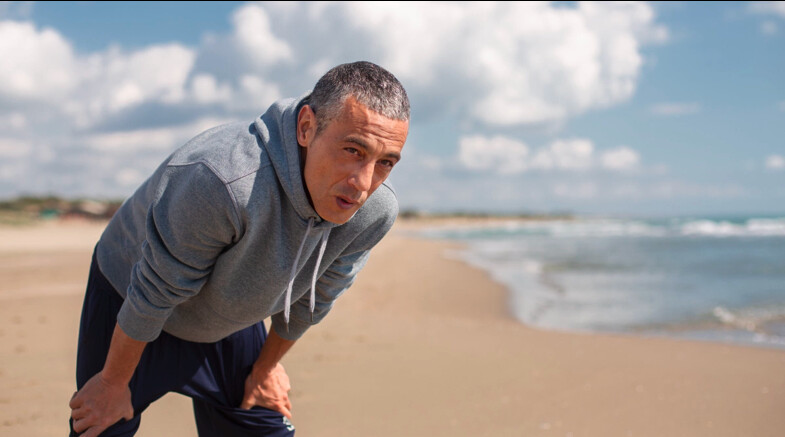
Or maybe not, according to a new study in Medicine & Science in Sports & Exercise that takes a fresh look at what it means to be out of breath. It turns out there are different subtypes of breathlessness. Your chest might feel tight; or your breathing muscles might feel overworked; or you might feel that you can’t get enough air in. That last one, sometimes called “air hunger” or (more scientifically) “unsatisfied inspiration” is usually associated with lung conditions like chronic obstructive pulmonary disease. But the new study finds that about a third of healthy adults experience air hunger during all-out exercise—and it’s the fittest people who are most susceptible.
The study, led by researcher (and accomplished mountain runner) Jordan Guenette and graduate student Olivia Ferguson of the University of British Columbia, reanalyzed earlier results from lung-function tests completed by 321 healthy adults between the ages of 19 and 40 in labs at the University of British Columbia and McGill University in Canada. Among the tests was an incremental cycle to exhaustion, after which subjects were given a list of 15 phrases that described subjective sensations of breathlessness and asked to pick which ones applied to them.
Four of the phrases corresponded to air hunger: “I cannot get enough air in,” “I cannot take a deep breath in,” “My breath does not go in all the way,” and “I feel a need for more air.” Those who picked at least three of those four phrases were classified as having air hunger. Healthy adults usually associate breathlessness with the perception that their breathing muscles are working really hard, rather than with air hunger. But to the surprise of the research team, 34 percent of the subjects fell into the air hunger category.
Air hunger doesn’t necessarily mean that you’re truly short of oxygen—but it feels that way, which is enough to create problems. There are two distinct dimensions of breathlessness: the sensory experience (what it feels like) and the affective/emotional response (how you react to that feeling). Air hunger is a sensory experience, but it’s tightly linked to a negative emotional response. No one likes to feel that they can’t get enough air in. In patients with lung disease, the feeling of air hunger is a major deterrent to exercise even when it doesn’t directly compromise exercise capacity.
To figure out if the same thing happens in healthy adults, the subjects were also asked to rate the discomfort in their legs on a scale of zero to ten, do the same for breathing discomfort, and make as estimate of how much their decision to give up in the exercise test was due to leg and breathing discomfort, respectively. Sure enough, breathing discomfort was higher in the air hunger group, and about half of them said that it played a part in their decision to quit, compared to less than 30 percent in the non-air hunger group.
One sign that this breathing discomfort wasn’t all in their heads is that the air hunger group had stronger markers of “critical inspiratory constraints” (CIC)—that is, limitations on their ability to breathe more deeply. When your body detects that carbon dioxide levels in your blood are rising, it automatically triggers deeper breathing to flush out the carbon dioxide and get more oxygen in. But if you have CIC, you’re at a point where it’s hard to inflate your lungs any further, so there’s a mismatch between your desire to inhale and your ability to do so. Sure enough, the people in the air hunger group had several indicators of more severe CIC. For example, they had a smaller peak inspiratory capacity (the maximum volume of air they could inhale), and a smaller increase of inspiratory capacity during exercise.
The next question is what determines who suffers from air hunger and CIC. One difference between the groups is that those with air hunger had, on average, higher VO2 max by 1.5 percent, and reached a higher peak power output by 3.4 percent. They were also breathing faster at exhaustion (50 breaths per minute compared to 47) and sucking in more air (120 liters per minute compared to 116). “Contrary to popular belief,” Guenette points out, “exercise training doesn’t improve lung capacity.” So one version of the story is that fitter people can push themselves harder for longer, but their lungs aren’t equipped to handle the higher load, so they’re more likely to approach their breathing limits.
On the other hand, while the differences in VO2 max are statistically significant, they’re pretty subtle. Could there be other factors that dictate who suffers from the feeling of air hunger—something in the structure of the lungs or the strength of respiratory muscles? Is it a function of how the brain and central nervous systems respond to a given level of oxygen and carbon dioxide in the blood? None of this is clear yet, and neither is the crucial question of whether there’s anything you can do about it. There’s been a lot of research over the years about the idea of training your breathing muscles (including some by Guenette), and one of the theories is that any performance benefits are more about changing your subjective response to the feeling of breathlessness rather than actually delivering more oxygen to your muscles. That might be one way of combating the feeling air hunger; another possibility is the asthma medication salbutamol, which Guenette hopes to study further.
For now, what I take from this study is that I need to rethink one of my standard pieces of advice to beginner runners. Feeling out of breath is one of the dominant sensations when you first start running, but I’ve always assured people that it’s a feeling you get used to, and not something that really limits your performance. It turns that, for at least some people, that’s not true. My sense is that the recent hype about “better breathing” has far outpaced the evidence, but it’s clear that we still have a lot to learn.
(04/21/2024) ⚡AMPby Outside Online
Kepchirchir breaks women-only world marathon record in London
Olympic champion Peres Jepchirchir smashed the women-only world record by 45 seconds at the TCS London Marathon, winning the World Athletics Platinum Label road race in 2:16:16* on Sunday (21).
In what was widely regarded as one of the deepest and highest-quality women’s fields ever assembled, the three-time world half marathon champion sprinted away from world record-holder Tigist Assefa, 2021 London winner Joyciline Jepkosgei and last year’s runner-up Megertu Alemu – all of whom finished inside 2:17 – to notch up her third victory in a World Marathon Majors race.
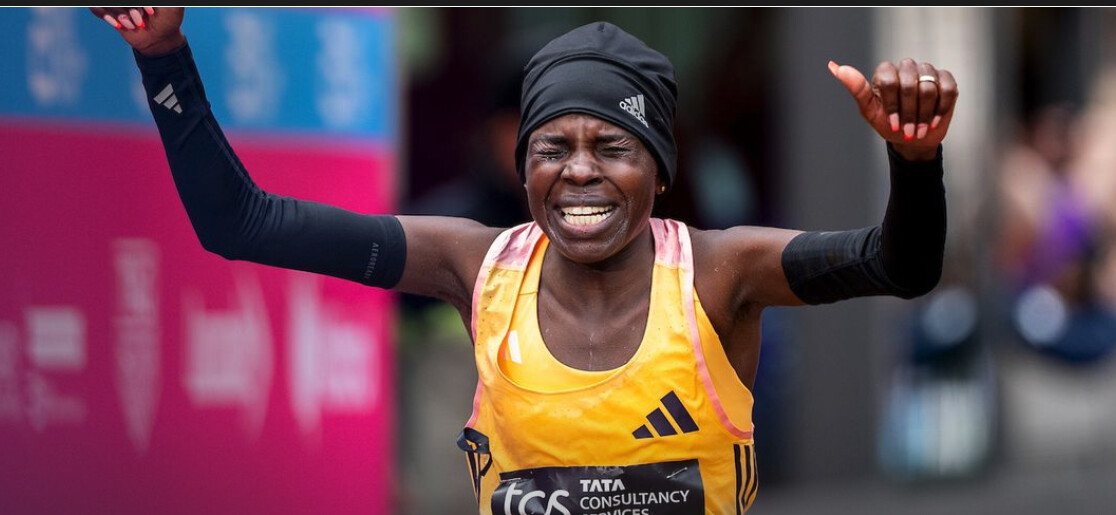
Jepchirchir’s compatriot Alexander Mutiso Munyao made it a Kenyan double, winning the men’s race in 2:04:01 to defeat Ethiopian distance legend Kenenisa Bekele by 14 seconds.
No secret had been made of the fact that breaking Mary Keitany’s women-only world record of 2:17:01 was the big target for the women’s race. With that at the forefront of their minds, a lead pack comprising all the big contenders soon detached themselves from the rest of the field and blazed through the first 5km in 15:44 – comfortably inside 2:13 pace.
They maintained that tempo through 10km, covered in 31:26, and at this point they were 67 seconds ahead of Ethiopia’s Tsige Haileslase, the closest challenger to the lead pack.
The front group – which included Assefa alongside past London winners Jepkosgei, Yalemzerf Yehualaw and Brigid Kosgei – got to 15km in 47:37. Soon after, Sheila Chepkirui – the runner-up in Berlin last year – started to drift off the pack.
Not long after passing the drinks station at the 20km point, 2019 world champion Ruth Chepngetich lost contact with the leaders. It meant that just seven women remained in the pack as they reached the half-way point in 1:07:04 – the second-fastest half-way split ever recorded in London, and putting them on schedule to smash the women-only world record by almost three minutes.
Kosgei was the next to drift back, and with the pacemakers having done their job, it left six women out in front: Jepchirchir, Assefa, training partner and Dubai marathon champion Tigist Ketema, 2022 London winner Yehualaw, 2021 London champion Jepkosgei, and 2023 London runner-up Megertu Alemu.
The sextet ran together through 25km (1:19:38) and 17 miles, but Ketema and Yehualaw were unable to hold on for much further and started to lose contact, leaving four women – Assefa, Jepchirchir, Jepkosgei and Alemu – to battle it out for the three podium places.
The difference between 25km and 30km, 16:18, was the slowest 5km section of the race. The lead quartet was either starting to feel the effects of their early efforts, or they were starting to bide their team for an anticipated surge in the closing stages.
With 1:44 on the clock, the four leading women managed to navigate their way around the two lead vehicles that had been forced to stop due to a wheelchair racer who was experiencing some technical difficulties.
Assefa and Jepchirchir both took turns testing the waters by making subtle surges to see how their opponents would respond, but their overall pace continued to drop and they reached 35km in 1:52:48, putting them on course for a 2:16 finish.They passed 40km in 2:09:13, still running side by side. It was clear that no one else other than these four would be claiming places on the podium, but predicting a winner – and, indeed, the athlete who’d miss out on the podium – was still impossible with less than two kilometres to go.
As the clock ticked to 2:15, with little more than a minute of running left, Alemu was finally dropped. Seconds later, Jepchirchir unleashed her trademark finish to leave behind Jepkosgei and Assefa.
The diminutive Kenyan charged through the finish line in 2:16:16, finishing seven seconds ahead of Assefa. Jepkosgei (2:16:24) and Alemu (2:16:34) followed soon after, making this the first marathon in which four women have finished inside 2:17.
Jepchirchir will now turn her attention to defending her Olympic title in Paris in less than four months’ time where she’ll aim to become the first ever back-to-back women’s marathon gold medallist in the history of the Games.
The men’s race played out in similar fashion with a surprisingly large group remaining together into the second half before the final few contenders were left to battle it out in the closing stages.The late Kelvin Kiptum’s world (2:00:35) and course (2:01:25) records were not being targeted by the elite men, but a lead pack of 12 nevertheless set off as a respectable pace, going through 5km in 14:35 and 10km in 29:03.
They remained together through 15km (58:20) with the likes of Munyao, Bekele, 2022 world champion Tamirat Tola and 2021 Chicago winner Seifu Tura all in the lead pack.
They reached half way in 1:01:29 with 10 men still running together, more than 80 seconds ahead of Britain’s Emile Cairess, who was running alone in 13th place. France’s Hassan Chahdi soon drifted off the lead pack, and eight men were in the pack at the 30km point (1:27:20).
With 1:30 on the clock, big changes started to happen. The lead pack was down to five men: Munyao, Bekele, Tola, Ethiopia’s Dawit Wolde and compatriot Milkesa Mengesha. Less than 10 minutes later, Tola and Wolde had dropped back, leaving Bekele, Munyao and Mengesha as the lead trio. Mengesha lasted five more minutes before he, too, succumbed to the pace, unable to stick with Munyao and the 41-year-old Bekele.
Just before the clock ticked over to 1:55, Munyao finally dropped multiple world and Olympic gold medallist Bekele, who was visibly struggling to match the Kenyan’s pace.
Munyao maintained his lead to the finish, eventually winning in 2:04:01 to Bekele’s 2:04:15, the fastest time ever by an athlete over the age of 40.
With several of the leading contenders dropping out in the closing stages, Cairess came through to take third place in 2:06:46 ahead of fellow Briton Mahamed Mahamed, who clocked 2:07:05, both setting huge PBs.
(04/21/2024) ⚡AMPby World Athletics
TCS London Marathon
The London Marathon was first run on March 29, 1981 and has been held in the spring of every year since 2010. It is sponsored by Virgin Money and was founded by the former Olympic champion and journalist Chris Brasher and Welsh athlete John Disley. It is organized by Hugh Brasher (son of Chris) as Race Director and Nick Bitel...
more...Tamirat Tola aims to follow New York success with victory in London Marathon
Tamirat Tola feels a carefully planned build-up will give him every chance of adding the London Marathon title to his success in New York.
The 32-year-old Ethiopian – world champion from 2022 in Oregon – clocked a new course record of two hours, four minutes and 58 seconds when he won in Manhattan during November last year.
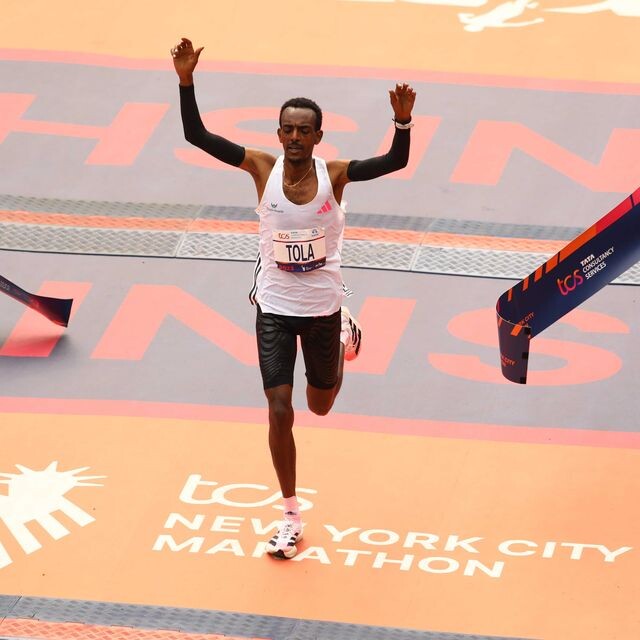
Tola hopes his meticulous preparations will allow him to again hit top form as he aims to be the first over the finish line on the Mall on Sunday afternoon, having come third last year.
Tamirat Tola of Ethiopia is the men's open-division winner, setting a course-record time of 2:04:58. #TCSNYCMarathon pic.twitter.com/VZRtRRrZxa
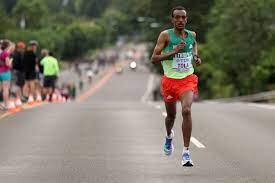
— TCS New York City Marathon (@nycmarathon) November 5, 2023
“(Winning in) London is not easy, but I worked hard to win New York and my training has all been OK since then, so I am ready,” said Tola, who also took the 2023 Great North Run title.
“Everything is good with what my coaches have prepared for me to win, so we can hope for a good result on Sunday.”
The late Kelvin Kiptum, who was killed in a car accident in February at the age of 24, set a new London Marathon record with victory last year.
While that mark of 2hrs 1min and 25secs is unlikely to be tested on Sunday, Tola is still confident of a swift pace.
“If we go together to help each other, then we will run with a better time,” Tola said.
“It depends on a pacemaker, but it is OK for me to go fast, and if it is a normal (pace) then that is also OK for me.”
Emile Cairess will lead Britain’s hopes in the elite men’s race, having finished sixth on his debut last year.
Cairess is aiming to better the Olympic qualifying mark to join training partner Phil Sesemann in the Team GB squad for Paris.
The 26-year-old, though, also has one eye on a long-term target of breaking Sir Mo Farah’s six-year-old British marathon record, which was set in Chicago.
“I have a time in my head. I will be trying to run maybe about three-minute kilometres,” Cairess said.
“Mo’s British record is something I definitely want to beat in the near future, but I am not looking at that this weekend.”
Scottish marathon record-holder Callum Hawkins will make his return in London following a number of injury setbacks, which included ankle surgery after the Tokyo Olympics.
Marc Scott, winner of the Great North Run in 2021, is set for a marathon debut, along with Mahamed Mahamed.
(04/20/2024) ⚡AMPTCS London Marathon
The London Marathon was first run on March 29, 1981 and has been held in the spring of every year since 2010. It is sponsored by Virgin Money and was founded by the former Olympic champion and journalist Chris Brasher and Welsh athlete John Disley. It is organized by Hugh Brasher (son of Chris) as Race Director and Nick Bitel...
more...Canadian Boston Marathon age-grouper shares tips for running as we age
The Halifax runner took up running in his early 60s, and ran his fourth Boston Marathon on Monday.
Sandy Rutledge began running in his early 60s; he has run the Boston Marathon four times. The Nova Scotian clocked an impressive 3:31:38 at Monday’s 128th running of the famous race, earning him second place for his division and top Canadian in that age bracket.
“It was a slower than normal Boston, with the heat,” Rutledge told Canadian Running after his race. “I backed it off and went a little slower than last year, because I didn’t want to push it and not finish.”
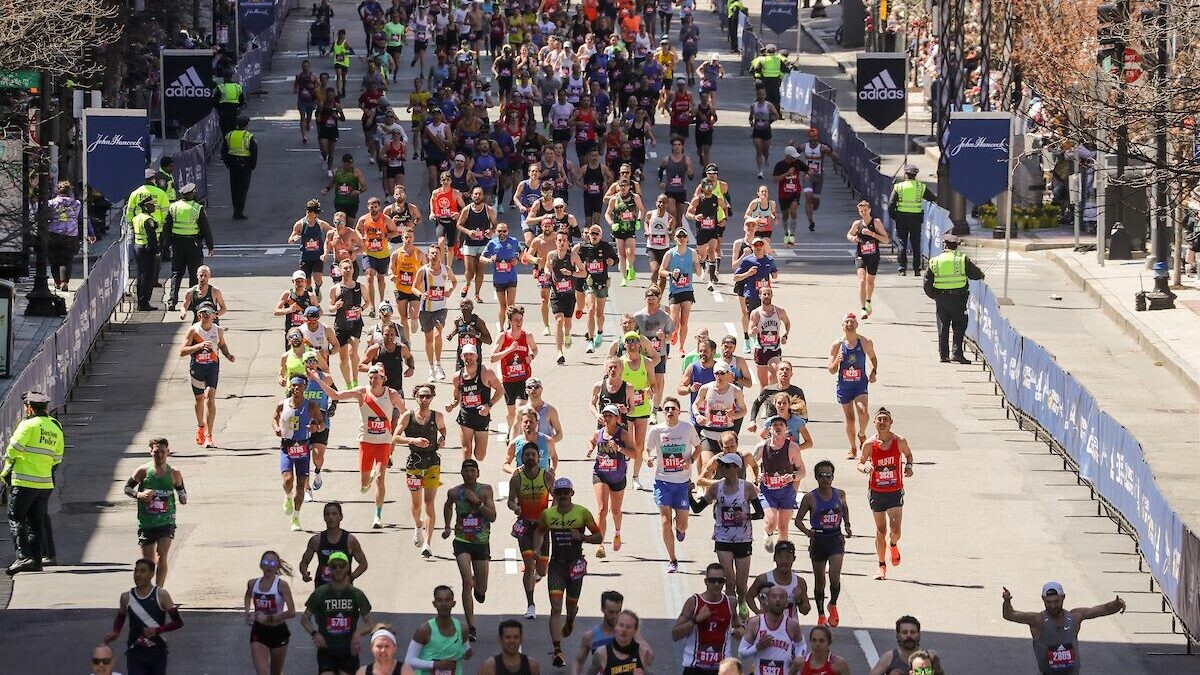
After a decade of running, Rutledge knows what he needs to do to stay competitive, but above all else, he’s looking at his longevity in the sport. “My goal is to run as long as I can,” he says. “In my 60s, I could run seven days a week and over 100 kilometres per week, but I’ve now backed that off to five days a week and lower volume,” he adds.
Rutledge has completed around 19 marathons and several shorter-distance races. And he has stayed relatively injury-free, thanks to a couple of key regimens that anchor his weekly training.
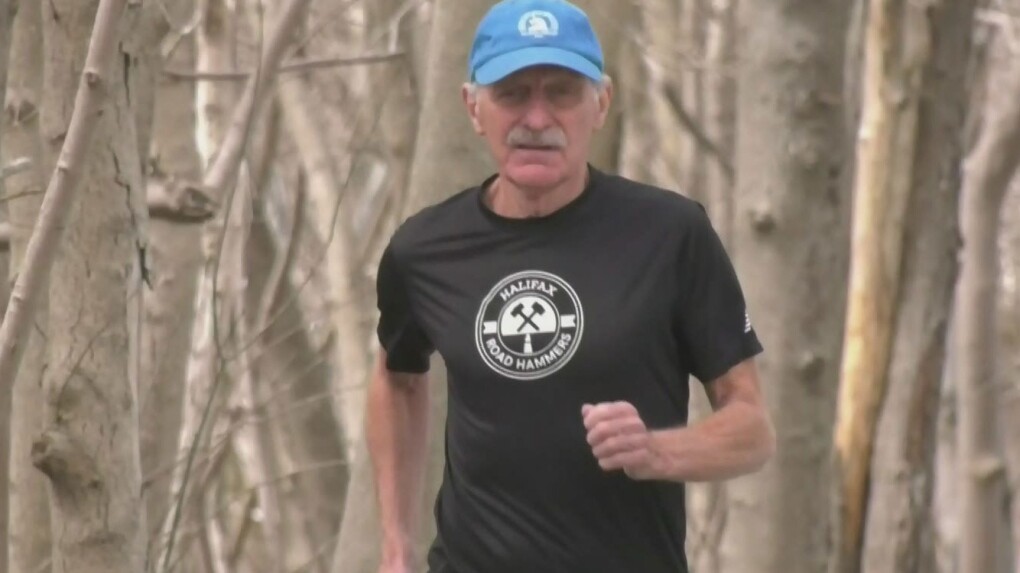
“I take Tuesdays entirely off running, and I do strength training,” he says, acknowledging that the consistency of these sessions has helped his healthy running streak. “I focus on the core in these… as we age, many people tend to develop back issues, and I’m no exception.”
Rutledge also shared that 20 to 30 minutes of daily stretching, often before his runs, has also played a big role in injury prevention.
As his career in real estate has wound down, Rutledge is grateful to running for helping him keep a daily routine, and a sense of purpose. “I wake up at 5 a.m.–I’m a morning person,” he says. “Running has brought me a sense of youth. I have continued doing most of the things I could do when I was younger, and I think running has done that for me.”
Having taken up running later in life than many other runners, Rutledge encourages anyone to give it a try if they’re curious, no matter their age. “I started really slow,” he says. “It began with walking and then adding in some running slowly… maybe a kilometre to start, and building up from there.”
Rutledge has no plans to slow down. “I’ve heard that most people have a 15-year life cycle in the marathon, and I’m 10 years in,” he says. “I’d like to keep running marathons into my 80s, but as long as I can keeping running five days a week, I’ll adjust the speed and the distances of my races, if I need to.”
Rutledge is looking forward to, hopefully, running the Athens Marathon later this year or next.
“That’s where it all began,” he says of the marathon. “I think we all owe it to the running gods to do that one at least once.”
(04/20/2024) ⚡AMPby Claire Haines
Boston Marathon
Among the nation’s oldest athletic clubs, the B.A.A. was established in 1887, and, in 1896, more than half of the U.S. Olympic Team at the first modern games was composed of B.A.A. club members. The Olympic Games provided the inspiration for the first Boston Marathon, which culminated the B.A.A. Games on April 19, 1897. John J. McDermott emerged from a...
more...Runners Disqualified After Competitor Was Allowed to Win Race
Three runners seemed to allow Chinese runner He Jie to finish ahead of them at the Beijing Half Marathon. All four have now been disqualified.
In video footage of the Beijing Half Marathon finish line, three runners abreast who are in the lead subtly slow their pace and one motions with his hand for He Jie of China to pass them and win the race. The video has gone somewhat viral as many running fans found issue with Jie being essentially given the win.
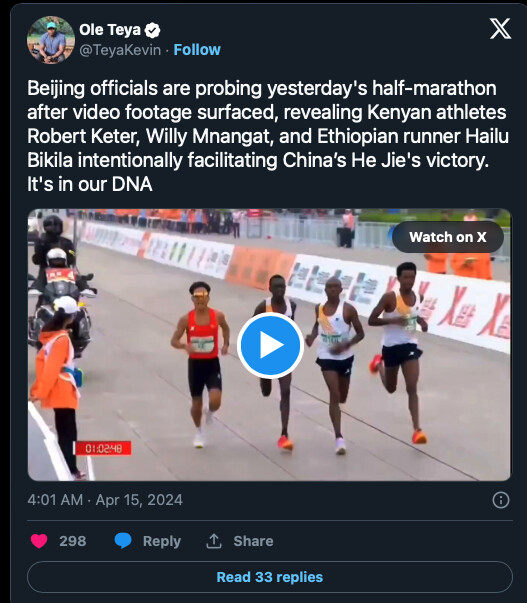
Jie ran together with the other men, Robert Keter and Willy Mnangat of Kenya and Ethiopian runner Dejene Hailu Bikila for the entire race, and Mnangat told BBC Sport that they were working as Jie’s pacers. “I was not there to compete,” Mnangat said. “It was not a competitive race for me.”
Mnangat said the three African runners, as well as a fourth who dropped out before the finish, were hired to help Jie, the 25-year-old Chinese national champion and record holder (2:06:57) for the marathon, to a Chinese half marathon record.
“I don’t know why they put my name on my bib/chest number instead of labeling it as a pacemaker,” Mnangat told the BBC. “My job was to set the pace and help the guy win but unfortunately, he did not achieve the target, which was to break the national record.”
He won in 1:03.44, missing the record by a little over a minute, while Mnangat, Keter, and Bikila tied for second place.
However, after the Beijing Sports Bureau launched an investigation into the circumstances around Jie’s half marathon finish, all four runners were disqualified and required to return their medals and award money. The special committee investigating the situation found that the main organizers of the race had not been made aware before the race that Jie would be running with pacers.
“We deeply and sincerely apologize to the world and to every part of society, that we did not discover and correct the mistakes in time at this race,” the committee said in a statement. As punishment, Zhong’ao Lupao Sports Management Co., the main organizer of the race is losing its right to host the Beijing Half Marathon.
(04/20/2024) ⚡AMPby Runner’s World






